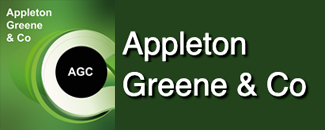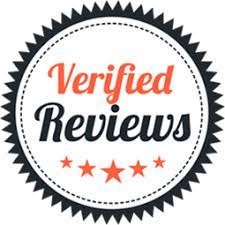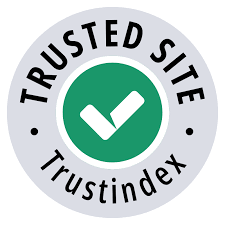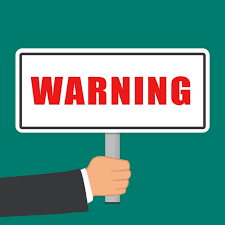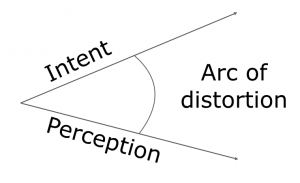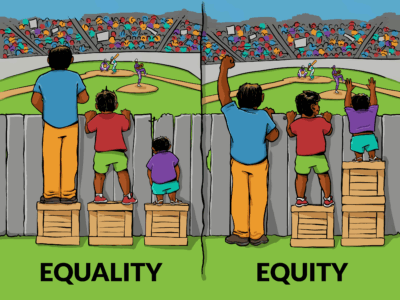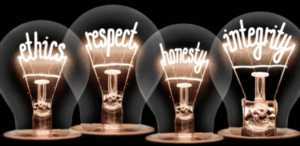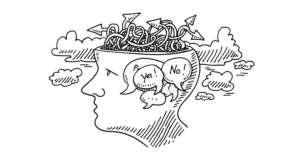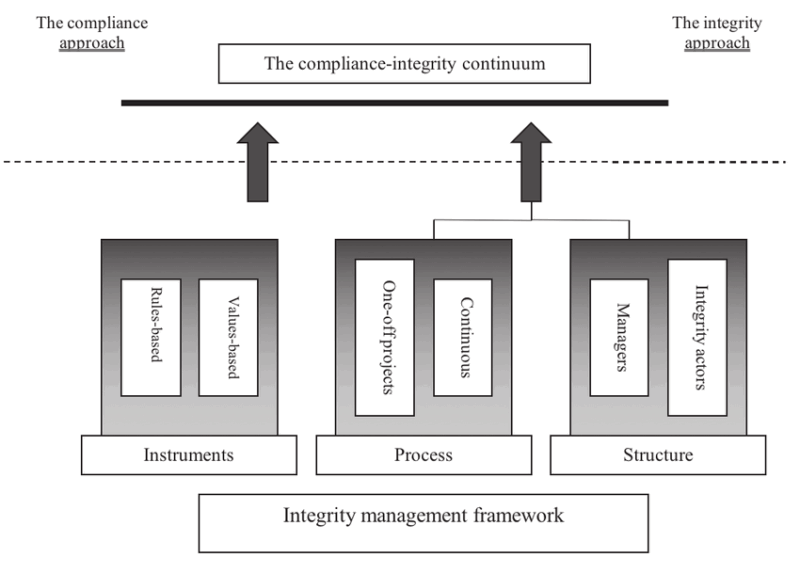Adaptive Leadership – Workshop 4 (Organizational Integrity)

The Appleton Greene Corporate Training Program (CTP) for Adaptive Leadership is provided by Dr. Wade Certified Learning Provider (CLP). Program Specifications: Monthly cost USD$2,500.00; Monthly Workshops 6 hours; Monthly Support 4 hours; Program Duration 12 months; Program orders subject to ongoing availability.
If you would like to view the Client Information Hub (CIH) for this program, please Click Here
Learning Provider Profile

Dr. Wade started his career serving 20 years in senior leadership positions with a focus on change management. He then excelled in the management consulting and leadership development industries for the past eight (8) years, first as an Executive Vice-President and then with his own leadership development company.
Dr. Wade been involved with leadership development, change management, and generational and cultural mega-trends and meta-narratives since the mid-90’s. He is a passionate leadership futurist and expert in adapting to generations, culture, and the future of leadership. As an expert at the forefront of the latest leadership development training, Dr. Wade’s subject matter and proven process will empower you and your organization to successfully develop the critical skills necessary to thrive in today’s leadership environment.
Dr. Wade has extensive experience training leaders in various sectors from healthcare to technology to finance and more. This course, and the subsequent subject matter, will guide course participants through many of the pitfalls and struggles in the modern leadership environment and enable them to master adaptive solutions. Each participant will feel inspired and will have gained practical understanding and actionable steps in relation to adaptive leadership.
MOST Analysis
Mission Statement
A fundamental principle in adaptive leadership is the construction of organizational integrity, which is sometimes referred to as organizational justice. Organizational integrity refers to how employees perceive honesty, transparency, and fairness in the workplace. During times of change, employees will need to feel a sense of safety and security from leaders to help traverse the uncertainty that comes with change. If employees do not feel a sense of transparency, honesty, and fairness they will grumble and complain, not just about the proposed changes, but about the leaders and leadership team themselves and their “poor handling” of the issues. An adaptive leader must therefore, intentionally foster a culture of honesty, humility, and psychological safety to help their team members feel a sense of wellbeing through this volatile time. Attempts at managing change often get derailed because leaders are not adept at building and communicating a sense of organizational integrity. Adaptive leaders will strive to implement the best strategies for the good of the organization. Furthermore, adaptive leaders must explore the best ways to communicate and implement adaptive changes. In this module, course participants will become well versed in building a culture of organizational integrity. The culture of the organization trumps well-intentioned plans. In the words of Peter Drucker, “Culture eats strategy for breakfast.” Participants will come away with a thorough understand of culture creation and the values that makeup organizational integrity. They will grasp the importance of transparent and honest communication and the need for the leaders themselves to live the organizational principles and values they promote. Course participants will be able to immediately implement their knowledge of culture and organizational integrity.
Objectives
01. Organizational Integrity: departmental SWOT analysis; strategy research & development. Time Allocated: 1 Month
02. Establishing Security : departmental SWOT analysis; strategy research & development. Time Allocated: 1 Month
03. Honesty Communication: departmental SWOT analysis; strategy research & development. Time Allocated: 1 Month
04. Organizational Fairness : departmental SWOT analysis; strategy research & development. Time Allocated: 1 Month
05. Organizational Humility: departmental SWOT analysis; strategy research & development. Time Allocated: 1 Month
06. Cultural Integrity: departmental SWOT analysis; strategy research & development. Time Allocated: 1 Month
07. Communicating Integrity: departmental SWOT analysis; strategy research & development. 1 Month
08. Leadership Integrity: departmental SWOT analysis; strategy research & development. Time Allocated: 1 Month
09. Adaptive Integrity : departmental SWOT analysis; strategy research & development. Time Allocated: 1 Month
10. Measuring Integrity: departmental SWOT analysis; strategy research & development. Time Allocated: 1 Month
11. Overcoming Barriers: departmental SWOT analysis; strategy research & development. Time Allocated: 1 Month
12. Sustainable Culture: departmental SWOT analysis; strategy research & development. Time Allocated: 1 Month
Strategies
01. Organizational Integrity: Each individual department head to undertake departmental SWOT analysis; strategy research & development.
02. Establishing Security : Each individual department head to undertake departmental SWOT analysis; strategy research & development.
03. Honesty Communication: Each individual department head to undertake departmental SWOT analysis; strategy research & development.
04. Organizational Fairness : Each individual department head to undertake departmental SWOT analysis; strategy research & development.
05. Organizational Humility: Each individual department head to undertake departmental SWOT analysis; strategy research & development.
06. Cultural Integrity: Each individual department head to undertake departmental SWOT analysis; strategy research & development.
07. Communicating Integrity: Each individual department head to undertake departmental SWOT analysis; strategy research & development.
08. Leadership Integrity: Each individual department head to undertake departmental SWOT analysis; strategy research & development.
09. Adaptive Integrity : Each individual department head to undertake departmental SWOT analysis; strategy research & development.
10. Measuring Integrity: Each individual department head to undertake departmental SWOT analysis; strategy research & development.
11. Overcoming Barriers: Each individual department head to undertake departmental SWOT analysis; strategy research & development.
12. Sustainable Culture: Each individual department head to undertake departmental SWOT analysis; strategy research & development.
Tasks
01. Create a task on your calendar, to be completed within the next month, to analyze Organizational Integrity.
02. Create a task on your calendar, to be completed within the next month, to analyze Establishing Security .
03. Create a task on your calendar, to be completed within the next month, to analyze Honesty Communication.
04. Create a task on your calendar, to be completed within the next month, to analyze Organizational Fairness .
05. Create a task on your calendar, to be completed within the next month, to analyze Organizational Humility.
06. Create a task on your calendar, to be completed within the next month, to analyze Cultural Integrity.
07. Create a task on your calendar, to be completed within the next month, to analyze Communicating Integrity.
08. Create a task on your calendar, to be completed within the next month, to analyze Leadership Integrity.
09. Create a task on your calendar, to be completed within the next month, to analyze Adaptive Integrity .
10. Create a task on your calendar, to be completed within the next month, to analyze Measuring Integrity.
11. Create a task on your calendar, to be completed within the next month, to analyze Overcoming Barriers.
12. Create a task on your calendar, to be completed within the next month, to analyze Sustainable Culture.
Introduction
Organizational Integrity is a critical pillar of adaptive leadership, particularly during times of uncertainty and transformation. It refers to the extent to which an organization consistently upholds values such as honesty, transparency, fairness, and accountability in both words and actions. While the term has evolved over time, its roots are found in disciplines such as organizational justice, ethics, and culture, all of which intersect to shape how employees experience trust, leadership credibility, and fairness within the workplace.

The Rise of Organizational Justice
The concept of organizational justice gained prominence in the late 20th century as scholars in organizational psychology began to systematically explore how perceptions of fairness influence employee behavior, motivation, and trust. Pioneering researchers like Jerald Greenberg and John Thibaut helped define the key dimensions of justice in the workplace:
• Procedural justice refers to the perceived fairness of the processes used to make decisions. Do employees believe that rules are applied consistently, that their voices are heard, and that decisions are free from bias?
• Distributive justice focuses on the fairness of outcomes—such as pay, promotions, or workloads—and whether these are distributed equitably based on input and performance.
• Interactional justice pertains to the quality of interpersonal treatment employees receive, especially in how respectfully and truthfully information is communicated by leaders.
These three components helped organizations understand that fairness is not just about end results, but about how people are treated along the way. A workplace that scores highly on all three is more likely to foster engagement, loyalty, and discretionary effort.
As this research matured, its application extended beyond academic interest to the realm of practical leadership and corporate governance. During the 1980s and 1990s, many organizations began linking justice to ethical conduct and trust-building. This was especially important as globalization, deregulation, and technological change introduced greater complexity and competition into the business environment. Trust became a form of currency—not only internally among employees, but externally with customers, investors, and the broader public.
Then, in the early 2000s, a wave of high-profile corporate scandals—including those involving Enron, WorldCom, and Arthur Andersen—exposed the devastating effects of unethical leadership and a lack of organizational integrity. These events revealed how fragile trust can be when leadership fails to align words with actions. Billions in shareholder value were lost, reputations were destroyed, and public trust in corporate leadership plummeted.
In response, there was a global push toward ethics reform in business. Regulatory changes such as the Sarbanes-Oxley Act in the U.S. were introduced to improve financial transparency and executive accountability. But beyond legal compliance, many organizations began codifying internal value systems, launching ethics programs, appointing Chief Ethics Officers, and embedding organizational justice principles into HR and leadership development practices.
This shift marked a key turning point: organizations began to understand that sustainable performance is deeply tied to perceived fairness and trust. Without a culture that supports open communication, ethical behavior, and consistent decision-making, even the most sophisticated business strategies can unravel.
For today’s adaptive leaders, the legacy of organizational justice research and post-scandal reforms serves as a reminder: integrity isn’t optional. It is a strategic imperative, especially in times of change when people are watching closely to see whether leaders uphold the values they profess.
Leading Through Change with Trust and Values
Today, organizational integrity is more than a moral ideal—it is a strategic asset. In a fast-changing business environment characterized by disruption, complexity, and diverse stakeholder expectations, employees and customers alike are attuned to how organizations behave, not just what they produce. A culture of integrity ensures that values are not merely slogans but living principles reflected in everyday actions, decision-making, and leadership behavior.
For adaptive leaders, cultivating organizational integrity is especially vital. Adaptive leadership, by nature, calls for navigating complex challenges that lack clear solutions. This often involves making tough decisions, confronting entrenched norms, and guiding teams through discomfort and ambiguity. In such conditions, people need psychological safety—a sense that they can trust leadership, express concerns, and feel heard. Without integrity, efforts at transformation can falter. Employees may resist change not because they dislike the change itself, but because they distrust the way it is being led.
Organizational integrity also contributes to long-term engagement, resilience, and innovation. When individuals perceive fairness, consistency, and ethical behavior, they are more likely to commit to shared goals, collaborate across silos, and go above and beyond in their roles. On the other hand, perceived hypocrisy or favoritism can erode morale and escalate into cultural dysfunction.
This workshop explores how adaptive leaders can intentionally shape cultures grounded in integrity. Participants will examine the values that underpin ethical workplaces, the communication styles that support transparency, and the leadership behaviors that build trust. The goal is not only to understand organizational integrity conceptually, but to learn how to operationalize it—especially during change, when credibility is most at stake.
The Business Case for Integrity
Organizational integrity is not just a philosophical or ethical ideal—it is a measurable driver of business success. In an era defined by rapid change, social transparency, and stakeholder scrutiny, integrity has become a foundational element of organizational performance, innovation, and brand trust. Leaders who invest in building a culture of integrity are not only doing what is right—they are also doing what is smart.
Performance and Productivity
Studies consistently show that workplaces perceived as fair, transparent, and ethically grounded perform better. When employees believe that leadership acts with integrity, they are more engaged, motivated, and committed. According to research by the Corporate Executive Board, companies with high-integrity cultures outperform others by as much as 10% in shareholder return. These environments foster psychological safety, enabling employees to contribute ideas, challenge norms, and take initiative without fear of unfair repercussions.
Trust and Retention
Trust is a currency in today’s knowledge economy, and organizational integrity is its backbone. When leaders consistently align their actions with organizational values, they build trust—not just within teams, but also across departments and stakeholder groups. Trusted organizations enjoy higher retention, lower absenteeism, and greater internal cohesion. A 2020 Edelman Trust Barometer report found that 73% of employees expect CEOs to act on societal issues, and that trust in leadership directly affects employee loyalty and advocacy. In contrast, perceived hypocrisy can lead to attrition, disengagement, and internal resistance to change.
Innovation and Risk-Taking
A culture rooted in integrity supports experimentation, idea-sharing, and innovation. When employees trust that their voices will be respected and their failures treated fairly, they are more likely to take calculated risks and offer creative solutions. Integrity fosters an open environment where feedback flows freely and diverse perspectives are welcomed.

Case Study: Patagonia
Patagonia is a compelling example of how organizational integrity can fuel innovation, employee engagement, and brand loyalty. Known for its strong commitment to environmental and social responsibility, Patagonia embeds its values into every layer of its operations—from supply chain transparency to environmental activism. The company encourages employees to challenge the status quo, question business practices, and propose mission-aligned innovations that contribute to both business success and social impact.
One notable initiative was the launch of the Worn Wear program, which promotes repair and reuse of outdoor clothing to reduce consumer waste. This idea emerged from internal conversations about sustainability and was championed by employees who believed the brand should model responsible consumption. Rather than viewing this program as a threat to sales, Patagonia embraced it as a reflection of its integrity-driven mission.
The result is a purpose-led culture where innovation is not only welcomed, but expected. This alignment between values and action has strengthened employee morale and built deep trust with customers. Patagonia’s transparency, ethical stance, and environmental leadership have helped it stand out in a crowded market, proving that integrity can be both a moral compass and a competitive advantage.
Brand Reputation and Crisis Resilience
Organizational integrity also plays a critical role in external perception. Brands seen as ethical and authentic tend to earn stronger customer loyalty, attract top talent, and enjoy goodwill in times of crisis. Conversely, breaches of integrity can cause long-term reputational damage. The collapse of Volkswagen’s diesel emissions cover-up, for instance, not only cost billions in fines but severely tarnished public trust. Similarly, Facebook (now Meta) faced global backlash over data privacy concerns, sparking debates around corporate responsibility and user rights.
The business case for integrity is clear: it enhances performance, deepens trust, unlocks innovation, and protects brand value. Adaptive leaders must view integrity not as an abstract value but as a strategic tool—one that sustains organizational health and resilience in the face of complexity. In doing so, they cultivate not only a productive workforce but a purpose-driven legacy built on trust and transparency.
The Future of Organizational Integrity
As the business landscape becomes increasingly complex, globalized, and socially conscious, organizational integrity is poised to take on an even more central role in how companies operate, compete, and lead. No longer confined to the realm of compliance or ethics programs, integrity is becoming a dynamic, strategic capability—one that organizations must actively cultivate to earn trust, attract talent, and sustain innovation in a rapidly evolving world.
One of the most significant drivers shaping the future of organizational integrity is radical transparency. With the rise of digital platforms, whistleblowing forums, and real-time reporting, businesses are under constant public scrutiny. Stakeholders—from consumers to employees to investors—now have unprecedented access to information, and they expect organizations to act consistently with their stated values. In this new era, integrity can’t be managed through carefully crafted PR statements; it must be lived and demonstrated in day-to-day decisions, internal policies, and leadership behavior.
In parallel, younger generations entering the workforce are raising the bar for integrity-driven leadership. Millennials and Gen Z professionals place high importance on values alignment, ethical decision-making, and corporate social responsibility. These employees are more likely to question leadership, demand transparency, and leave organizations whose actions contradict their messaging. For forward-looking companies, this generational shift represents an opportunity—not a threat—to reimagine workplace culture with integrity at its core.
The future will also require integrity to be more inclusive and intersectional. Organizations can no longer separate ethical behavior from broader social dynamics like equity, inclusion, and environmental sustainability. Integrity must expand to account for how fairly people are treated across lines of race, gender, ability, and background, and how organizational practices impact the wider community and planet. This holistic view demands that leaders confront difficult questions, acknowledge blind spots, and continuously learn in partnership with diverse stakeholders.
Technological change is another factor reshaping integrity’s future. As artificial intelligence, automation, and data analytics become embedded in decision-making, questions of fairness, bias, and accountability grow more complex. Ethical frameworks will need to evolve to ensure that technology serves human interests rather than undermines them. Companies that proactively embed ethical oversight into product design, data governance, and algorithmic transparency will distinguish themselves as integrity-driven innovators.
Finally, the future of organizational integrity will be defined by adaptive leadership—the ability of leaders to model humility, respond with agility, and prioritize long-term trust over short-term gain. As crises and disruptions become more frequent, stakeholders will look for signs of consistency, honesty, and care in how organizations respond. Leaders who can navigate uncertainty with transparency, courage, and principle will set the new standard for organizational excellence.
In summary, the future of organizational integrity is both challenging and promising. It calls for deeper alignment between purpose and practice, stronger ethical leadership, and a redefinition of success that values trust, inclusion, and sustainability. Organizations that rise to this challenge won’t just survive—they’ll earn the enduring respect and loyalty of those they serve.
Executive Summary
Chapter 1: Organizational Integrity
This chapter introduces organizational integrity as a foundational principle of adaptive leadership. Integrity is more than individual honesty—it is the alignment between an organization’s values, behaviors, and systems. In environments of change and uncertainty, integrity becomes essential for building trust, psychological safety, and sustained engagement. Leaders who demonstrate fairness, transparency, and consistency create cultures where people feel secure, heard, and motivated to contribute—critical conditions for navigating complex, adaptive challenges.
Participants will first explore what organizational integrity truly means. While often mistaken for personal ethics, integrity in an organizational context is about how consistently an organization lives its stated values through its policies, decisions, and cultural norms. Integrity becomes visible in how leaders handle mistakes, deliver feedback, and uphold fairness across the board. When these values are upheld, they foster credibility and trust; when they are violated, resistance, cynicism, and disengagement follow.
The chapter then connects integrity to psychological safety and trust—two vital elements for high-performing, resilient teams. Participants will learn how leadership behavior sets the tone for openness, inclusion, and risk-taking. Integrity, when practiced consistently, empowers employees to speak up, offer ideas, and admit mistakes without fear of judgment.
The chapter also examines how integrity directly influences change readiness and employee engagement. When employees believe leadership is acting with integrity, they are more likely to buy into change efforts. Engagement rises when people trust that change is being led fairly and transparently.
Finally, participants will learn to recognize signals of integrity failure—such as inconsistent messaging, lack of accountability, or suppressed dissent. These red flags erode trust and can compromise performance, innovation, and morale if left unaddressed.
By the end of this chapter, participants will be equipped to identify where integrity exists (or is lacking) in their own organizations. They will understand the critical role integrity plays in leading through complexity, and begin developing the awareness and practices needed to cultivate high-integrity environments. This sets the stage for the deeper leadership work to follow in the program.

Chapter 2: Establishing Security
In times of adaptive change, one of the most pressing needs for employees is a sense of security—the feeling that, even as systems and structures evolve, they remain grounded in something stable and trustworthy. Change brings with it ambiguity, and without clear leadership, people can become anxious, confused, or disengaged. This chapter explores how leaders can intentionally foster stability and predictability by practicing organizational integrity and demonstrating consistency in words, actions, and decisions.
Participants will first explore why security matters during adaptive change. Unlike technical change, adaptive challenges require people to let go of what they know and embrace the unfamiliar. This emotional disruption often leads to fear-based behavior unless leaders create an environment of safety and reassurance. Establishing security does not mean eliminating discomfort—it means providing enough clarity and consistency to help people move forward with confidence.
Next, the chapter examines how organizational integrity supports stability. When leaders act in alignment with values, apply policies fairly, and communicate honestly, they create a sense of reliability—even when circumstances remain fluid. Integrity provides a steady framework that reassures people that they won’t be blindsided or overlooked.
 The chapter then explores the power of consistent messaging. In uncertain times, consistent communication helps employees stay focused and reduces speculation. Leaders will learn how to reinforce core messages across all levels of the organization and how values-driven communication builds trust—even when answers are incomplete.
The chapter then explores the power of consistent messaging. In uncertain times, consistent communication helps employees stay focused and reduces speculation. Leaders will learn how to reinforce core messages across all levels of the organization and how values-driven communication builds trust—even when answers are incomplete.
Finally, participants will learn to recognize and respond to signs of employee insecurity. Insecurity may appear through withdrawal, hyper-criticism, rumor-spreading, or hesitation to contribute. Leaders must learn to spot these subtle signals and respond with empathy, visibility, and reassurance. Offering clarity where possible—and acknowledging ambiguity when necessary—builds credibility and helps restore confidence.
Throughout the lesson, participants will reflect on how their own leadership behavior can influence the emotional climate of their teams. They will gain practical tools for reinforcing a secure environment, managing communication, and aligning their actions with the organization’s values.
By the end of this chapter, participants will understand that creating a secure environment is not about controlling outcomes—it’s about reinforcing stability through integrity, consistency, and care. These are essential leadership practices that help people stay grounded, engaged, and ready to navigate the challenges of adaptive change.

Chapter 3: Honesty Communication
In times of adaptive change, honest communication becomes one of the most vital leadership tools for maintaining trust, clarity, and engagement. This chapter explores honesty not just as a personal virtue, but as a strategic leadership behavior—one that demonstrates integrity, builds credibility, and creates stability, even when full certainty is not available.
Participants will begin by exploring why honesty matters. In high-pressure, evolving situations, employees don’t expect leaders to have all the answers—they expect them to be truthful about what is known, what is uncertain, and what the organization is doing to move forward. Honest communication affirms respect, enables psychological alignment, and prevents the misalignment and confusion that often arise when messages are vague or overly polished.
The chapter then examines the cost of withholding or distorting information. From speculation and disengagement to the erosion of trust, communication pitfalls can quickly destabilize a change effort. Leaders will learn how silence, inconsistency, or misleading messaging—even when well-intentioned—can create lasting damage to morale and cohesion.
To address this, participants will gain practical techniques for honest, effective communication during uncertainty. This includes acknowledging what’s unknown, using plain and compassionate language, encouraging two-way dialogue, and aligning communication across leadership levels. These skills help reduce fear, manage expectations, and foster an environment where employees feel respected and informed.
Next, the module focuses on balancing candor with compassion—a crucial skill for delivering difficult news. Being honest doesn’t mean being harsh; it means communicating clearly while recognizing and validating the emotional impact on others. Leaders will explore how to prepare thoughtfully, deliver difficult messages with empathy, and remain present and available for ongoing support.
Throughout the chapter, real-world examples and reflective exercises help ground the learning in lived experience. Case studies highlight both the risks of dishonest communication and the power of honest leadership during uncertain times.
By the end of this session, participants will understand how honesty reinforces organizational integrity, reduces confusion, and strengthens relationships. They will be equipped with the mindset and tools to communicate truthfully, even in complex and emotionally charged situations—fostering a culture of trust that is essential for adaptive leadership to succeed.

Chapter 4: Organizational Fairness
In adaptive leadership, fairness is not just an ethical principle—it’s a strategic practice that shapes how people interpret change. During periods of uncertainty, employees don’t only assess what decisions are made, but how and why they are made. When leadership actions are perceived as fair, people are more likely to remain engaged, trust leadership, and contribute positively to the organization’s transformation. Conversely, perceptions of unfairness—whether in workload distribution, opportunity access, or recognition—can quickly erode morale, trigger resistance, and fracture cohesion.
This chapter explores fairness as a visible demonstration of integrity, emphasizing that equitable leadership is not about treating everyone the same, but about meeting people where they are. Participants will learn to differentiate between equity and equality, applying this understanding to real-world scenarios where people have diverse needs, challenges, and contributions. The chapter also addresses fairness in resource allocation—an especially sensitive task during change and scarcity—and provides strategies for making transparent, values-based decisions that maintain credibility and trust.
 Another core theme is how fairness influences team morale. When employees feel respected, included, and fairly treated, trust deepens, motivation strengthens, and a sense of belonging grows. Leaders will explore how consistent, inclusive practices help maintain these conditions and prevent disengagement, especially among underrepresented groups.
Another core theme is how fairness influences team morale. When employees feel respected, included, and fairly treated, trust deepens, motivation strengthens, and a sense of belonging grows. Leaders will explore how consistent, inclusive practices help maintain these conditions and prevent disengagement, especially among underrepresented groups.
Realistic case studies, reflective questions, and practical tools help participants apply fairness in complex leadership contexts—such as budget cuts, restructuring, and evolving team roles. The chapter also encourages leaders to close the gap between intention and perception by clearly communicating the rationale behind decisions, welcoming feedback, and adjusting approaches when unintended impacts arise.
Participants will leave with a deeper understanding that fairness is not static—it’s relational, visible, and responsive. It requires empathy, transparency, and consistency. When fairness is perceived, it becomes a powerful driver of resilience, trust, and engagement—essential conditions for navigating change successfully.
By the end of the chapter, leaders will be equipped to embed fairness into everyday leadership decisions, ensuring that their actions align with values, foster cohesion, and promote a workplace where all employees feel respected, valued, and supported during change.

Chapter 5: Organizational Humility
This chapter explores humility as a defining strength of adaptive leadership—especially in times of change and complexity. Far from being a sign of weakness, humility is reframed as a core leadership capability that builds trust, fosters collaboration, and strengthens organizational integrity. Participants will learn that humility is not about modesty for its own sake, but about being self-aware, open to feedback, and grounded in a shared purpose.
The module begins by redefining strength in leadership. Traditional models often prize certainty and authority, but in adaptive contexts, where ambiguity and rapid change are the norm, the ability to admit limits, invite diverse input, and learn publicly becomes essential. Humble leaders foster psychological safety, empowering teams to speak up, innovate, and take risks without fear.
Participants will also explore how humility is demonstrated through transparent acknowledgment of mistakes. Leaders who own their missteps and act on them with sincerity build credibility and model accountability. Case examples, like Satya Nadella’s strategic redirection at Microsoft, highlight how vulnerability can serve as a leadership asset—not a liability.
The chapter then shifts to humility in action, emphasizing inclusive decision-making and shared success. Leaders are encouraged to shift from ego-driven authority to an “ecosystem” mindset—where insights come from all levels, and success is distributed across the team. Participants will see how this approach fosters stronger cohesion and long-term adaptability, with leaders like Jacinda Ardern providing a global benchmark.
Finally, humility is examined as a daily leadership habit. The chapter outlines actionable practices such as reflective self-awareness, generous credit-sharing, regular feedback loops, and empowering others to lead. These small, consistent behaviors embed humility into everyday leadership and signal a culture of integrity and continuous learning.
Throughout the chapter, participants will engage with real-world case studies, personal reflection prompts, and guided exercises designed to help them evaluate and expand their own humility as leaders. They’ll be challenged to confront ego-driven habits, model authenticity, and build inclusive environments where others can thrive.
By the end of the module, participants will understand humility not just as a personality trait, but as a strategic, relational, and ethical foundation for leadership. In a world where authority is no longer enough, humble leaders lead with credibility, connection, and the courage to grow. This chapter equips participants with the tools to cultivate that kind of leadership from the inside out.

Chapter 6: Cultural Integrity
This module explores cultural integrity—the alignment between an organization’s stated values and the behaviors, decisions, and systems that shape daily life. Culture, though often invisible, plays a defining role in how people work, interact, and respond to change. When that culture aligns with integrity—emphasizing honesty, fairness, and transparency—it becomes a powerful driver of trust, employee engagement, and long-term success.
Peter Drucker’s quote, “Culture eats strategy for breakfast,” is a central concept in this module. Even the most well-designed strategies will fail if they are not supported by the organization’s cultural norms. Culture determines whether change is embraced or resisted, whether collaboration flourishes or silos persist, and whether employees feel safe to innovate or fear making mistakes. Leaders must therefore align cultural conditions with strategic intentions, especially during periods of adaptive change.
 Participants will examine signs of cultural misalignment, such as when organizations say they value transparency but operate in secrecy, or promote collaboration while rewarding individualism. These contradictions erode trust and credibility. In contrast, cultural integrity helps guide decisions and behaviors under pressure, reinforcing shared purpose and enabling ethical, effective responses to change.
Participants will examine signs of cultural misalignment, such as when organizations say they value transparency but operate in secrecy, or promote collaboration while rewarding individualism. These contradictions erode trust and credibility. In contrast, cultural integrity helps guide decisions and behaviors under pressure, reinforcing shared purpose and enabling ethical, effective responses to change.
The module provides practical tools for diagnosing cultural integrity. These include employee surveys, focus groups, 360-degree feedback, and audits of everyday practices—from promotion criteria to communication norms. Participants will also explore recognized frameworks like the Barrett Values Assessment and Denison Culture Model to benchmark alignment and track progress over time.
Importantly, cultural integrity is not about perfection—it’s about congruence. Leaders who acknowledge gaps between values and practice, and work openly to address them, demonstrate humility and credibility. Through intentional modeling, listening, and systems alignment, they shape cultures where integrity is not just a statement but a lived experience.
By the end of the module, participants will understand how to evaluate their organization’s cultural landscape, identify misalignments, and use strategic tools to foster a culture rooted in integrity. This cultural foundation becomes essential for leading adaptive change, building resilient teams, and earning the trust of both employees and stakeholders.
In today’s uncertain environments, integrity-driven culture is not just an ethical advantage—it’s a strategic imperative.

Chapter 7: Communicating Integrity
This chapter explores how communication becomes a cornerstone of leadership integrity—especially during times of uncertainty, organizational change, or adaptive challenge. It emphasizes that integrity isn’t only about what leaders do—it’s also about how they communicate: clearly, consistently, and with respect. Participants will learn how to align language with values, convey difficult truths with empathy, and reinforce trust through open and transparent dialogue.
The module begins by examining Communicating with Consistency, the foundation of credibility. When leaders consistently align their words with their actions and stated values, they create a sense of reliability and trust. Conversely, when there’s a gap—known as the “say-do gap”—employees grow skeptical, reducing engagement and morale. Leaders will explore how to keep messaging consistent across platforms, departments, and contexts while remaining adaptable during changing circumstances.
Next, the module addresses Navigating Difficult Conversations with Respect and Transparency. Participants will learn techniques to deliver challenging news—such as feedback, organizational shifts, or performance concerns—in ways that preserve dignity and trust. Through practical frameworks and examples, they’ll explore how to be honest without being harsh, and how to approach conversations with empathy, clarity, and accountability.
In Messaging During Uncertainty and Organizational Change, the focus shifts to the leadership imperative of timely, transparent communication. Participants will examine why silence or sugarcoating during change creates confusion and mistrust. They’ll explore strategies for anchoring messages in organizational purpose, addressing emotional responses, and maintaining communication momentum through regular updates and two-way channels.
The chapter also explores Building Psychological Safety Through Honest Communication, showing how trust flourishes when employees feel safe to speak up, share ideas, or admit mistakes. Leaders will learn how vulnerability, clarity, and respectful feedback loops help foster a culture where voices are heard and valued.
Throughout the module, participants engage with real-world case studies, interactive exercises, and communication simulations to apply their learning. By the end of the chapter, leaders will understand how integrity in communication reinforces organizational values, builds credibility, and enables adaptive success. They will leave with actionable tools to lead conversations that are not only informative—but inspiring, unifying, and grounded in ethical leadership.

Chapter 8: Leadership Integrity
This chapter focuses on the critical role leaders play in upholding and modeling organizational values. Integrity is not a passive leadership trait—it’s an active, visible practice that builds trust, drives accountability, and reinforces the credibility of both the leader and the organization. Participants will explore how integrity is expressed not only through formal statements or policies, but through the daily decisions, behaviors, and communication styles of leadership.
We begin by examining what it means to “walk the talk.” Leaders set the cultural tone by demonstrating values in action—whether through how they give feedback, manage conflicts, or make decisions under pressure. This alignment between values and behavior builds credibility. In contrast, when a leader’s actions contradict the values they promote, a damaging “integrity gap” emerges, eroding employee engagement and fueling cynicism.
 The module also addresses leadership under pressure. Crises and moments of change are the ultimate tests of integrity. Leaders will reflect on how they respond during uncertainty—do they uphold fairness and transparency, or fall into shortcuts and avoidance? Real-world case studies will illustrate the long-term consequences of both approaches.
The module also addresses leadership under pressure. Crises and moments of change are the ultimate tests of integrity. Leaders will reflect on how they respond during uncertainty—do they uphold fairness and transparency, or fall into shortcuts and avoidance? Real-world case studies will illustrate the long-term consequences of both approaches.
To turn insight into action, the chapter guides participants through the creation of personal accountability plans—structured tools for self-assessment and behavioral alignment. Leaders will identify their core values, translate them into daily leadership commitments, and explore reflection methods and feedback loops to strengthen consistency.
By the end of the session, participants will:
• Understand how integrity shapes culture and trust.
• Identify behaviors that close or widen the integrity gap.
• Learn how to maintain ethical leadership during crises.
• Build a sustainable plan for personal accountability.
Ultimately, this chapter empowers leaders to embody the values they promote—not just in principle, but in practice. Integrity becomes more than an ideal; it becomes a leadership habit that defines tone, builds resilience, and ensures that values are lived at every level of the organization.

Chapter 9: Adaptive Integrity
In volatile and disruptive environments, leadership integrity becomes a critical stabilizer. This chapter explores the importance of upholding core values during times of uncertainty, when ethical standards are most vulnerable to compromise. Leaders are often required to make swift, high-stakes decisions during organizational change—be it market shifts, restructuring, or crisis situations. These moments can either erode trust or solidify it, depending on how transparently and ethically decisions are made.
Participants will examine the role of integrity as a compass that guides behavior when clarity is limited. Acting with honesty, consistency, and fairness during disruption helps reduce anxiety, strengthen psychological safety, and reinforce organizational culture. Case examples and reflective insights reveal how poor integrity during change can damage morale and credibility, while principled leadership builds resilience and trust.
The chapter highlights common integrity dilemmas that emerge during disruption, such as balancing transparency with confidentiality, navigating layoffs, avoiding favoritism, and aligning rapid change with long-standing values. It explores how these ethical tensions are rarely black and white—but require thoughtful consideration and courage.
To help leaders respond with integrity under pressure, the module introduces practical strategies for ethical decision-making. These include slowing down decision pace, applying a “values filter,” seeking diverse perspectives, and separating emotion from action. It also emphasizes the importance of documenting rationale and protecting space for dissenting voices—ensuring that ethical leadership is not just modeled, but also encouraged throughout the organization.
Interactive scenarios and discussion prompts give participants the opportunity to practice applying these tools in realistic, high-pressure contexts. They’ll explore how to maintain alignment between personal values, organizational mission, and stakeholder needs—even when outcomes are uncertain.
Ultimately, participants will leave with a deeper understanding that integrity is not just a leadership trait—it is an active discipline. It must be practiced intentionally, especially when stakes are high. Through this module, leaders will build the confidence and capacity to lead ethically, consistently, and transparently through any disruption—becoming anchors of trust and credibility in their organizations.

Chapter 10: Measuring Integrity
In this chapter, participants will explore how integrity can be measured as a practical, strategic element of organizational success—not just as a philosophical value. While integrity is often seen as cultural or personal, organizations that aim to operate ethically and adaptively must learn to evaluate how well their values are reflected in actual behavior, systems, and decisions.
The session begins by introducing frameworks that help leaders assess integrity in structured and repeatable ways. These frameworks examine key dimensions such as leadership behavior, decision-making processes, employee experience, policy alignment, and communication culture. Leaders will explore established models like the Ethics Resource Center’s Ethics Framework and the Integrity Continuum, as well as customized tools that reflect their organization’s unique mission and values.
 Participants will then learn how to define specific indicators and metrics that reflect values in action—such as transparency, fairness, and accountability. These indicators go beyond checklists, incorporating both quantitative data (e.g., ethics report submissions, survey responses) and qualitative insights (e.g., personal stories, behavioral observations). By translating abstract values into measurable components, organizations gain clarity on how integrity shows up—or falls short—across different levels.
Participants will then learn how to define specific indicators and metrics that reflect values in action—such as transparency, fairness, and accountability. These indicators go beyond checklists, incorporating both quantitative data (e.g., ethics report submissions, survey responses) and qualitative insights (e.g., personal stories, behavioral observations). By translating abstract values into measurable components, organizations gain clarity on how integrity shows up—or falls short—across different levels.
The module also explores how to build and implement custom integrity evaluation tools. Participants will design assessments that use plain language, mix anonymous feedback with targeted insights, and allow for adaptation across departments. Through this, they’ll ensure the tools reflect their organization’s language, priorities, and ethical expectations.
A major focus is placed on identifying integrity gaps—where stated values don’t align with daily practices. Through employee feedback, leadership reviews, and policy audits, participants will learn how to surface discrepancies, understand root causes, and take targeted actions to restore trust and alignment.
Finally, the chapter reinforces that integrity measurement must be ongoing. It’s not about assigning blame, but about reinforcing alignment between what an organization says and what it does. By embedding clear metrics and regular review processes, leaders can strengthen culture, build trust, and demonstrate that integrity is not aspirational—it’s operational, measurable, and essential to long-term success.
Participants will leave this module equipped to develop their own integrity evaluation plans, ready to lead with transparency, accountability, and authenticity across their organizations.

Chapter 11: Overcoming Barriers
This chapter explores one of the most critical, yet difficult, aspects of maintaining integrity in organizations: overcoming the real-world barriers that can derail ethical intentions. While many companies espouse integrity as a core value, executing it consistently across systems, behaviors, and decisions requires more than good intentions. It demands a clear understanding of what gets in the way—and the tools to address those challenges with strategy and courage.
Participants will begin by identifying common integrity barriers such as misaligned incentives, leadership inconsistency, fear of retaliation, and cultural contradictions. These barriers often arise not from malicious behavior but from organizational blind spots, systemic complexity, and pressure to prioritize short-term results over long-term values.
The module then addresses internal resistance, showing how skepticism, disengagement, or passive opposition can derail ethical initiatives. Leaders will learn how to recognize resistance early, engage in transparent dialogue, and co-create solutions with staff to foster buy-in and psychological safety.
The chapter also focuses on rebuilding trust after an integrity breach. Trust, once broken, requires clear accountability, open acknowledgment of harm, and systemic follow-through. Participants will learn how to take visible, consistent steps toward repair, while involving employees in restoring ethical culture.
Next, the chapter explores systemic issues that quietly undermine values—such as outdated reward structures or decision-making silos—and provides guidance on how to diagnose and redesign these systems. Practical strategies for aligning structures, policies, and resource allocation with core values are offered, reinforcing that integrity must be supported by operations, not just statements.
Throughout, participants are encouraged to see integrity as a dynamic practice, not a static goal. Integrity thrives when challenges are named and addressed honestly. It falters when leaders assume that declarations alone are enough.
The chapter concludes with the reminder that overcoming barriers to integrity is about persistence, not perfection. Through open communication, courageous leadership, and systemic alignment, organizations can repair trust, reduce resistance, and build cultures where doing the right thing is expected—and supported.
Leaders will leave this module equipped with diagnostic tools, case examples, and actionable strategies to address the ethical realities of their work environments. They’ll be better prepared to lead with clarity and compassion, even when integrity is tested.

Chapter 12: Sustainable Culture
The final chapter of this program focuses on how to sustain integrity as a long-term, living aspect of organizational culture—not simply a temporary initiative or top-down directive. In complex and evolving environments, integrity must be embedded into the strategy, systems, leadership, and daily practices of an organization. This chapter provides leaders with practical guidance on how to make ethical culture self-sustaining, visible, and deeply rooted across all levels.
Participants begin by exploring how to embed integrity into long-term organizational strategy. This includes aligning strategic goals with values, integrating ethical behavior into performance expectations, and ensuring that systems such as recruitment, leadership development, and communication are designed to reinforce—not contradict—organizational values.
The chapter then introduces reinforcement mechanisms like rituals, routines, and recognition. These are the daily behaviors and cultural cues that reinforce integrity in action—from values-based storytelling in meetings to public recognition of ethical decision-making. Leaders learn how these tools create shared habits and strengthen psychological safety over time.
 Because cultures evolve, the module emphasizes monitoring and adaptation. Participants explore how to use data, feedback, and dialogue to track cultural alignment, identify drift, and adjust policies or practices to keep values relevant. Real-time listening and transparent leadership are key to making integrity a continuous, responsive force.
Because cultures evolve, the module emphasizes monitoring and adaptation. Participants explore how to use data, feedback, and dialogue to track cultural alignment, identify drift, and adjust policies or practices to keep values relevant. Real-time listening and transparent leadership are key to making integrity a continuous, responsive force.
Accountability systems are also addressed. Sustainable cultures require clear expectations, fair enforcement, and visible modeling—especially by leaders. The chapter highlights how to design systems where integrity is expected, supported, and rewarded, while unethical behavior is addressed swiftly and equitably.
Finally, the chapter culminates in a practical and personal exercise: developing a leader’s own integrity action plan. Participants reflect on their strengths and blind spots, set goals for modeling values-based leadership, and create an actionable roadmap they can take back to their teams. These individual plans reinforce the idea that cultural integrity is not abstract—it is lived, personalized, and made real through intentional choices.
Throughout the session, case studies and examples provide insight into how leading organizations sustain integrity across time, change, and complexity. By the end of the chapter, participants will leave with the mindset, tools, and plans needed to champion ethical leadership—not just as a program, but as a way of working, leading, and growing.
Curriculum
Adaptive Leadership – Workshop 4 – Organizational Integrity
- Organizational Integrity
- Establishing Security
- Honesty Communication
- Organizational Fairness
- Organizational Humility
- Cultural Integrity
- Communicating Integrity
- Leadership Integrity
- Adaptive Integrity
- Measuring Integrity
- Overcoming Barriers
- Sustainable Culture
Distance Learning
Introduction
Welcome to Appleton Greene and thank you for enrolling on the Adaptive Leadership corporate training program. You will be learning through our unique facilitation via distance-learning method, which will enable you to practically implement everything that you learn academically. The methods and materials used in your program have been designed and developed to ensure that you derive the maximum benefits and enjoyment possible. We hope that you find the program challenging and fun to do. However, if you have never been a distance-learner before, you may be experiencing some trepidation at the task before you. So we will get you started by giving you some basic information and guidance on how you can make the best use of the modules, how you should manage the materials and what you should be doing as you work through them. This guide is designed to point you in the right direction and help you to become an effective distance-learner. Take a few hours or so to study this guide and your guide to tutorial support for students, while making notes, before you start to study in earnest.
Study environment
You will need to locate a quiet and private place to study, preferably a room where you can easily be isolated from external disturbances or distractions. Make sure the room is well-lit and incorporates a relaxed, pleasant feel. If you can spoil yourself within your study environment, you will have much more of a chance to ensure that you are always in the right frame of mind when you do devote time to study. For example, a nice fire, the ability to play soft soothing background music, soft but effective lighting, perhaps a nice view if possible and a good size desk with a comfortable chair. Make sure that your family know when you are studying and understand your study rules. Your study environment is very important. The ideal situation, if at all possible, is to have a separate study, which can be devoted to you. If this is not possible then you will need to pay a lot more attention to developing and managing your study schedule, because it will affect other people as well as yourself. The better your study environment, the more productive you will be.
Study tools & rules
Try and make sure that your study tools are sufficient and in good working order. You will need to have access to a computer, scanner and printer, with access to the internet. You will need a very comfortable chair, which supports your lower back, and you will need a good filing system. It can be very frustrating if you are spending valuable study time trying to fix study tools that are unreliable, or unsuitable for the task. Make sure that your study tools are up to date. You will also need to consider some study rules. Some of these rules will apply to you and will be intended to help you to be more disciplined about when and how you study. This distance-learning guide will help you and after you have read it you can put some thought into what your study rules should be. You will also need to negotiate some study rules for your family, friends or anyone who lives with you. They too will need to be disciplined in order to ensure that they can support you while you study. It is important to ensure that your family and friends are an integral part of your study team. Having their support and encouragement can prove to be a crucial contribution to your successful completion of the program. Involve them in as much as you can.
Successful distance-learning
Distance-learners are freed from the necessity of attending regular classes or workshops, since they can study in their own way, at their own pace and for their own purposes. But unlike traditional internal training courses, it is the student’s responsibility, with a distance-learning program, to ensure that they manage their own study contribution. This requires strong self-discipline and self-motivation skills and there must be a clear will to succeed. Those students who are used to managing themselves, are good at managing others and who enjoy working in isolation, are more likely to be good distance-learners. It is also important to be aware of the main reasons why you are studying and of the main objectives that you are hoping to achieve as a result. You will need to remind yourself of these objectives at times when you need to motivate yourself. Never lose sight of your long-term goals and your short-term objectives. There is nobody available here to pamper you, or to look after you, or to spoon-feed you with information, so you will need to find ways to encourage and appreciate yourself while you are studying. Make sure that you chart your study progress, so that you can be sure of your achievements and re-evaluate your goals and objectives regularly.
Self-assessment
Appleton Greene training programs are in all cases post-graduate programs. Consequently, you should already have obtained a business-related degree and be an experienced learner. You should therefore already be aware of your study strengths and weaknesses. For example, which time of the day are you at your most productive? Are you a lark or an owl? What study methods do you respond to the most? Are you a consistent learner? How do you discipline yourself? How do you ensure that you enjoy yourself while studying? It is important to understand yourself as a learner and so some self-assessment early on will be necessary if you are to apply yourself correctly. Perform a SWOT analysis on yourself as a student. List your internal strengths and weaknesses as a student and your external opportunities and threats. This will help you later on when you are creating a study plan. You can then incorporate features within your study plan that can ensure that you are playing to your strengths, while compensating for your weaknesses. You can also ensure that you make the most of your opportunities, while avoiding the potential threats to your success.
Accepting responsibility as a student
Training programs invariably require a significant investment, both in terms of what they cost and in the time that you need to contribute to study and the responsibility for successful completion of training programs rests entirely with the student. This is never more apparent than when a student is learning via distance-learning. Accepting responsibility as a student is an important step towards ensuring that you can successfully complete your training program. It is easy to instantly blame other people or factors when things go wrong. But the fact of the matter is that if a failure is your failure, then you have the power to do something about it, it is entirely in your own hands. If it is always someone else’s failure, then you are powerless to do anything about it. All students study in entirely different ways, this is because we are all individuals and what is right for one student, is not necessarily right for another. In order to succeed, you will have to accept personal responsibility for finding a way to plan, implement and manage a personal study plan that works for you. If you do not succeed, you only have yourself to blame.
Planning
By far the most critical contribution to stress, is the feeling of not being in control. In the absence of planning we tend to be reactive and can stumble from pillar to post in the hope that things will turn out fine in the end. Invariably they don’t! In order to be in control, we need to have firm ideas about how and when we want to do things. We also need to consider as many possible eventualities as we can, so that we are prepared for them when they happen. Prescriptive Change, is far easier to manage and control, than Emergent Change. The same is true with distance-learning. It is much easier and much more enjoyable, if you feel that you are in control and that things are going to plan. Even when things do go wrong, you are prepared for them and can act accordingly without any unnecessary stress. It is important therefore that you do take time to plan your studies properly.
Management
Once you have developed a clear study plan, it is of equal importance to ensure that you manage the implementation of it. Most of us usually enjoy planning, but it is usually during implementation when things go wrong. Targets are not met and we do not understand why. Sometimes we do not even know if targets are being met. It is not enough for us to conclude that the study plan just failed. If it is failing, you will need to understand what you can do about it. Similarly if your study plan is succeeding, it is still important to understand why, so that you can improve upon your success. You therefore need to have guidelines for self-assessment so that you can be consistent with performance improvement throughout the program. If you manage things correctly, then your performance should constantly improve throughout the program.
Study objectives & tasks
The first place to start is developing your program objectives. These should feature your reasons for undertaking the training program in order of priority. Keep them succinct and to the point in order to avoid confusion. Do not just write the first things that come into your head because they are likely to be too similar to each other. Make a list of possible departmental headings, such as: Customer Service; E-business; Finance; Globalization; Human Resources; Technology; Legal; Management; Marketing and Production. Then brainstorm for ideas by listing as many things that you want to achieve under each heading and later re-arrange these things in order of priority. Finally, select the top item from each department heading and choose these as your program objectives. Try and restrict yourself to five because it will enable you to focus clearly. It is likely that the other things that you listed will be achieved if each of the top objectives are achieved. If this does not prove to be the case, then simply work through the process again.
Study forecast
As a guide, the Appleton Greene Adaptive Leadership corporate training program should take 12-18 months to complete, depending upon your availability and current commitments. The reason why there is such a variance in time estimates is because every student is an individual, with differing productivity levels and different commitments. These differentiations are then exaggerated by the fact that this is a distance-learning program, which incorporates the practical integration of academic theory as an as a part of the training program. Consequently all of the project studies are real, which means that important decisions and compromises need to be made. You will want to get things right and will need to be patient with your expectations in order to ensure that they are. We would always recommend that you are prudent with your own task and time forecasts, but you still need to develop them and have a clear indication of what are realistic expectations in your case. With reference to your time planning: consider the time that you can realistically dedicate towards study with the program every week; calculate how long it should take you to complete the program, using the guidelines featured here; then break the program down into logical modules and allocate a suitable proportion of time to each of them, these will be your milestones; you can create a time plan by using a spreadsheet on your computer, or a personal organizer such as MS Outlook, you could also use a financial forecasting software; break your time forecasts down into manageable chunks of time, the more specific you can be, the more productive and accurate your time management will be; finally, use formulas where possible to do your time calculations for you, because this will help later on when your forecasts need to change in line with actual performance. With reference to your task planning: refer to your list of tasks that need to be undertaken in order to achieve your program objectives; with reference to your time plan, calculate when each task should be implemented; remember that you are not estimating when your objectives will be achieved, but when you will need to focus upon implementing the corresponding tasks; you also need to ensure that each task is implemented in conjunction with the associated training modules which are relevant; then break each single task down into a list of specific to do’s, say approximately ten to do’s for each task and enter these into your study plan; once again you could use MS Outlook to incorporate both your time and task planning and this could constitute your study plan; you could also use a project management software like MS Project. You should now have a clear and realistic forecast detailing when you can expect to be able to do something about undertaking the tasks to achieve your program objectives.
Performance management
It is one thing to develop your study forecast, it is quite another to monitor your progress. Ultimately it is less important whether you achieve your original study forecast and more important that you update it so that it constantly remains realistic in line with your performance. As you begin to work through the program, you will begin to have more of an idea about your own personal performance and productivity levels as a distance-learner. Once you have completed your first study module, you should re-evaluate your study forecast for both time and tasks, so that they reflect your actual performance level achieved. In order to achieve this you must first time yourself while training by using an alarm clock. Set the alarm for hourly intervals and make a note of how far you have come within that time. You can then make a note of your actual performance on your study plan and then compare your performance against your forecast. Then consider the reasons that have contributed towards your performance level, whether they are positive or negative and make a considered adjustment to your future forecasts as a result. Given time, you should start achieving your forecasts regularly.
With reference to time management: time yourself while you are studying and make a note of the actual time taken in your study plan; consider your successes with time-efficiency and the reasons for the success in each case and take this into consideration when reviewing future time planning; consider your failures with time-efficiency and the reasons for the failures in each case and take this into consideration when reviewing future time planning; re-evaluate your study forecast in relation to time planning for the remainder of your training program to ensure that you continue to be realistic about your time expectations. You need to be consistent with your time management, otherwise you will never complete your studies. This will either be because you are not contributing enough time to your studies, or you will become less efficient with the time that you do allocate to your studies. Remember, if you are not in control of your studies, they can just become yet another cause of stress for you.
With reference to your task management: time yourself while you are studying and make a note of the actual tasks that you have undertaken in your study plan; consider your successes with task-efficiency and the reasons for the success in each case; take this into consideration when reviewing future task planning; consider your failures with task-efficiency and the reasons for the failures in each case and take this into consideration when reviewing future task planning; re-evaluate your study forecast in relation to task planning for the remainder of your training program to ensure that you continue to be realistic about your task expectations. You need to be consistent with your task management, otherwise you will never know whether you are achieving your program objectives or not.
Keeping in touch
You will have access to qualified and experienced professors and tutors who are responsible for providing tutorial support for your particular training program. So don’t be shy about letting them know how you are getting on. We keep electronic records of all tutorial support emails so that professors and tutors can review previous correspondence before considering an individual response. It also means that there is a record of all communications between you and your professors and tutors and this helps to avoid any unnecessary duplication, misunderstanding, or misinterpretation. If you have a problem relating to the program, share it with them via email. It is likely that they have come across the same problem before and are usually able to make helpful suggestions and steer you in the right direction. To learn more about when and how to use tutorial support, please refer to the Tutorial Support section of this student information guide. This will help you to ensure that you are making the most of tutorial support that is available to you and will ultimately contribute towards your success and enjoyment with your training program.
Work colleagues and family
You should certainly discuss your program study progress with your colleagues, friends and your family. Appleton Greene training programs are very practical. They require you to seek information from other people, to plan, develop and implement processes with other people and to achieve feedback from other people in relation to viability and productivity. You will therefore have plenty of opportunities to test your ideas and enlist the views of others. People tend to be sympathetic towards distance-learners, so don’t bottle it all up in yourself. Get out there and share it! It is also likely that your family and colleagues are going to benefit from your labors with the program, so they are likely to be much more interested in being involved than you might think. Be bold about delegating work to those who might benefit themselves. This is a great way to achieve understanding and commitment from people who you may later rely upon for process implementation. Share your experiences with your friends and family.
Making it relevant
The key to successful learning is to make it relevant to your own individual circumstances. At all times you should be trying to make bridges between the content of the program and your own situation. Whether you achieve this through quiet reflection or through interactive discussion with your colleagues, client partners or your family, remember that it is the most important and rewarding aspect of translating your studies into real self-improvement. You should be clear about how you want the program to benefit you. This involves setting clear study objectives in relation to the content of the course in terms of understanding, concepts, completing research or reviewing activities and relating the content of the modules to your own situation. Your objectives may understandably change as you work through the program, in which case you should enter the revised objectives on your study plan so that you have a permanent reminder of what you are trying to achieve, when and why.
Distance-learning check-list
Prepare your study environment, your study tools and rules.
Undertake detailed self-assessment in terms of your ability as a learner.
Create a format for your study plan.
Consider your study objectives and tasks.
Create a study forecast.
Assess your study performance.
Re-evaluate your study forecast.
Be consistent when managing your study plan.
Use your Appleton Greene Certified Learning Provider (CLP) for tutorial support.
Make sure you keep in touch with those around you.

Tutorial Support
Programs
Appleton Greene uses standard and bespoke corporate training programs as vessels to transfer business process improvement knowledge into the heart of our clients’ organizations. Each individual program focuses upon the implementation of a specific business process, which enables clients to easily quantify their return on investment. There are hundreds of established Appleton Greene corporate training products now available to clients within customer services, e-business, finance, globalization, human resources, information technology, legal, management, marketing and production. It does not matter whether a client’s employees are located within one office, or an unlimited number of international offices, we can still bring them together to learn and implement specific business processes collectively. Our approach to global localization enables us to provide clients with a truly international service with that all important personal touch. Appleton Greene corporate training programs can be provided virtually or locally and they are all unique in that they individually focus upon a specific business function. They are implemented over a sustainable period of time and professional support is consistently provided by qualified learning providers and specialist consultants.
Support available
You will have a designated Certified Learning Provider (CLP) and an Accredited Consultant and we encourage you to communicate with them as much as possible. In all cases tutorial support is provided online because we can then keep a record of all communications to ensure that tutorial support remains consistent. You would also be forwarding your work to the tutorial support unit for evaluation and assessment. You will receive individual feedback on all of the work that you undertake on a one-to-one basis, together with specific recommendations for anything that may need to be changed in order to achieve a pass with merit or a pass with distinction and you then have as many opportunities as you may need to re-submit project studies until they meet with the required standard. Consequently the only reason that you should really fail (CLP) is if you do not do the work. It makes no difference to us whether a student takes 12 months or 18 months to complete the program, what matters is that in all cases the same quality standard will have been achieved.
Support Process
Please forward all of your future emails to the designated (CLP) Tutorial Support Unit email address that has been provided and please do not duplicate or copy your emails to other AGC email accounts as this will just cause unnecessary administration. Please note that emails are always answered as quickly as possible but you will need to allow a period of up to 20 business days for responses to general tutorial support emails during busy periods, because emails are answered strictly within the order in which they are received. You will also need to allow a period of up to 30 business days for the evaluation and assessment of project studies. This does not include weekends or public holidays. Please therefore kindly allow for this within your time planning. All communications are managed online via email because it enables tutorial service support managers to review other communications which have been received before responding and it ensures that there is a copy of all communications retained on file for future reference. All communications will be stored within your personal (CLP) study file here at Appleton Greene throughout your designated study period. If you need any assistance or clarification at any time, please do not hesitate to contact us by forwarding an email and remember that we are here to help. If you have any questions, please list and number your questions succinctly and you can then be sure of receiving specific answers to each and every query.
Time Management
It takes approximately 1 Year to complete the Adaptive Leadership corporate training program, incorporating 12 x 6-hour monthly workshops. Each student will also need to contribute approximately 4 hours per week over 1 Year of their personal time. Students can study from home or work at their own pace and are responsible for managing their own study plan. There are no formal examinations and students are evaluated and assessed based upon their project study submissions, together with the quality of their internal analysis and supporting documents. They can contribute more time towards study when they have the time to do so and can contribute less time when they are busy. All students tend to be in full time employment while studying and the Adaptive Leadership program is purposely designed to accommodate this, so there is plenty of flexibility in terms of time management. It makes no difference to us at Appleton Greene, whether individuals take 12-18 months to complete this program. What matters is that in all cases the same standard of quality will have been achieved with the standard and bespoke programs that have been developed.
Distance Learning Guide
The distance learning guide should be your first port of call when starting your training program. It will help you when you are planning how and when to study, how to create the right environment and how to establish the right frame of mind. If you can lay the foundations properly during the planning stage, then it will contribute to your enjoyment and productivity while training later. The guide helps to change your lifestyle in order to accommodate time for study and to cultivate good study habits. It helps you to chart your progress so that you can measure your performance and achieve your goals. It explains the tools that you will need for study and how to make them work. It also explains how to translate academic theory into practical reality. Spend some time now working through your distance learning guide and make sure that you have firm foundations in place so that you can make the most of your distance learning program. There is no requirement for you to attend training workshops or classes at Appleton Greene offices. The entire program is undertaken online, program course manuals and project studies are administered via the Appleton Greene web site and via email, so you are able to study at your own pace and in the comfort of your own home or office as long as you have a computer and access to the internet.
How To Study
The how to study guide provides students with a clear understanding of the Appleton Greene facilitation via distance learning training methods and enables students to obtain a clear overview of the training program content. It enables students to understand the step-by-step training methods used by Appleton Greene and how course manuals are integrated with project studies. It explains the research and development that is required and the need to provide evidence and references to support your statements. It also enables students to understand precisely what will be required of them in order to achieve a pass with merit and a pass with distinction for individual project studies and provides useful guidance on how to be innovative and creative when developing your Unique Program Proposition (UPP).
Tutorial Support
Tutorial support for the Appleton Greene Adaptive Leadership corporate training program is provided online either through the Appleton Greene Client Support Portal (CSP), or via email. All tutorial support requests are facilitated by a designated Program Administration Manager (PAM). They are responsible for deciding which professor or tutor is the most appropriate option relating to the support required and then the tutorial support request is forwarded onto them. Once the professor or tutor has completed the tutorial support request and answered any questions that have been asked, this communication is then returned to the student via email by the designated Program Administration Manager (PAM). This enables all tutorial support, between students, professors and tutors, to be facilitated by the designated Program Administration Manager (PAM) efficiently and securely through the email account. You will therefore need to allow a period of up to 20 business days for responses to general support queries and up to 30 business days for the evaluation and assessment of project studies, because all tutorial support requests are answered strictly within the order in which they are received. This does not include weekends or public holidays. Consequently you need to put some thought into the management of your tutorial support procedure in order to ensure that your study plan is feasible and to obtain the maximum possible benefit from tutorial support during your period of study. Please retain copies of your tutorial support emails for future reference. Please ensure that ALL of your tutorial support emails are set out using the format as suggested within your guide to tutorial support. Your tutorial support emails need to be referenced clearly to the specific part of the course manual or project study which you are working on at any given time. You also need to list and number any questions that you would like to ask, up to a maximum of five questions within each tutorial support email. Remember the more specific you can be with your questions the more specific your answers will be too and this will help you to avoid any unnecessary misunderstanding, misinterpretation, or duplication. The guide to tutorial support is intended to help you to understand how and when to use support in order to ensure that you get the most out of your training program. Appleton Greene training programs are designed to enable you to do things for yourself. They provide you with a structure or a framework and we use tutorial support to facilitate students while they practically implement what they learn. In other words, we are enabling students to do things for themselves. The benefits of distance learning via facilitation are considerable and are much more sustainable in the long-term than traditional short-term knowledge sharing programs. Consequently you should learn how and when to use tutorial support so that you can maximize the benefits from your learning experience with Appleton Greene. This guide describes the purpose of each training function and how to use them and how to use tutorial support in relation to each aspect of the training program. It also provides useful tips and guidance with regard to best practice.
Tutorial Support Tips
Students are often unsure about how and when to use tutorial support with Appleton Greene. This Tip List will help you to understand more about how to achieve the most from using tutorial support. Refer to it regularly to ensure that you are continuing to use the service properly. Tutorial support is critical to the success of your training experience, but it is important to understand when and how to use it in order to maximize the benefit that you receive. It is no coincidence that those students who succeed are those that learn how to be positive, proactive and productive when using tutorial support.
Be positive and friendly with your tutorial support emails
Remember that if you forward an email to the tutorial support unit, you are dealing with real people. “Do unto others as you would expect others to do unto you”. If you are positive, complimentary and generally friendly in your emails, you will generate a similar response in return. This will be more enjoyable, productive and rewarding for you in the long-term.
Think about the impression that you want to create
Every time that you communicate, you create an impression, which can be either positive or negative, so put some thought into the impression that you want to create. Remember that copies of all tutorial support emails are stored electronically and tutors will always refer to prior correspondence before responding to any current emails. Over a period of time, a general opinion will be arrived at in relation to your character, attitude and ability. Try to manage your own frustrations, mood swings and temperament professionally, without involving the tutorial support team. Demonstrating frustration or a lack of patience is a weakness and will be interpreted as such. The good thing about communicating in writing, is that you will have the time to consider your content carefully, you can review it and proof-read it before sending your email to Appleton Greene and this should help you to communicate more professionally, consistently and to avoid any unnecessary knee-jerk reactions to individual situations as and when they may arise. Please also remember that the CLP Tutorial Support Unit will not just be responsible for evaluating and assessing the quality of your work, they will also be responsible for providing recommendations to other learning providers and to client contacts within the Appleton Greene global client network, so do be in control of your own emotions and try to create a good impression.
Remember that quality is preferred to quantity
Please remember that when you send an email to the tutorial support team, you are not using Twitter or Text Messaging. Try not to forward an email every time that you have a thought. This will not prove to be productive either for you or for the tutorial support team. Take time to prepare your communications properly, as if you were writing a professional letter to a business colleague and make a list of queries that you are likely to have and then incorporate them within one email, say once every month, so that the tutorial support team can understand more about context, application and your methodology for study. Get yourself into a consistent routine with your tutorial support requests and use the tutorial support template provided with ALL of your emails. The (CLP) Tutorial Support Unit will not spoon-feed you with information. They need to be able to evaluate and assess your tutorial support requests carefully and professionally.
Be specific about your questions in order to receive specific answers
Try not to write essays by thinking as you are writing tutorial support emails. The tutorial support unit can be unclear about what in fact you are asking, or what you are looking to achieve. Be specific about asking questions that you want answers to. Number your questions. You will then receive specific answers to each and every question. This is the main purpose of tutorial support via email.
Keep a record of your tutorial support emails
It is important that you keep a record of all tutorial support emails that are forwarded to you. You can then refer to them when necessary and it avoids any unnecessary duplication, misunderstanding, or misinterpretation.
Individual training workshops or telephone support
Please be advised that Appleton Greene does not provide separate or individual tutorial support meetings, workshops, or provide telephone support for individual students. Appleton Greene is an equal opportunities learning and service provider and we are therefore understandably bound to treat all students equally. We cannot therefore broker special financial or study arrangements with individual students regardless of the circumstances. All tutorial support is provided online and this enables Appleton Greene to keep a record of all communications between students, professors and tutors on file for future reference, in accordance with our quality management procedure and your terms and conditions of enrolment. All tutorial support is provided online via email because it enables us to have time to consider support content carefully, it ensures that you receive a considered and detailed response to your queries. You can number questions that you would like to ask, which relate to things that you do not understand or where clarification may be required. You can then be sure of receiving specific answers to each individual query. You will also then have a record of these communications and of all tutorial support, which has been provided to you. This makes tutorial support administration more productive by avoiding any unnecessary duplication, misunderstanding, or misinterpretation.
Tutorial Support Email Format
You should use this tutorial support format if you need to request clarification or assistance while studying with your training program. Please note that ALL of your tutorial support request emails should use the same format. You should therefore set up a standard email template, which you can then use as and when you need to. Emails that are forwarded to Appleton Greene, which do not use the following format, may be rejected and returned to you by the (CLP) Program Administration Manager. A detailed response will then be forwarded to you via email usually within 20 business days of receipt for general support queries and 30 business days for the evaluation and assessment of project studies. This does not include weekends or public holidays. Your tutorial support request, together with the corresponding TSU reply, will then be saved and stored within your electronic TSU file at Appleton Greene for future reference.
Subject line of your email
Please insert: Appleton Greene (CLP) Tutorial Support Request: (Your Full Name) (Date), within the subject line of your email.
Main body of your email
Please insert:
1. Appleton Greene Certified Learning Provider (CLP) Tutorial Support Request
2. Your Full Name
3. Date of TS request
4. Preferred email address
5. Backup email address
6. Course manual page name or number (reference)
7. Project study page name or number (reference)
Subject of enquiry
Please insert a maximum of 50 words (please be succinct)
Briefly outline the subject matter of your inquiry, or what your questions relate to.
Question 1
Maximum of 50 words (please be succinct)
Maximum of 50 words (please be succinct)
Question 3
Maximum of 50 words (please be succinct)
Question 4
Maximum of 50 words (please be succinct)
Question 5
Maximum of 50 words (please be succinct)
Please note that a maximum of 5 questions is permitted with each individual tutorial support request email.
Procedure
* List the questions that you want to ask first, then re-arrange them in order of priority. Make sure that you reference them, where necessary, to the course manuals or project studies.
* Make sure that you are specific about your questions and number them. Try to plan the content within your emails to make sure that it is relevant.
* Make sure that your tutorial support emails are set out correctly, using the Tutorial Support Email Format provided here.
* Save a copy of your email and incorporate the date sent after the subject title. Keep your tutorial support emails within the same file and in date order for easy reference.
* Allow up to 20 business days for a response to general tutorial support emails and up to 30 business days for the evaluation and assessment of project studies, because detailed individual responses will be made in all cases and tutorial support emails are answered strictly within the order in which they are received.
* Emails can and do get lost. So if you have not received a reply within the appropriate time, forward another copy or a reminder to the tutorial support unit to be sure that it has been received but do not forward reminders unless the appropriate time has elapsed.
* When you receive a reply, save it immediately featuring the date of receipt after the subject heading for easy reference. In most cases the tutorial support unit replies to your questions individually, so you will have a record of the questions that you asked as well as the answers offered. With project studies however, separate emails are usually forwarded by the tutorial support unit, so do keep a record of your own original emails as well.
* Remember to be positive and friendly in your emails. You are dealing with real people who will respond to the same things that you respond to.
* Try not to repeat questions that have already been asked in previous emails. If this happens the tutorial support unit will probably just refer you to the appropriate answers that have already been provided within previous emails.
* If you lose your tutorial support email records you can write to Appleton Greene to receive a copy of your tutorial support file, but a separate administration charge may be levied for this service.

How To Study
Your Certified Learning Provider (CLP) and Accredited Consultant can help you to plan a task list for getting started so that you can be clear about your direction and your priorities in relation to your training program. It is also a good way to introduce yourself to the tutorial support team.
Planning your study environment
Your study conditions are of great importance and will have a direct effect on how much you enjoy your training program. Consider how much space you will have, whether it is comfortable and private and whether you are likely to be disturbed. The study tools and facilities at your disposal are also important to the success of your distance-learning experience. Your tutorial support unit can help with useful tips and guidance, regardless of your starting position. It is important to get this right before you start working on your training program.
Planning your program objectives
It is important that you have a clear list of study objectives, in order of priority, before you start working on your training program. Your tutorial support unit can offer assistance here to ensure that your study objectives have been afforded due consideration and priority.
Planning how and when to study
Distance-learners are freed from the necessity of attending regular classes, since they can study in their own way, at their own pace and for their own purposes. This approach is designed to let you study efficiently away from the traditional classroom environment. It is important however, that you plan how and when to study, so that you are making the most of your natural attributes, strengths and opportunities. Your tutorial support unit can offer assistance and useful tips to ensure that you are playing to your strengths.
Planning your study tasks
You should have a clear understanding of the study tasks that you should be undertaking and the priority associated with each task. These tasks should also be integrated with your program objectives. The distance learning guide and the guide to tutorial support for students should help you here, but if you need any clarification or assistance, please contact your tutorial support unit.
Planning your time
You will need to allocate specific times during your calendar when you intend to study if you are to have a realistic chance of completing your program on time. You are responsible for planning and managing your own study time, so it is important that you are successful with this. Your tutorial support unit can help you with this if your time plan is not working.
Keeping in touch
Consistency is the key here. If you communicate too frequently in short bursts, or too infrequently with no pattern, then your management ability with your studies will be questioned, both by you and by your tutorial support unit. It is obvious when a student is in control and when one is not and this will depend how able you are at sticking with your study plan. Inconsistency invariably leads to in-completion.
Charting your progress
Your tutorial support team can help you to chart your own study progress. Refer to your distance learning guide for further details.
Making it work
To succeed, all that you will need to do is apply yourself to undertaking your training program and interpreting it correctly. Success or failure lies in your hands and your hands alone, so be sure that you have a strategy for making it work. Your Certified Learning Provider (CLP) and Accredited Consultant can guide you through the process of program planning, development and implementation.
Reading methods
Interpretation is often unique to the individual but it can be improved and even quantified by implementing consistent interpretation methods. Interpretation can be affected by outside interference such as family members, TV, or the Internet, or simply by other thoughts which are demanding priority in our minds. One thing that can improve our productivity is using recognized reading methods. This helps us to focus and to be more structured when reading information for reasons of importance, rather than relaxation.
Speed reading
When reading through course manuals for the first time, subconsciously set your reading speed to be just fast enough that you cannot dwell on individual words or tables. With practice, you should be able to read an A4 sheet of paper in one minute. You will not achieve much in the way of a detailed understanding, but your brain will retain a useful overview. This overview will be important later on and will enable you to keep individual issues in perspective with a more generic picture because speed reading appeals to the memory part of the brain. Do not worry about what you do or do not remember at this stage.
Content reading
Once you have speed read everything, you can then start work in earnest. You now need to read a particular section of your course manual thoroughly, by making detailed notes while you read. This process is called Content Reading and it will help to consolidate your understanding and interpretation of the information that has been provided.
Making structured notes on the course manuals
When you are content reading, you should be making detailed notes, which are both structured and informative. Make these notes in a MS Word document on your computer, because you can then amend and update these as and when you deem it to be necessary. List your notes under three headings: 1. Interpretation – 2. Questions – 3. Tasks. The purpose of the 1st section is to clarify your interpretation by writing it down. The purpose of the 2nd section is to list any questions that the issue raises for you. The purpose of the 3rd section is to list any tasks that you should undertake as a result. Anyone who has graduated with a business-related degree should already be familiar with this process.
Organizing structured notes separately
You should then transfer your notes to a separate study notebook, preferably one that enables easy referencing, such as a MS Word Document, a MS Excel Spreadsheet, a MS Access Database, or a personal organizer on your cell phone. Transferring your notes allows you to have the opportunity of cross-checking and verifying them, which assists considerably with understanding and interpretation. You will also find that the better you are at doing this, the more chance you will have of ensuring that you achieve your study objectives.
Question your understanding
Do challenge your understanding. Explain things to yourself in your own words by writing things down.
Clarifying your understanding
If you are at all unsure, forward an email to your tutorial support unit and they will help to clarify your understanding.
Question your interpretation
Do challenge your interpretation. Qualify your interpretation by writing it down.
Clarifying your interpretation
If you are at all unsure, forward an email to your tutorial support unit and they will help to clarify your interpretation.
Qualification Requirements
The student will need to successfully complete the project study and all of the exercises relating to the Adaptive Leadership corporate training program, achieving a pass with merit or distinction in each case, in order to qualify as an Accredited Adaptive Leadership Specialist (AOLS). All monthly workshops need to be tried and tested within your company. These project studies can be completed in your own time and at your own pace and in the comfort of your own home or office. There are no formal examinations, assessment is based upon the successful completion of the project studies. They are called project studies because, unlike case studies, these projects are not theoretical, they incorporate real program processes that need to be properly researched and developed. The project studies assist us in measuring your understanding and interpretation of the training program and enable us to assess qualification merits. All of the project studies are based entirely upon the content within the training program and they enable you to integrate what you have learnt into your corporate training practice.
Adaptive Leadership – Grading Contribution
Project Study – Grading Contribution
Customer Service – 10%
E-business – 05%
Finance – 10%
Globalization – 10%
Human Resources – 10%
Information Technology – 10%
Legal – 05%
Management – 10%
Marketing – 10%
Production – 10%
Education – 05%
Logistics – 05%
TOTAL GRADING – 100%
Qualification grades
A mark of 90% = Pass with Distinction.
A mark of 75% = Pass with Merit.
A mark of less than 75% = Fail.
If you fail to achieve a mark of 75% with a project study, you will receive detailed feedback from the Certified Learning Provider (CLP) and/or Accredited Consultant, together with a list of tasks which you will need to complete, in order to ensure that your project study meets with the minimum quality standard that is required by Appleton Greene. You can then re-submit your project study for further evaluation and assessment. Indeed you can re-submit as many drafts of your project studies as you need to, until such a time as they eventually meet with the required standard by Appleton Greene, so you need not worry about this, it is all part of the learning process.
When marking project studies, Appleton Greene is looking for sufficient evidence of the following:
Pass with merit
A satisfactory level of program understanding
A satisfactory level of program interpretation
A satisfactory level of project study content presentation
A satisfactory level of Unique Program Proposition (UPP) quality
A satisfactory level of the practical integration of academic theory
Pass with distinction
An exceptional level of program understanding
An exceptional level of program interpretation
An exceptional level of project study content presentation
An exceptional level of Unique Program Proposition (UPP) quality
An exceptional level of the practical integration of academic theory
Preliminary Analysis
Books
“The Power of Ethics: How to Make Good Choices in a Complicated World” by Susan Liautaud (2021)
• This book presents a modern, practical framework for ethical decision-making in the face of complexity and ambiguity—critical for adaptive leaders navigating organizational change. It emphasizes transparency, accountability, and the ripple effects of ethical choices.
“Trust and Inspire: How Truly Great Leaders Unleash Greatness in Others” by Stephen M.R. Covey (2022)
• Covey explores how traditional command-and-control leadership fails in today’s environment and offers a new model grounded in trust, integrity, and inspiration. Ideal for leaders working to embed values into culture and strategy.
“Lead with We: The Business Revolution That Will Save Our Future” by Simon Mainwaring (2021)
• This book addresses how purpose-driven companies integrate ethics and integrity into their brands and operations. It aligns with themes of stakeholder trust, long-term impact, and the evolving expectations of socially conscious consumers and employees.
“Ethical Machines: Your Concise Guide to Totally Unbiased, Transparent, and Respectful AI” by Reid Blackman (2022)
• As technology becomes central to decision-making, this book explores how organizations can maintain ethical oversight in AI, data use, and algorithmic systems—crucial for sustaining integrity in the digital age.
“The Long Game: How to Be a Long-Term Thinker in a Short-Term World” by Dorie Clark (2021)
• Clark explores the importance of long-term strategic thinking—balancing immediate pressures with ethical leadership and integrity over time. It supports themes of sustainability, consistency, and principled decision-making.

Online Journal
By Fuerst et al.,
Duquesne University,
September 15, 2023.
“Toward organizational integrity measurement: Developing a theoretical model of organizational integrity
Abstract
Organizational integrity is a key concept with and through which a company can assume its responsibility for ethical and societal issues. It is a basic premise for sustainable corporate success, as ethical risks ultimately become economic risks for a company. Recent research shows the potential of integrity-based governance models to reduce corporate risks and to improve business performance. However, companies are not yet able to assess nor evaluate their level of organizational integrity in a sound and systematic way. We aim to develop a theoretical model as a basis for the measurement of organizational integrity by conceptualizing the construct and sizing the theoretical model’s scope. We suggest that the theoretical model follows a holistic approach and involves three types of dimensions: prerequisite dimensions, independent dimensions, and dependent dimensions. The organizational integrity triad—consisting of active commitments to self-imposed norms and principles, their transparent institutionalization into corporate processes and structures, and their implementation into action—plays a key role in this context.”
If you would like to know more, Click Here

Online Article
By Mike Horne,
LinkedIn,
January 26, 2024.
“The Power of Organizational Integrity: A Key Ingredient for Lasting Success
In today’s competitive business landscape, organizational integrity is not just a nice to have but a fundamental prerequisite to achieving lasting success. Misunderstanding or underutilizing this key value can lead to narrow or misguided approaches thwarting superior performance. In ways similar to tangible resources like cash, talent, and knowledge, integrity also needs regular replenishment and reinforcement in an organization. But why another article on integrity?
In preparing this blog post, I’m drawing on the insights and perspectives I established in Integrity by Design: Working and Living Authentically. My coaching and consulting practice reminds me that the presence of trust is what forges authentic leadership. Relationships flourish in the presence of trust. So, an early reminder of integrity is warranted in preparing for what seems like a tumultuous year ahead.
Trust and integrity are intertwined, forming the bedrock of effective leadership. The relationship between these two tenets is symbiotic. Trust is born out of consistent integrity. Leaders who demonstrate integrity in their actions—honesty, ethics, and transparency—instill trust in their team and vice versa. When leaders trust their team, it engenders a sense of responsibility, driving team members to act with integrity. This cycle perpetuates a culture of integrity and trust, fostering an environment conducive to growth, innovation, and fruitful collaboration.”
If you would like to know more, Click Here

Online Article
By Voltage Control,
March 04, 2024.
“Integrity in Collaborative Leadership: Modern Organizations Guide
In an era where collaboration and teamwork form the backbone of successful organizations, the concept of collaborative leadership emerges as a beacon of progressive management. Collaborative leadership, characterized by shared decision-making, collective problem-solving, and distributed power, stands at the forefront of modern organizational contexts. At the heart of this leadership style lies integrity, a cornerstone value that not only enhances the process but ensures its effectiveness and sustainability.
The Essence of Integrity in Leadership
Integrity in leadership transcends mere honesty; it encompasses consistency in values, actions, principles, outcomes, and adherence to ethical standards regardless of the situation. In a collaborative setting, the leader’s integrity fosters a trusting environment. This trust is pivotal, as it underpins the willingness of team members to share ideas, take risks, and commit to collective goals. Moreover, integrity cultivates a culture where honesty, accountability, and ethical decision-making are the norms, not exceptions. A study by Deloitte revealed that trust in leaders is crucial for organizational success, with over 90% of respondents agreeing that trust is essential in the workplace.”
If you would like to know more, Click Here

Online Journal
By Hamel et al.,
Europe’s Journal of Psychology,
August 31, 2023.
“Organizational Culture, Justice, Dehumanization and Affective Commitment in French Employees: A Serial Mediation Model
Abstract
The instrumentality of employees can be considered a common feature of the modern workplace. To investigate the influence of this instrumentalizing culture on organizational performance on the individual level, we tested whether perceived clan values (according to the Competing Values Framework) could explain affective commitment directly and indirectly through perceptions of organizational justice and organizational dehumanization in employees. Using the PROCESS macro, we tested a corresponding serial mediation model in a convenience sample of 306 French employees. Although employees who perceived a lack of clan values were less committed, the observed indirect effect was greater. Our findings highlight the role of perceived organizational culture in influencing affective commitment and how perceived justice and dehumanization may explain part of this relationship. This research also contradicts widespread beliefs stating dehumanizing strategies are universally beneficial in terms of organizational efficiency. Limitations and directions for future research are discussed.
If you would like to know more, Click Here
Course Manuals 1-12
Course Manual 1: Organizational Integrity
Organizational integrity is the cornerstone of trust, and trust is the currency of adaptive leadership. In times of uncertainty and change, employees look to leadership not just for direction, but for reassurance that decisions are being made with honesty, fairness, and transparency. Integrity, in this context, goes beyond personal ethics—it is a systemic, cultural force that shapes how people engage with one another and with the organization as a whole.
This lesson introduces participants to the concept of organizational integrity within the adaptive leadership framework. It emphasizes that building trust is not a one-time effort, but an ongoing commitment that must be evident in every process, policy, and interaction. When integrity is strong, organizations can adapt more smoothly and recover from disruption more effectively. When it is weak, even well-planned change efforts are likely to fail.
Through discussion, reflection, and real-world examples, participants will begin identifying how integrity manifests in their own organizational environments—and where it may be lacking. This foundation will prepare them to lead with greater awareness and accountability throughout the challenges of adaptive change.
Defining Organizational Integrity: More Than Personal Ethics
Organizational integrity is often misunderstood as simply a reflection of individual honesty or personal morality. While personal ethics are a component, organizational integrity encompasses a broader, systemic quality—one that operates at the collective level of the organization. It refers to the consistency between an organization’s stated values and its actual behaviors, policies, decisions, and culture. In short, it is the alignment between what an organization says it stands for and what it actually does.
In the context of adaptive leadership, organizational integrity becomes particularly critical. Adaptive challenges often involve uncertainty, loss, and the disruption of deeply held norms. In such times, employees are especially sensitive to whether leadership is acting in alignment with the organization’s declared principles. If leaders say they value transparency but make decisions behind closed doors, or claim to prioritize fairness but apply policies inconsistently, trust is quickly eroded. This disconnect can lead to resistance, disengagement, and reputational damage—not because people oppose change itself, but because they perceive a breach of integrity.
Unlike compliance—which is about adhering to rules—organizational integrity is about living values. It is expressed in how decisions are made, how conflicts are resolved, how mistakes are handled, and how success is shared. It manifests in both the formal structures (such as performance reviews, promotion processes, and communication protocols) and the informal norms (such as how people treat one another, how feedback is given, or how risk is discussed). These everyday practices either reinforce or undermine integrity.
A helpful way to think about organizational integrity is through the lens of alignment. When there is alignment between purpose, values, behaviors, and outcomes, an organization is operating with integrity. When there is misalignment—say, a company promotes innovation but punishes failure, or talks about diversity but fails to support inclusion in leadership—integrity suffers.
This also means that integrity is not static; it is dynamic and must be maintained through continuous attention and adjustment. As organizations grow, diversify, or respond to external pressures, their systems and practices must evolve to reflect their core values in new contexts. Integrity, then, is an active practice—not a fixed trait.
Importantly, integrity is visible not only to internal stakeholders but to the external world as well. Customers, partners, regulators, and communities are increasingly attuned to how organizations behave, not just what they promise. In this environment, integrity has become a source of competitive advantage. Organizations with a strong reputation for integrity tend to attract better talent, enjoy stronger loyalty, and recover more quickly from crises.
Defining organizational integrity requires moving beyond the idea of individual morality to understanding how values are embedded, enacted, and upheld across the entire system. For adaptive leaders, this means taking responsibility not only for their own actions, but for shaping the culture, processes, and environment that make integrity possible—and visible—across the organization.
The Role of Integrity in Building Psychological Safety and Trust
In any organization, trust and psychological safety are essential ingredients for effective collaboration, innovation, and adaptive change. Without them, people become guarded, defensive, and disengaged—conditions that stall progress and erode performance. At the heart of both trust and psychological safety lies a deeper cultural element: organizational integrity. When individuals perceive that their organization is grounded in honesty, fairness, and transparency, they are far more likely to feel safe, valued, and motivated to contribute their best work.
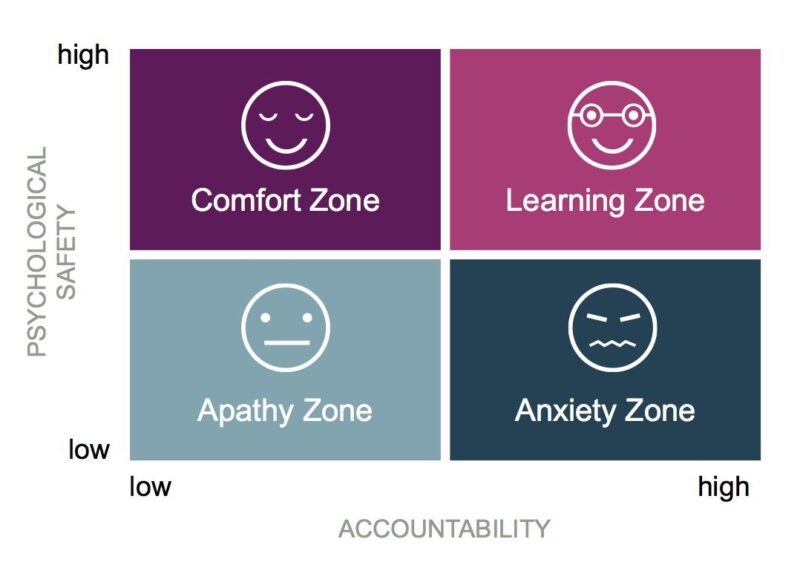
Psychological safety refers to an individual’s belief that they can speak up, take risks, ask questions, or admit mistakes without fear of punishment or humiliation. Coined by Harvard professor Amy Edmondson, the concept has become a vital metric for high-performing teams. Yet psychological safety doesn’t arise spontaneously. It must be nurtured through consistent, value-based leadership—and that is where integrity becomes essential.
Organizational integrity provides the foundation for psychological safety by creating an environment where people believe their voices will be heard, their efforts recognized, and their concerns treated with respect. When leaders model ethical behavior, communicate transparently, and uphold principles even under pressure, they send a powerful message: “This is a place where you can trust the system, trust your colleagues, and trust leadership.”
Consider, for example, the difference between a leader who responds to failure with blame versus one who treats it as a learning opportunity. In an organization where failure is met with shame or retaliation, individuals will go to great lengths to avoid exposure—often hiding mistakes, withholding feedback, or avoiding experimentation. In contrast, a leader who responds with curiosity and fairness fosters a culture where people feel safe to take initiative and share openly. This behavior reflects integrity in action, not just in words.
Trust also flourishes when there is consistency between an organization’s stated values and its real-world practices. Employees quickly notice when leadership espouses transparency but withholds information, or claims to prioritize fairness while making arbitrary decisions. These misalignments damage trust and lead to cynicism, skepticism, and quiet resistance. On the other hand, when leaders hold themselves accountable to the same standards they expect of others—and when policies are applied consistently across the board—trust is strengthened.
Integrity also influences how feedback flows through an organization. In high-integrity environments, people feel empowered to raise concerns, challenge assumptions, and engage in honest dialogue—even across power differentials. This kind of open exchange is crucial for adaptive leadership, where solutions often emerge from the collective wisdom of the group, not from top-down mandates. When psychological safety is high, leaders gain access to deeper insights, greater creativity, and more authentic collaboration.
Furthermore, psychological safety is not just about individual wellbeing—it is a strategic advantage. Teams with high levels of trust and safety are more agile, more innovative, and more resilient in the face of change. They can adapt faster because they are not paralyzed by fear or uncertainty. Integrity fuels this by anchoring the organization in a shared set of values that guide behavior, even in unfamiliar or ambiguous territory.
Leaders who want to build trust and psychological safety must therefore go beyond charisma or positive intent. They must model integrity through their daily actions—by admitting when they are wrong, honoring their commitments, enforcing fair processes, and creating space for difficult conversations. They must demonstrate that integrity is not just an organizational value—it is a leadership practice.
In conclusion, the role of integrity in building psychological safety and trust cannot be overstated. It is the invisible infrastructure that supports healthy culture, enables adaptive leadership, and empowers individuals to bring their full selves to work. Without it, even the most well-designed strategies will falter. With it, organizations can weather uncertainty, embrace change, and thrive with confidence and cohesion.

Case Study: Google’s Project Aristotle
Between 2012 and 2015, Google conducted Project Aristotle, a comprehensive study to identify what makes teams effective. Analyzing data from over 180 teams, the researchers found a surprising result: the single most important predictor of team success wasn’t technical skill, IQ, or experience—it was psychological safety. Teams that felt safe to take risks, admit mistakes, and share ideas without fear of embarrassment or punishment consistently outperformed others.
At the core of these high-performing teams was organizational integrity. Leaders played a vital role by modeling behaviors that fostered psychological safety—acknowledging their own fallibility, promoting open dialogue, welcoming diverse perspectives, and reinforcing fairness in both discussion and decision-making. Rather than focusing solely on individual brilliance, successful teams thrived in cultures where integrity was visible in everyday actions.
For adaptive leaders, the takeaway is clear: psychological safety does not emerge by accident. It is nurtured through consistent, integrity-based leadership. When employees trust that their leaders are fair, transparent, and principled, they are more willing to engage fully, collaborate openly, and contribute creatively. Project Aristotle offers powerful evidence that integrity is not just a moral strength—it is a strategic asset in building resilient, high-performing teams.
How Integrity Influences Change Readiness and Employee Engagement
Organizational change is an inevitable part of growth and adaptation, yet it often meets resistance from employees. One of the most critical—but often overlooked—factors in determining how successfully change is implemented is the perceived integrity of leadership. When employees believe that leaders act with honesty, fairness, and consistency, they are more likely to embrace change. When that belief is absent, change initiatives are often met with skepticism, disengagement, and even active resistance.
Integrity plays a foundational role in shaping change readiness—the willingness and ability of individuals within an organization to accept, support, and effectively engage in change efforts. Change creates uncertainty, and with uncertainty comes anxiety. In such conditions, employees naturally look to leadership for reassurance. If they trust that the process is being handled with integrity—that information is being shared transparently, decisions are being made fairly, and people are being treated respectfully—they are far more likely to respond with openness rather than fear.
When integrity is lacking, however, people quickly become guarded. They may question the motives behind the change, suspect hidden agendas, or assume that decisions are being made to benefit a select few. This can lead to withdrawal, rumors, and resistance—not because the change itself is flawed, but because the process lacks credibility. In short, people don’t resist change; they resist the mistrust that surrounds it.
In contrast, when leaders demonstrate integrity throughout a change process, they strengthen organizational resilience. By consistently aligning their words and actions, listening to employee concerns, and making fair decisions—even when difficult—they signal that change is not something being imposed on people, but something they are being invited into. This shift from “change is being done to me” to “I am part of the change” increases buy-in and ownership.
Integrity also plays a powerful role in employee engagement. Engaged employees are emotionally invested in their work and committed to their organization’s goals. Research shows that one of the strongest predictors of engagement is trust in leadership. When employees feel that their leaders act ethically and with consistency, they are more likely to feel proud of their organization, connected to its mission, and motivated to contribute.
Moreover, a culture of integrity supports open communication and inclusion, which are key drivers of engagement during change. Employees who feel their voices are heard, their feedback valued, and their contributions recognized are more likely to remain engaged—even when navigating uncertainty. In such environments, people are more willing to offer ideas, support others, and problem-solve creatively.
Integrity is not just a moral virtue—it is a strategic enabler of change readiness and engagement. Leaders who demonstrate transparency, fairness, and alignment between values and behavior lay the foundation for trust. And when trust is present, employees are far more likely to lean into change, remain engaged in their roles, and work collectively toward a successful future. For adaptive leaders, integrity is not optional—it is a core competency for leading through complexity and change.
Signals of Integrity Failure: Consequences and Warning Signs
Organizational integrity is often invisible when it’s functioning well—but when it breaks down, the consequences are both immediate and far-reaching. Integrity failures erode trust, damage morale, and compromise an organization’s ability to navigate change effectively. For adaptive leaders, recognizing the early warning signs of integrity breakdown is essential. These signals may begin subtly but, if left unaddressed, can quickly spiral into cultural dysfunction, reputational damage, and performance decline.
One of the earliest indicators of an integrity failure is a gap between stated values and actual behavior. When employees hear leaders speak about fairness, transparency, or collaboration but witness decisions being made behind closed doors or policies being applied inconsistently, they begin to doubt the authenticity of the leadership. Over time, this perceived hypocrisy breeds cynicism. Staff may comply outwardly, but inwardly they disengage, withhold feedback, or stop believing that speaking up will make a difference.
Another signal is the suppression of dissent or feedback. In a healthy culture, people feel free to raise concerns, challenge decisions, and contribute ideas. But when integrity is compromised, these voices are ignored—or worse, punished. Leaders may discourage criticism under the guise of “team unity” or “staying positive,” creating a culture where silence is safer than honesty. This can lead to serious blind spots, as emerging problems go unreported or unresolved.
A further warning sign is a lack of accountability at the top. When senior leaders are not held to the same standards as others—or when they deflect responsibility for failures—employees take note. Integrity demands consistency. When employees see that power shields individuals from consequences, or that favoritism trumps fairness, confidence in the system declines. This undermines the credibility of leadership and fuels disengagement.
Integrity failure is also evident in opaque or inconsistent decision-making. When people don’t understand why changes are happening, or how decisions are made, they begin to fill in the blanks with assumptions—often negative ones. Transparency is a pillar of integrity; when it’s absent, uncertainty spreads. Rumors, resistance, and a lack of commitment to new initiatives are common consequences.
The long-term consequences of ignoring these signals are severe. Trust breaks down, silos form, and innovation slows as people become more focused on protecting themselves than advancing the organization’s goals. Talent attrition may increase, especially among high performers who no longer see alignment between their values and the organization’s. Externally, reputational damage can result from whistleblower reports, public backlash, or media scrutiny—all of which are difficult and costly to recover from.
However, integrity failure is not irreversible. When leaders actively listen, take responsibility, and commit to visible course correction, trust can be rebuilt. But the first step is awareness. Adaptive leaders must develop the capacity to detect subtle shifts in morale, communication, and culture—before they escalate into crisis.
In summary, the failure of organizational integrity doesn’t usually happen all at once. It unravels slowly through misalignments, omissions, and double standards. Recognizing and responding to these early warning signs is a key responsibility for any leader who seeks to build a resilient, trustworthy, and adaptive organization.

Exercise 4.1: Reflection Exercise
Set aside 10–15 minutes of quiet time to reflect on the following questions. Write your responses in a notebook or journal. This is for your personal development—honesty and self-awareness are more important than polished answers.
Think about a time when you felt fully engaged and psychologically safe in a team or organization.
• What leadership behaviors contributed to that environment?
• How was integrity (honesty, fairness, transparency) visible in day-to-day actions?
Reflect on your current team or organization.
• Where do you see alignment between stated values and actual behavior?
• Where do you notice gaps or inconsistencies that could signal integrity challenges?
As a leader (formal or informal), how do you model integrity?
• In what ways do you communicate transparently, act consistently, and uphold fairness?
• What one behavior could you improve to better foster trust and psychological safety in your team?

Course Manual 2: Establishing Security
During periods of adaptive change, one of the most fundamental human needs that surfaces in the workplace is the need for security—a sense of stability, predictability, and reassurance. Change often brings ambiguity, disrupted norms, and an unclear future, which can trigger anxiety and reduce morale. In these moments, employees look to leadership not only for direction, but for signs that the ground beneath them is steady.
This lesson explores how organizational integrity—expressed through fairness, honesty, and consistent behavior—plays a direct role in creating an environment where people feel safe and grounded. While trust and psychological safety will be covered in depth in later modules, this session focuses on the emotional and practical aspects of security during change: the need to know what to expect, who to rely on, and that decisions are being made with integrity.
Participants will examine how clear communication, dependable leadership behavior, and aligned decision-making can reduce fear and foster confidence. Through discussion, case studies, and reflection, leaders will gain tools to provide a sense of calm and continuity—even when the organization is in motion.
Why Security Matters During Adaptive Change
Adaptive change differs from technical change in that it requires people to let go of familiar ways of thinking, behaving, or working—and move toward something that is not yet fully defined. This kind of change, often driven by shifts in market conditions, technology, or internal restructuring, brings not only operational complexity but emotional disruption. In such an environment, security becomes one of the most critical needs for employees. Without it, fear and uncertainty take root, undermining productivity, trust, and morale.
Security, in the context of organizational life, refers to the sense of stability, predictability, and reassurance that allows people to remain engaged and confident despite uncertainty. This is not about guaranteeing that nothing will change—rather, it is about creating conditions where people feel anchored, respected, and informed even as transformation unfolds.
When employees feel secure, they are more able to stay present, focus on their work, and contribute to change efforts. They are less likely to fall into fear-based behaviors such as rumor-spreading, resistance, or disengagement. Security allows them to process ambiguity without becoming overwhelmed by it. In contrast, when security is lacking, adaptive change often triggers protective responses—such as withdrawal, conflict, or overt resistance—as people attempt to regain control in unpredictable circumstances.
Security also serves as the foundation for rational decision-making and effective communication. Leaders may assume that simply announcing a change is enough, but in an insecure environment, even well-meaning communication can be misinterpreted. Employees who feel unstable may fill in the gaps with fear-based assumptions: “Is my job at risk?” “Is this a cover for layoffs?” “Do they really know what they’re doing?” These doubts can spread quickly, causing disruption well beyond the original scope of the change.
One of the reasons organizational integrity is so important during adaptive change is because it directly influences whether people feel secure. When employees see that leaders act consistently with stated values, follow fair processes, and communicate honestly—even when the news is difficult—they are far more likely to stay grounded and cooperative. Integrity signals that while change is happening, the foundation of how people are treated remains firm.
Importantly, the sense of security is both emotional and practical. Emotionally, people want to feel that they belong, that their voices matter, and that they won’t be blindsided. Practically, they need clear roles, reliable information, and visible leadership to guide them through the transition. Leaders who understand and address both dimensions are better equipped to maintain stability through uncertainty.
Security is not a luxury—it is a strategic necessity during adaptive change. Leaders who prioritize it help prevent fear from taking hold, increase the capacity of their teams to engage with change, and reinforce a culture that can adapt without losing its footing. Establishing security isn’t about removing discomfort; it’s about providing enough clarity, consistency, and care that people can move forward even when the path ahead is unclear.
How Organizational Integrity Supports Stability and Predictability
In times of adaptive change, employees often face unfamiliar territory—new expectations, shifting roles, evolving priorities. While uncertainty may be unavoidable, instability doesn’t have to be. One of the most effective ways to anchor people during times of flux is through organizational integrity. Integrity, when practiced consistently, becomes a stabilizing force that reinforces predictability and trust, even when outcomes remain uncertain.
Organizational integrity refers to the alignment between a company’s values, actions, and systems. It means doing what the organization says it will do, acting in accordance with stated principles, and applying processes fairly and transparently. When leaders embody these principles—when their decisions are consistent with the organization’s mission, and when their communication reflects honesty and fairness—employees experience a greater sense of order and reliability.
This consistency becomes a predictive framework for employees. Even if they don’t know exactly what will happen next, they trust how decisions will be made, why actions are being taken, and what they can expect from leadership. That trust allows them to stay focused, make informed choices, and remain engaged during change. In contrast, when actions don’t align with values, or when communication is inconsistent, people begin to feel uncertain not just about the change—but about the leadership itself.
For example, if an organization claims to prioritize collaboration but leaders make key decisions behind closed doors, employees may feel excluded, misled, or undervalued. That gap between stated values and actual behavior creates confusion and emotional instability. However, when integrity is evident—through open communication, inclusive processes, and leadership accountability—employees experience reassurance. They may not agree with every decision, but they trust the process and feel respected throughout it.
Integrity also plays a critical role in reducing speculation and rumor, which are common in low-information environments. In the absence of clear, value-driven messaging, employees often fill the void with worst-case scenarios. Leaders who act with integrity prevent this by communicating frequently and transparently, even when the message is incomplete or the answers are still evolving. Honesty, even when it reveals uncertainty, builds credibility.
Furthermore, when organizations demonstrate integrity in small, consistent ways—meeting deadlines, honoring commitments, applying policies fairly—they create an emotional climate of reliability. Employees begin to feel that the organization, despite navigating change, remains grounded in a stable core. This provides a psychological anchor that helps them tolerate ambiguity and move forward with confidence.
Ultimately, integrity offers a kind of cultural scaffolding during change. It holds the organization together and gives people something steady to lean on. It sends the message that while the content of their work may be changing, the values guiding their organization remain firm. For adaptive leaders, maintaining and modeling organizational integrity isn’t just an ethical responsibility—it is a strategic action that promotes clarity, consistency, and cohesion in the face of uncertainty.
The Power of Consistent Messaging in Uncertain Times
In times of adaptive change, communication becomes more than a tool—it becomes a lifeline. When people feel unsure about the future, they look to leaders for clarity, reassurance, and meaning. In this context, consistent messaging plays a vital role in reducing anxiety, preserving focus, and maintaining organizational cohesion. Even when answers are incomplete, consistency in tone, message, and values helps stabilize the environment and build trust.
Uncertainty creates a vacuum, and if leaders don’t fill it with steady, reliable communication, it will inevitably be filled by speculation, rumor, and fear. Inconsistencies—whether in what is said, how it’s said, or who says it—can quickly erode trust and amplify confusion. Employees may begin to question leadership’s competence, doubt the direction of change, or assume hidden agendas are at play. Over time, this can lead to disengagement, misalignment, and resistance.
By contrast, consistent messaging provides predictability and reassurance. It reinforces the idea that, even amid change, there is a clear guiding purpose and a leadership team that is aligned, transparent, and steady. Repetition of core messages—why the change is happening, what the intended outcomes are, and how values will guide the journey—helps employees internalize the direction and reduces emotional volatility.
Consistency also demonstrates organizational integrity in action. When the content and tone of leadership communications align with stated values, employees experience that alignment as trustworthy and authentic. This doesn’t mean sugar-coating difficult news; rather, it means being honest, empathetic, and clear—every time. When communication is values-driven and regular, even bad news can build credibility.
It’s also important that consistent messaging is not confined to a single voice. In high-integrity organizations, leaders at every level reinforce key messages in a unified way. This doesn’t require everyone to speak in identical language, but it does require alignment in message and intent. When frontline managers, team leads, and executives all echo the same themes and speak from the same value base, employees receive a steady stream of clarity that reinforces psychological security.
Moreover, consistent messaging helps manage expectations. During change, outcomes can shift and timelines may evolve—but when leaders maintain an open channel of communication, acknowledge what they don’t know yet, and update information regularly, employees stay engaged. They feel respected and informed, rather than surprised or left in the dark.
Finally, consistent messaging also promotes behavioral alignment. When employees hear the same values-driven messages repeatedly, they are more likely to mirror them in their actions. This builds cultural cohesion and encourages teams to stay focused on shared goals, even in uncertain conditions.
The power of consistent messaging lies in its ability to build stability where there is ambiguity. It calms, aligns, and motivates. For adaptive leaders, establishing and sustaining clear, value-aligned communication is not just a communication skill—it’s a leadership practice that strengthens the entire organization during times of flux.

Case Study: Boeing’s 737 Max Crisis – A Breakdown in Consistent Communication
The Boeing 737 Max crisis (2018–2020) serves as a powerful example of how inconsistent messaging during a period of high-stakes change can erode trust, damage reputation, and destabilize an organization. After two tragic crashes involving the 737 Max aircraft, Boeing’s initial response was marked by minimization and defensiveness. Public statements downplayed the severity of the issues, even as internal communications revealed a lack of clarity and cohesion behind the scenes.
Employees received conflicting information, while regulators and the public were left uncertain about Boeing’s accountability and corrective actions. This misalignment created confusion and fueled speculation both inside and outside the company. As the situation escalated, Boeing was forced to take corrective action—grounding the aircraft, overhauling leadership, and eventually acknowledging communication failures. However, by that point, much of the damage to employee morale and public confidence had already taken root.
The key lesson for adaptive leaders is clear: during times of uncertainty or crisis, inconsistent or vague messaging amplifies fear and mistrust. If leaders don’t fill the communication space with clarity, others will fill it with speculation. In contrast, steady, transparent, and values-aligned communication builds confidence, even in the face of difficult news.
Recognizing and Responding to Signs of Employee Insecurity
During periods of adaptive change, leaders must pay close attention to how their teams are coping emotionally and psychologically. While change initiatives often focus on structures, strategies, and outcomes, the human experience of uncertainty can quietly undermine progress if left unaddressed. One of the most common and disruptive responses to change is employee insecurity—a state of heightened anxiety, confusion, or fear that stems from not knowing what to expect or where one stands. Recognizing the early signs of insecurity and responding with empathy and clarity is critical to maintaining team engagement and organizational cohesion.
Employee insecurity may not always be voiced directly. Instead, it often surfaces in subtle behavioral patterns. Some team members may become withdrawn, quiet in meetings, or reluctant to share ideas. Others might become overly critical, resistant to change, or anxious about minor issues. You may notice a drop in productivity, increased absenteeism, or a spike in workplace rumors. These are not signs of incompetence or negativity—they are often signals that people are struggling with uncertainty and seeking reassurance.
Leaders must learn to read between the lines and actively observe shifts in team dynamics. This means listening for what isn’t being said, noticing changes in tone or participation, and creating opportunities for open dialogue. Leaders who are emotionally attuned and responsive build trust and demonstrate that they care not just about performance, but about people’s wellbeing.
The root cause of much insecurity during change is a perceived loss of control or clarity. Employees may wonder: “Will my role change? Will I still be valued? Is my job safe?” These questions can linger beneath the surface, feeding uncertainty. If left unacknowledged, this emotional undercurrent can lead to disengagement or quiet resistance.
To respond effectively, leaders should focus on providing stability wherever possible. That might mean reinforcing what won’t change, outlining known timelines, or clearly explaining the decision-making process. When uncertainty cannot be removed, it can still be acknowledged and navigated transparently. Saying, “We don’t have all the answers yet, but here’s what we do know—and here’s how we’ll keep you informed,” is far more reassuring than silence or vague promises.
Empathy and visibility also play a key role. Leaders who are accessible, who check in with individuals regularly, and who genuinely listen foster a sense of connection and care. Small acts of presence and attentiveness—like asking how someone is coping, or making space for concerns—can go a long way in diffusing fear and restoring confidence.
Lastly, reinforcing the organization’s core values and purpose during change helps people reorient. When employees are reminded of the mission they’re contributing to and the values guiding decisions, they gain a renewed sense of meaning and direction.
Employee insecurity is a natural and expected response to adaptive change—but it must not be ignored. By recognizing early signs and responding with clarity, consistency, and compassion, leaders can create a more secure environment in which employees feel seen, supported, and ready to move forward.

Exercise 4.2: Group Discussion

Course Manual 3: Honesty Communication
In times of adaptive change, one of the most effective tools a leader can use to maintain stability and engagement is honest communication. While transparency will be explored in more depth in a later module, this session focuses on honesty as a foundational leadership behavior that signals integrity, builds credibility, and fosters clarity—even when answers are incomplete.
Honest communication is not about having all the solutions—it’s about being clear, consistent, and truthful with what is known, while responsibly acknowledging what is still unfolding. During uncertainty, employees are especially attuned to tone, body language, and contradictions between words and actions. Leaders who are upfront—even about challenges or difficult news—are more likely to earn trust and retain employee engagement.
This module helps leaders recognize the risks of vague or misleading communication, especially in environments of change, and introduces practical communication techniques that emphasize honesty, empathy, and alignment with organizational values. Through case studies and interactive role-play, participants will build the confidence and skill to communicate with clarity and sincerity—fostering trust and cohesion across their teams.
Why Honesty Matters
In adaptive leadership, honesty is not merely a virtue—it is a strategic behavior that reinforces organizational integrity and enables teams to thrive during uncertainty. While values like transparency and trust often receive more attention, honesty is the foundation that allows both to flourish. It represents integrity in action—when what is said reflects what is believed, and when words are backed by consistent behavior.
Honest communication becomes especially important during adaptive challenges, when employees face ambiguity, evolving roles, and emotional uncertainty. In such moments, they look to leaders for signals of stability. When leaders speak openly about what is happening, what is known, and what remains uncertain, they offer employees a sense of clarity—even if the message is difficult. Conversely, when communication is evasive, overly polished, or inconsistent, it raises questions about credibility and undermines confidence in leadership.
Honesty also fosters psychological alignment. When people hear the truth, they are better able to make informed decisions, adapt their expectations, and contribute meaningfully to the change effort. Even if the reality is challenging, most employees prefer direct communication over vague reassurances or silence. They may not like the message, but they will respect a leader who delivers it with integrity.
Crucially, honesty demonstrates respect. When leaders speak truthfully, they signal that employees are capable of handling difficult information and worthy of being kept in the loop. This mutual respect helps build trust—a key ingredient for team cohesion and resilience. In contrast, leaders who withhold information, downplay problems, or offer half-truths often unintentionally convey a lack of trust in their teams. This can lead to disengagement, resentment, or a culture of guardedness where people stop speaking up or asking questions.
Honesty also protects against organizational misalignment. In environments where honest conversations are encouraged, issues are surfaced early, diverse perspectives are valued, and employees feel empowered to voice concerns. When honesty is lacking, problems often remain hidden until they escalate. Teams begin working from different assumptions, decision-making becomes reactive, and organizational integrity starts to fracture.
However, honesty must be anchored in empathy. Being honest does not mean being blunt or tactless. Effective leaders learn to communicate truthfully while considering the emotional impact of their message. They use language that is clear but compassionate, direct but human. They acknowledge uncertainty without fueling fear, and they recognize the emotional labor that change demands from everyone involved.
Importantly, leaders must model honesty themselves. If honesty is expected only from lower-level staff but not demonstrated by executives or managers, it will be seen as performative rather than cultural. Leaders set the tone for open communication when they admit mistakes, acknowledge their limits, and stay true to shared values in both public and private settings. This kind of role modeling creates a ripple effect, empowering others throughout the organization to do the same.
In times of change, honesty becomes more than a communication skill—it becomes a cultural stabilizer. It reinforces alignment between values and behavior, reduces fear and confusion, and strengthens the social fabric of the organization. While it may feel risky to be honest when stakes are high, the greater risk is in avoiding the truth. Without honesty, there can be no lasting trust. Without trust, adaptive change cannot take hold.
Honesty matters because it is the visible expression of integrity. It affirms respect, enables clarity, prevents misalignment, and fosters trust. For adaptive leaders, practicing honesty—consistently and compassionately—is not optional. It is essential to building credibility, guiding teams through uncertainty, and sustaining integrity at every level of the organization.
Communication Pitfalls – The Cost of Withholding or Distorting Information
In times of adaptive change, communication is one of a leader’s most powerful tools—but it can also become one of the most damaging liabilities when used ineffectively. Withholding or distorting information, whether intentionally or through poor habits, undermines trust, breeds confusion, and ultimately weakens organizational cohesion. These communication pitfalls can stall momentum, create unnecessary resistance, and damage the credibility of leadership—even when the original intent was to protect or maintain stability.
One of the most common pitfalls is withholding information out of fear of negative reactions. Leaders may delay sharing difficult news or avoid communicating uncertainty in the hope that things will stabilize. However, silence or vague messaging often has the opposite effect. When people feel that they are being kept in the dark, they begin to speculate. Assumptions and rumors take root, often painting a picture far worse than reality. In this vacuum of information, employee anxiety increases, and trust in leadership begins to erode.
Another pitfall is inconsistent messaging across different levels of the organization. When senior leaders say one thing, mid-level managers say another, and frontline supervisors are left guessing, employees receive a fragmented picture. This inconsistency breeds confusion and signals a lack of alignment, which can lead to disengagement or active resistance to change efforts.
Distorting information—even with good intentions—can also backfire. Leaders may try to “spin” news to sound more positive, omit key challenges, or overpromise on outcomes. While these approaches may seem like a way to maintain morale, they often leave employees feeling misled once reality emerges. When people feel they’ve been manipulated or “sold” a version of the truth, they are less likely to believe future communications, even when they are honest. Credibility, once lost, is difficult to regain.
A related pitfall is failing to acknowledge uncertainty. In adaptive situations, it’s natural that not all answers are available immediately. However, pretending to have certainty where none exists sets up unrealistic expectations. It also closes the door to dialogue. Employees respect leaders who admit what they don’t yet know, especially when they commit to keeping people informed as things evolve. This kind of honesty promotes openness and keeps people engaged rather than alienated.
Ultimately, the cost of poor communication during change is not just emotional—it is strategic. Teams that don’t trust leadership are less collaborative, less innovative, and slower to act. They may resist directives, avoid risk, or disengage altogether. Leaders who avoid these pitfalls—by communicating honestly, consistently, and early—create an environment of clarity, stability, and integrity that allows change to take root.
Withholding or distorting information during adaptive change is a high-risk behavior. It may offer short-term comfort, but it undermines long-term confidence. Leaders who confront difficult truths with honesty and empathy foster trust and keep people aligned—even in the face of uncertainty. That alignment is the true foundation of successful, adaptive leadership.
Techniques for Honest, Effective Messaging During Uncertainty
When uncertainty takes hold in an organization—due to restructuring, strategy shifts, or external disruptions—communication becomes more than a delivery mechanism for information. It becomes a signal of leadership credibility and a tool for preserving trust and cohesion. During such times, honest, effective messaging is not just about what is said, but how, when, and why it is said. Adaptive leaders must be intentional, clear, and sincere in their communication, even when the full picture is still emerging.
The first key technique is to acknowledge uncertainty directly. Leaders often feel pressure to project confidence and control, but pretending to have all the answers can damage trust when reality inevitably changes. Instead, leaders should name what is known, what is still evolving, and what the organization is doing to address the unknowns. For example: “We don’t yet know how this change will affect every team, but here’s what we do know—and here’s what we’re doing to figure it out.” This kind of candor reassures people that leadership is engaged and transparent, even when certainty is unavailable.
Second, communicate early and often. Silence breeds speculation. Even brief, periodic updates—especially when delivered consistently—help people feel included and informed. Frequent communication also allows leaders to correct misinformation, adjust messages as the situation evolves, and reinforce shared values. Timing is as important as content; waiting too long to speak can leave people feeling neglected or excluded from important developments.
Third, use a tone that balances realism with reassurance. Messaging during uncertainty should never be artificially optimistic or overly bleak. Leaders must strike the right tone: respectful of the difficulty people may be facing, but hopeful about the organization’s ability to move through it. Acknowledge challenges without dramatizing them. Express confidence in the team without minimizing their concerns.
Fourth, use plain, human language. Avoid corporate jargon, technical terms, or overly polished statements. Speak directly, as if in conversation. Employees are far more likely to trust messages that feel authentic and personal than ones that sound scripted. When delivering written messages, ensure clarity and brevity. When speaking, use stories, metaphors, or real-world examples to make complex ideas easier to understand and relate to.
Fifth, make space for two-way communication. Honest messaging should not be one-directional. Invite questions, allow for feedback, and create opportunities for dialogue. This not only shows respect, but also reveals concerns that may otherwise remain hidden. Leaders who listen as much as they speak strengthen relationships and build collective resilience.
Lastly, ensure message alignment across leadership levels. A consistent message delivered by multiple voices reinforces clarity and avoids confusion. Brief managers and team leads ahead of time, so they are equipped to respond to questions and maintain cohesion.
Effective messaging during uncertainty requires honesty, empathy, and intention. Adaptive leaders who speak clearly, listen actively, and communicate consistently create a foundation of trust—enabling their teams to stay grounded, informed, and committed, even when the path ahead is uncertain.

Case Study: Uber’s Cultural Crisis and Leadership Silence (2017)
In 2017, Uber became the center of a highly publicized crisis when multiple reports surfaced of workplace harassment, discrimination, and unethical behavior. These revelations were compounded by an already aggressive and hyper-competitive internal culture. Yet rather than addressing the issues transparently, Uber’s leadership—including then-CEO Travis Kalanick—remained largely silent or issued vague, inconsistent responses. This lack of honest, values-aligned communication created a vacuum in which rumors thrived, employee morale deteriorated, and public trust eroded.
The absence of clear messaging was deeply felt inside the company. Many employees were unsure whether leadership understood the seriousness of the issues or had any intention of course-correcting. External stakeholders, including riders and regulators, also began to question Uber’s integrity and long-term viability. Only after Kalanick’s resignation and the appointment of Dara Khosrowshahi did the company begin to shift. Khosrowshahi initiated open forums, honest updates, and cultural reforms that acknowledged past mistakes and began rebuilding trust.
This case highlights the high cost of avoiding honest communication. During times of organizational strain, silence or spin creates instability. In contrast, consistent and candid leadership messaging—even when addressing failure—helps restore credibility, align values, and stabilize the culture.
Balancing Candor with Compassion
One of the most challenging responsibilities of leadership is delivering difficult news—especially during times of adaptive change. Whether it’s announcing job losses, restructuring, missed targets, or major shifts in strategy, leaders must communicate truthfully while also being mindful of the emotional impact their words will have. The goal is not to soften reality, but to deliver it with candor and compassion, striking a balance that preserves both trust and dignity.
Candor—truthfulness and directness—is essential for maintaining credibility. Employees can sense when messages are vague, sugar-coated, or overly optimistic. While these approaches may be well-intentioned, they often lead to confusion, disappointment, or mistrust once the full reality becomes clear. Candor allows people to make informed decisions, prepare for what’s ahead, and feel respected as stakeholders in the process.
However, candor without compassion can feel cold or insensitive. Delivering hard truths requires emotional intelligence—the ability to understand how others may receive and react to the message. Compassion is what allows leaders to speak difficult truths in ways that acknowledge the human experience, offering space for people to process, ask questions, and express emotion.
To balance candor with compassion effectively, leaders must first be fully present and self-aware. If a leader appears detached, scripted, or overly rehearsed, the message may come across as disingenuous or dismissive. Conversely, a leader who is visibly grounded and empathetic—who names the difficulty of the moment and expresses authentic care—helps create an atmosphere of safety, even amid disappointment.
Preparation matters. Leaders should take time to consider the content, timing, and tone of the message. Anticipate the questions people will have and prepare to answer them honestly. If all the answers aren’t yet available, say so—and commit to follow-up communication as things evolve. Clarity is a form of respect, and avoiding false promises is critical to preserving long-term trust.
During the delivery, use language that is both clear and human. Avoid jargon, euphemisms, or overly corporate phrasing. Speak to people as people. Use inclusive language (“we” and “our”) to reinforce a shared journey, but don’t hide behind collectives—own the message as a leader. Acknowledge what the change may feel like, and validate the emotions it may evoke.
Also, allow space for response and recovery. Give people time to absorb the message and express their reactions. Follow up with opportunities for dialogue—whether through one-on-one check-ins, team discussions, or anonymous channels for feedback. Providing emotional support and being visibly available reinforces that leaders are not just delivering news, but walking through it alongside their teams.
In summary, delivering difficult news with candor and compassion is a skill that separates reactive leadership from adaptive leadership. It requires honesty, empathy, preparation, and presence. When done well, it not only preserves trust but also strengthens relationships, fosters resilience, and reinforces the integrity of the organization—especially when it’s needed most.

Exercise 4.3: Practicing Honest Communication
To explore how honesty can be applied in real workplace communication and develop greater confidence in balancing candor with compassion.
1. Pair up with a partner.
2. Each person should take 2 minutes to briefly describe a time when they either:
• Struggled to communicate honestly in a professional setting, or
• Witnessed (or experienced) the effects of unclear or overly softened messaging during a time of change.
3. After both partners have shared, discuss the following prompts together:
• What impact did the lack (or presence) of honesty have on trust, engagement, or clarity in that situation?
• How might the outcome have changed if honesty had been communicated differently?
• What strategies from today’s session could you apply if facing a similar situation again?
4. After several minutes, invite a few volunteers to share insights or themes from their discussions with the larger group (optional).

Course Manual 4: Organizational Fairness
In adaptive leadership, fairness isn’t just a value—it’s a visible practice that influences how people experience change. Employees don’t just evaluate what decisions are made; they pay close attention to how and why they’re made. When leadership decisions appear fair—whether regarding workload, opportunities, or recognition—people are more likely to stay engaged, trust the process, and support the broader goals of change. Conversely, perceived unfairness can quickly erode morale, provoke resistance, and fuel disengagement.
This module explores the role of organizational fairness as a key dimension of integrity. It emphasizes that fairness is not about treating everyone the same, but about responding equitably to different needs, contexts, and contributions. Participants will distinguish between equity and equality, and reflect on how their leadership practices impact perceptions of fairness. They’ll examine how fairness influences team dynamics, organizational culture, and ultimately, the success of adaptive change.
Through real-world examples and reflective exercises, leaders will build the skills to apply fairness in nuanced ways—especially in areas like resource allocation, communication, recognition, and workload distribution. Fair leadership is not only ethical—it is strategic. When people feel seen, heard, and treated with fairness, they are more likely to bring their best to the work of transformation.
Understanding Fairness: Perception vs. Intention in Leadership Decisions
Fairness is often assumed to be a matter of doing the “right thing,” but in leadership, fairness is less about personal intentions and more about how decisions are perceived by others. This distinction is crucial during adaptive change, when employees are particularly sensitive to how decisions impact them and whether those decisions feel just, inclusive, and transparent.
Leaders often act with good intentions—striving to balance competing priorities, meet deadlines, or allocate resources effectively. However, when those intentions are not clearly communicated or fail to consider how decisions land emotionally and practically with different people, they can be perceived as unfair. And in organizational life, perceived fairness is what shapes trust, engagement, and morale—not the leader’s internal justification.
For example, a manager may decide to assign a high-visibility project to the team member with the most experience, intending to ensure success. Yet other team members may interpret that decision as favoritism or gatekeeping. If the reasoning behind the choice isn’t made explicit—and if development opportunities are not equitably distributed—morale may suffer, even if the original intent was sound.
This gap between intention and perception is particularly important in adaptive environments, where change often brings uncertainty, shifting roles, and emotional strain. Employees are not just evaluating outcomes; they’re paying attention to who gets consulted, who benefits, and whether leadership appears consistent and impartial. In these moments, fairness isn’t judged by abstract principles—it’s assessed through the lived experience of inclusion, respect, and voice.
Perceptions of fairness influence how employees interpret a leader’s integrity. When leaders are seen as fair, people are more likely to accept difficult changes, remain engaged, and offer discretionary effort. But when fairness is questioned—especially repeatedly—people may disengage, resist, or even actively undermine the change effort. Trust begins to erode, and the social fabric of the organization weakens.
To lead fairly, adaptive leaders must recognize that fairness is not a static concept. It requires ongoing dialogue, empathy, and reflection. This means seeking input from diverse perspectives, being transparent about decision-making processes, and being open to feedback when decisions are misunderstood or misinterpreted. It also involves acknowledging when a decision has had an unintended impact and taking steps to address that impact openly.
Crucially, fairness must be seen to be done. This doesn’t mean over-explaining every move, but it does require proactive communication about how and why decisions are made, and a willingness to listen if those decisions are challenged. When leaders take time to explain their reasoning and demonstrate consistency across situations, they help close the gap between intention and perception.
In adaptive contexts, where stability is limited and ambiguity is high, perceptions of fairness become even more significant. Leaders who understand this dynamic—and act with both integrity and transparency—create environments where people feel respected, included, and willing to navigate uncertainty together.
Ultimately, fairness is not just a principle—it is a relational practice. It is measured in the eyes of those we lead. And in times of change, that perception becomes one of the most powerful indicators of a leader’s credibility.
Equity vs. Equality
In leadership—especially during periods of adaptive change—understanding the distinction between equity and equality is essential to maintaining fairness and inclusion. While the terms are often used interchangeably, they represent two fundamentally different approaches to support and resource allocation. Equality means giving everyone the same resources, opportunities, or treatment. Equity, by contrast, means providing individuals with the specific resources or support they need to reach an equal outcome. In a diverse workplace, equity is not just preferable—it is necessary.
Equality assumes a level playing field. It is based on the idea that fairness means sameness. For example, offering every team member the same training session may appear fair on the surface. But if some employees are newer to the organization, come from different cultural or educational backgrounds, or face language or accessibility barriers, they may not benefit equally from that experience. Equity acknowledges these differences and adapts support accordingly—perhaps offering supplementary resources, translation, mentoring, or flexible deadlines to ensure everyone can participate meaningfully.
Adaptive leaders must recognize that treating everyone the same is not always just. Fair leadership means recognizing the unique challenges, talents, and life circumstances that shape how employees engage with their work. It also means understanding that people may respond to change differently. For instance, an employee with caregiving responsibilities may need flexible working arrangements during a restructuring process. Another may need more one-on-one support to adapt to new technology. Providing the same response to both individuals may seem equal, but it fails to meet their different needs.
Equity also plays a vital role in performance evaluation, leadership development, and career progression. If opportunities are only extended to those who already appear most capable—often because they’ve had previous access to development—others may be left behind, perpetuating existing inequalities. An equity-based approach intentionally looks for untapped potential and creates pathways to success for all employees, not just the most visible or confident.
In adaptive environments, equity enhances both morale and performance. When employees feel their unique needs are seen and accommodated, they are more likely to trust leadership, engage with the organization’s goals, and support one another. It also cultivates a culture of inclusion where diversity is not just tolerated but actively supported and leveraged.
However, equity can sometimes be misunderstood as favoritism. That’s why communication is key. Leaders must clearly explain the rationale behind their decisions and show that equity is rooted in fairness, not preference. For example, if a certain team member is given extended onboarding support due to a nontraditional background, explaining that this is part of a broader commitment to equitable outcomes helps dispel confusion or resentment.
While equality ensures uniformity, equity ensures justice. Adaptive leaders who prioritize equity over equality are better equipped to guide diverse teams through complex changes. They understand that fairness is not about giving everyone the same—but about giving each person what they need to succeed. This mindset creates a more resilient, inclusive, and high-performing organization.
Allocating Resources Fairly During Change and Scarcity
Resource allocation becomes one of the most sensitive and scrutinized aspects of leadership during periods of adaptive change—particularly when resources are limited. Whether it involves time, budget, staff, or attention, how leaders choose to allocate resources has a direct impact on employee morale, perceptions of fairness, and the organization’s ability to move forward with cohesion and trust.
In times of scarcity, it is rarely possible to meet everyone’s needs equally. Not every project can be funded, not every department can grow, and not every team member can get the same amount of support. These constraints test a leader’s ability to make equitable, transparent, and values-aligned decisions under pressure. Importantly, it’s not just what gets decided—it’s how and why. Employees tend to accept difficult decisions more readily when they understand the reasoning behind them and believe they were made through a fair and principled process.
Fair resource allocation begins with clarity of criteria. Adaptive leaders must define what matters most during the change—such as strategic alignment, impact, urgency, or inclusion—and apply these criteria consistently. For example, if a company undergoing restructuring chooses to prioritize investments in digital innovation, leaders should explain why certain initiatives are being paused in favor of others and how those choices reflect the organization’s long-term goals.
Transparency is also key. When resources are being redistributed or reduced, leaders should communicate early and clearly, outlining both the constraints and the values guiding decisions. Avoiding or sugarcoating the reality can breed resentment and speculation. When people feel blindsided by decisions that affect their work or well-being, they are more likely to disengage or resist the change altogether.
Another critical dimension is empathy. While objective criteria are necessary, resource allocation should still reflect human understanding. For example, during a downsizing initiative, a fair leader might offer additional transition support to affected employees or take extra steps to protect the mental health of teams under high pressure. These gestures signal that people are not just numbers—they are valued members of the organization.
Fairness also involves giving voice to those affected. While not every decision can be democratic, creating spaces for input—such as town halls, feedback loops, or small group discussions—helps ensure diverse perspectives are considered. This input can surface hidden challenges, promote shared understanding, and reduce the perception that decisions are made in isolation or favor certain groups.
Additionally, fairness includes acknowledging trade-offs. Leaders who admit that some decisions are difficult and that no option is perfect build credibility. When employees see leaders grappling openly with tough calls—and doing so in a principled, human way—it fosters respect, even if outcomes are disappointing.
Fair resource allocation during change and scarcity is about more than making efficient choices—it’s about making ethical, inclusive, and transparent ones. Adaptive leaders who approach this task with clarity, consistency, and compassion reinforce organizational integrity and sustain team commitment. When fairness is evident, trust endures—even when resources are strained.

Case Study: Salesforce Layoffs and Transparent Resource Reallocation (2023)
In early 2023, Salesforce responded to economic headwinds by announcing a 10% reduction in its global workforce—approximately 8,000 jobs. Unlike many companies that obscure or delay difficult announcements, Salesforce approached the layoffs with uncharacteristic transparency. CEO Marc Benioff publicly acknowledged that the company had over-hired during the tech boom and took responsibility for the miscalculation. This open admission set the tone for how the organization would handle the resource reallocation that followed.
The company prioritized fairness in action. Affected employees were provided with generous severance packages, extended healthcare coverage, and job placement support. Internal communications—including memos and live Q&A forums—gave employees a chance to understand the rationale behind the decisions and express concerns. At the same time, Salesforce leadership outlined how remaining resources would be refocused toward high-priority areas, including core product innovation and long-term customer strategies.
This values-driven approach to resource cuts helped preserve trust among the workforce. While the layoffs were painful, the process reflected ethical clarity and empathy. For adaptive leaders, Salesforce’s case underscores a key truth: even in moments of scarcity, transparency, acknowledgment of mistakes, and principled decision-making can strengthen morale, trust, and alignment across the organization.
Managing Morale – How Fairness Affects Trust, Motivation, and Belonging
In the midst of organizational change, morale is both fragile and essential. While many factors influence employee morale, one of the most powerful is the perception of fairness. When people feel they are being treated justly—regardless of whether outcomes are favorable—they are more likely to trust leadership, stay motivated, and feel a sense of belonging. Conversely, when fairness is absent or unclear, morale can quickly deteriorate, taking productivity, loyalty, and engagement with it.
Fairness communicates respect. It signals that individuals are valued, their contributions matter, and the organization is committed to equity—not favoritism or expediency. When leaders make decisions that align with clearly stated values and apply them consistently across roles, departments, or levels of seniority, employees are more likely to remain engaged, even in times of disruption.
Trust is the first casualty when fairness is in doubt. If employees perceive that certain individuals or groups are receiving preferential treatment, or that decisions are made arbitrarily, it can erode confidence in leadership. This mistrust spreads quickly through informal networks and undermines collaboration, psychological safety, and transparency. Even well-intentioned leaders can lose credibility if they fail to communicate the “why” behind decisions that affect people’s roles, resources, or recognition.
Motivation is also directly tied to fairness. People are more willing to go the extra mile when they believe their efforts are recognized and evaluated equitably. However, if employees suspect bias in how opportunities are awarded, feedback is given, or workloads are distributed, motivation suffers. They may start to disengage, reduce effort, or even leave the organization—not necessarily because of the change itself, but because of how the change was handled.
Fairness also plays a pivotal role in fostering belonging. Belonging is more than inclusion—it’s the sense that one’s identity, voice, and experience are valued. When fairness is embedded in leadership actions, policies, and communication, it nurtures a culture where people feel safe to participate, contribute, and challenge ideas. This is especially important for historically marginalized groups who may be more sensitive to signals of inequity or exclusion.
Leaders can actively manage morale by using fairness as a guiding principle. This includes explaining decision-making processes transparently, involving diverse voices in planning, and being open about trade-offs and constraints. It also means applying policies consistently, addressing grievances fairly, and visibly recognizing contributions across all levels of the organization—not just the most visible performers.
Fairness is not a soft ideal—it is a strategic lever for maintaining morale during times of uncertainty. When employees perceive fairness, they are more likely to remain committed, collaborative, and connected to the organization’s mission. They trust leadership, stay motivated through difficulty, and feel that they belong to something bigger than themselves. For adaptive leaders, fairness is not just a value—it is a foundation for morale, engagement, and organizational resilience.

Exercise 4.4: Fair or Unfair?
To spark awareness of how perceptions of fairness can vary, and to encourage leaders to think about fairness as a matter of perspective as well as principle.
1. Present three brief workplace scenarios (below) to the group. After each one is read aloud, ask participants to vote silently (e.g., thumbs up for fair, thumbs down for unfair). You can also use sticky notes or a show of hands if virtual.
2. After each vote, invite 1–2 volunteers to share their reasoning—why they saw it as fair or unfair.
1. A manager assigns a high-profile project to the most experienced team member without consulting the rest of the team.
2. During budget cuts, only remote workers are asked to reduce their hours.
3. Two employees request flexible schedules: one for caregiving, the other for evening coursework. Only one is approved.
Highlight how fairness is often subjective and shaped by context, communication, and lived experience. Use this insight to transition into the chapter’s deeper exploration of fairness, equity, and morale.

Course Manual 5: Organizational Humility
In the face of complex and uncertain challenges, humility is one of the most underappreciated yet powerful traits an adaptive leader can possess. Far from being a weakness, humility signals self-awareness, openness to feedback, and a willingness to prioritize learning over ego. When leaders model humility, they create psychological safety—encouraging others to speak honestly, collaborate authentically, and own both successes and mistakes without fear. This strengthens not only individual relationships, but the integrity and resilience of the organization as a whole.
Organizational humility involves more than individual modesty; it is a collective mindset where transparency, accountability, and shared purpose take precedence over hierarchy or control. Leaders who acknowledge their limitations, listen deeply, and credit team contributions build cultures of trust, where integrity is lived rather than claimed.
This module explores how humility operates as a practical leadership strength—especially during adaptive change, when no single leader can have all the answers. Through case studies, reflection, and guided exercises, participants will learn how to recognize humility in action, apply it to their leadership practice, and foster it across teams. Ultimately, humility is not the absence of strength—it is the foundation of credible, values-aligned leadership.
Humility as a Core Leadership Capability
In traditional leadership paradigms, strength has often been equated with certainty, decisiveness, and authority. Leaders were expected to have answers, give direction, and project confidence at all times. However, the complexity of today’s adaptive challenges has revealed a more nuanced truth: real leadership strength lies not in always being right, but in being open to learning, acknowledging limits, and leading with humility.
Humility, far from being a sign of weakness, is increasingly recognized as a core capability for effective leadership in modern organizations. It enables leaders to navigate ambiguity with openness, adapt in real time, and foster collaborative environments where innovation and accountability can thrive. In adaptive contexts—where change is rapid, information is incomplete, and solutions are not always clear—humble leaders create space for dialogue, diverse perspectives, and shared ownership of outcomes.
A humble leader doesn’t abdicate responsibility or avoid difficult decisions. Instead, they demonstrate the courage to say, “I don’t know yet, but I’m listening and learning,” and then engage others in the process of discovery and action. This transparency helps build trust, because it signals authenticity and a commitment to shared success over personal ego.
Humility also empowers others. When leaders model curiosity instead of certainty, they encourage team members to step forward with ideas, challenge assumptions, and contribute meaningfully. This is particularly vital in environments where psychological safety is essential—people are more likely to speak up, innovate, or admit mistakes when they see leaders doing the same.
Research supports humility’s impact on leadership effectiveness. Studies show that humble leaders tend to be more self-aware, better collaborators, and more likely to seek feedback. They build stronger relationships with their teams and foster cultures that are resilient, inclusive, and grounded in continuous improvement. Their influence is durable because it is based not on command, but on credibility and connection.
In addition, humility helps leaders manage power responsibly. It tempers overconfidence, guards against blind spots, and reduces the risk of making decisions in isolation. By remaining grounded and reflective, humble leaders are more likely to align their actions with the organization’s values and long-term integrity—especially in high-pressure or high-stakes situations.
Importantly, humility doesn’t mean underestimating one’s ability or avoiding influence. It means holding that influence with care—recognizing that leadership is a responsibility to others, not just a reflection of personal success. It is knowing your strengths without needing to prove them, and being willing to grow publicly alongside your team.
In a world where adaptability, collaboration, and trust are more vital than ever, humility is not a soft skill—it is a leadership imperative. It redefines strength not as control or dominance, but as the ability to lead with integrity, vulnerability, and an unwavering commitment to collective success.
By embracing humility, leaders model a new kind of power—one that draws people in, lifts others up, and sustains integrity through even the most challenging times.
How Transparent Acknowledgment Builds Credibility
In leadership, mistakes are inevitable. What distinguishes strong, adaptive leaders from others is not the absence of error, but the willingness to acknowledge and learn from it. Owning mistakes transparently is one of the most powerful acts a leader can perform to build credibility, foster trust, and reinforce organizational integrity.
When a leader openly acknowledges a misstep—whether it’s a flawed decision, a missed opportunity, or a communication breakdown—they signal several important qualities: self-awareness, accountability, and respect for others. This transparency counters the instinct to deflect blame or protect one’s image, instead modeling a growth-oriented mindset that encourages honesty throughout the organization.
Credibility is not built by pretending to be perfect. It’s built through consistent alignment between words and actions. When leaders admit their own fallibility, they humanize themselves. This creates psychological safety, where employees feel more comfortable surfacing concerns, sharing ideas, or acknowledging their own mistakes. In contrast, when leaders conceal errors or shift blame, they send the message that mistakes are shameful—and this erodes trust and discourages openness.
Owning mistakes also has strategic benefits. It enables faster course correction. When a leader takes responsibility early, it stops problems from compounding and sets the tone for solution-focused action. Teams can recalibrate, adapt, and move forward with clarity, rather than wasting energy on speculation, blame, or fear. Transparency in these moments keeps momentum alive and reinforces the message that integrity matters more than optics.
For example, when Microsoft’s CEO Satya Nadella publicly acknowledged the company’s failure in its initial mobile strategy, he used that moment to pivot toward a new direction—emphasizing cloud computing and cross-platform integration. His transparency was not seen as a weakness but as a credible, forward-thinking move that reinvigorated Microsoft’s brand and focus. His ownership of past missteps allowed the company to shed outdated ambitions and rally behind a clearer, more successful path.
Owning mistakes also helps define a values-driven culture. When leaders demonstrate that integrity outweighs ego, it signals that the organization prioritizes learning, accountability, and long-term health over short-term image management. This encourages teams to speak truthfully, raise flags early, and make principled decisions, even under pressure.
However, acknowledgment must be sincere and paired with follow-through. A hollow apology or vague admission without action can do more harm than good. Effective leaders explain what went wrong, why it matters, and—crucially—what they are doing to make it right. This transforms vulnerability into credibility and regret into leadership.
Ultimately, owning mistakes is not about self-criticism—it’s about responsible leadership. Adaptive leaders know that their example sets the tone for the entire organization. When they step forward with humility, accountability, and a clear plan for improvement, they build the kind of credibility that inspires lasting trust, loyalty, and collective resilience.
In environments of change and uncertainty, leaders who own their missteps transparently don’t lose authority—they strengthen it. They lead not from fear of being wrong, but from the courage to grow and evolve in full view of those they serve.
Practicing Shared Success and Inclusive Decision-Making
One of the most profound shifts in adaptive leadership is moving from a mindset of individual authority to one of collective contribution. This means trading ego-driven leadership for an ecosystem approach—where success is measured not by the spotlight on a single leader but by the strength and cohesion of the entire team. Humility plays a pivotal role in this shift, empowering leaders to share credit, invite diverse input, and make space for others to lead.
Ego-centered leadership often operates from a place of control, status, and certainty. While this may create short-term clarity or charisma, it tends to limit collaboration, stifle innovation, and create hierarchical barriers. In contrast, an ecosystem approach recognizes that adaptive challenges—those involving complex, shifting, and often ambiguous conditions—require a collective intelligence. No one person has all the answers. The most effective solutions often emerge through diverse thinking, distributed expertise, and inclusive decision-making.
Inclusive leadership begins with listening. Humble leaders actively seek perspectives from across the organization, particularly from those whose voices are often underrepresented. They understand that insights can come from any level or function—and that inviting these voices strengthens both decision quality and team commitment. When people feel heard, they’re more likely to engage deeply and take ownership of outcomes.
Practicing shared success also means being intentional about recognition. Humble leaders don’t hoard praise; they celebrate team wins publicly and credit others for their contributions. This kind of acknowledgment fosters psychological safety and motivates teams to collaborate and innovate, rather than compete for individual visibility. Over time, it builds a culture where collective success is more valued than personal gain.
Shared decision-making is another hallmark of this ecosystem approach. While leaders are still accountable for final calls, they invite others into the process—gathering input, weighing trade-offs together, and being transparent about how decisions are made. This not only leads to better-informed choices but also builds buy-in and reduces resistance. People are more likely to support what they’ve helped shape.
For example, New Zealand Prime Minister Jacinda Ardern modeled this approach by regularly involving diverse experts and community voices in her COVID-19 response decisions. Her humility, empathy, and transparency helped build trust, encourage cooperation, and foster a national sense of shared responsibility. The results were not just policy outcomes, but deepened social cohesion.
Shifting from ego to ecosystem also means being comfortable not having all the answers. Humble leaders resist the urge to dominate conversations or prove expertise at every turn. Instead, they curate the conditions for dialogue, learning, and co-creation. They ask more questions than they answer and prioritize the long-term health of the team over short-term personal validation.
In fast-changing environments, organizations need leaders who elevate others, not just themselves. Practicing shared success and inclusive decision-making allows teams to adapt faster, build resilience, and generate trust-based cultures that are more sustainable over time.
Ultimately, humility enables this shift from “me” to “we.” It transforms leadership from a solitary performance into a collaborative practice—where every voice is valued, and every success is shared.

Case Study
The U.S. Navy’s use of “Red Teams” offers a compelling example of organizational humility in action. Red Teams are groups of trained individuals tasked with challenging assumptions, testing plans, and identifying blind spots in mission strategies. Their role is to think like an adversary, offering alternative perspectives that might otherwise go unexamined. This practice recognizes a key truth of adaptive leadership: even the most experienced and capable leaders can miss critical insights when working in isolation or echo chambers.
By institutionalizing dissent in this way, the Navy models humility as a systemic strength—not a personal weakness. Red Teaming encourages inclusive decision-making by valuing diverse perspectives, especially those that disrupt the dominant narrative. Rather than viewing pushback as a threat, the organization embraces it as a means to improve strategy, reduce risk, and enhance mission success.
This approach is particularly powerful in volatile, uncertain environments where rigid thinking or unchallenged certainty can have severe consequences. The Navy’s example demonstrates that humility can be embedded into decision-making processes, creating a culture where questioning is not only allowed but expected. For adaptive leaders in any field, Red Teaming offers a valuable blueprint for how humility can drive better outcomes through collective intelligence and constructive challenge.
Daily Practices for Cultivating Humility as a Leadership Habit
Cultivating humility as a leadership trait is not a one-time realization—it’s a continuous, conscious practice. Humility is not about self-deprecation or downplaying accomplishments, but about maintaining a grounded sense of self, being open to feedback, and prioritizing the collective over personal ego. For adaptive leaders, humility becomes a vital habit that strengthens trust, encourages growth, and reinforces organizational integrity. The key is to embed humility into daily leadership behaviors so it becomes a reliable compass during change and complexity.
1. Practice Reflective Self-Awareness
Humble leaders regularly pause to reflect on their actions, decisions, and assumptions. Starting or ending the day with a brief self-reflection—asking questions like “Where did I listen well today?” or “Did I make space for other voices?”—builds a habit of thoughtful leadership. Journaling or short check-ins with trusted peers or coaches can also illuminate blind spots and help leaders stay grounded in self-awareness.
2. Ask More Questions Than You Answer
Curiosity is a hallmark of humility. Leaders who ask open-ended questions—especially of those with less formal authority—signal that they value others’ input and are not reliant on being the smartest voice in the room. Questions like “What am I missing?” or “How would you approach this?” can uncover critical insights, build collaboration, and reinforce psychological safety.
3. Invite and Act on Feedback
Genuinely asking for feedback—and responding with openness rather than defensiveness—is one of the strongest signals of humility. Regularly creating feedback loops (through surveys, team check-ins, or one-on-one conversations) shows that leaders are willing to grow and adapt. More importantly, acting on that feedback and communicating the resulting changes builds credibility and trust.
4. Share Credit Generously
Daily recognition of others’ contributions, whether through public praise, private gratitude, or team acknowledgment, builds a culture of shared success. Leaders can make it a point each day to highlight someone else’s effort or progress. This reinforces the message that leadership is about lifting others, not claiming spotlight.
5. Own Mistakes Promptly and Publicly
When things go wrong, humble leaders take responsibility without deflection. Whether it’s a miscommunication, a missed deadline, or a flawed judgment, acknowledging missteps models accountability and normalizes learning from failure. This kind of candor, especially when done consistently, creates a safe space for others to be honest and reflective, too.
6. Create Space for Others to Lead
Delegating meaningfully and empowering others to take the lead on initiatives demonstrates humility in action. Daily opportunities—such as inviting a junior team member to present, or asking someone else to chair a meeting—build leadership capacity across the organization and signal respect for others’ growth.
7. Stay Grounded in Purpose
Humble leaders frequently return to “why” they lead. Purpose-driven reflection—through vision statements, team goals, or mentoring conversations—keeps ego in check and reminds leaders that they are part of something larger than themselves.
Ultimately, humility is a practice, not a trait. By making small, intentional choices every day, leaders embed humility into their leadership style—building resilience, connection, and long-term credibility in the process.

Exercise 4.5: The Humility Mirror
To encourage self-reflection and peer learning around the practice of humility in leadership.
1. Partner Up:
Ask participants to pair up with someone they haven’t worked with yet today.
2. Reflection Prompt – Round 1:
Partner A answers the following:
• “Describe a time when you or a leader you observed demonstrated humility in a work setting. What impact did it have on the team or outcome?”
3. Discussion Prompt – Round 2:
Together, discuss:
• “What made that moment powerful or memorable? What could have gone differently if humility was absent?”
4. Wrap-Up:
Each pair shares one key insight or takeaway with the larger group.
Emphasize that humility is often remembered not because of what someone said, but how they made others feel—heard, respected, and valued. This exercise helps surface those moments and reinforces humility as a relational leadership strength.

Course Manual 6: Cultural Integrity
Organizational culture is more than a set of shared values or rituals—it is the invisible force that shapes how people behave, make decisions, and respond to change. When aligned with integrity, culture becomes a powerful enabler of trust, transparency, and long-term success. As Peter Drucker famously stated, “Culture eats strategy for breakfast,” reminding us that even the best strategic plans can falter if they conflict with the prevailing culture.
This module explores the vital connection between organizational culture and integrity, especially in times of adaptive change. Participants will examine how cultural norms either support or undermine honesty, fairness, and ethical behavior. Leaders will be guided to assess their current cultural landscape, identify gaps between declared values and lived practices, and develop strategies to intentionally shape a culture where integrity thrives.
Through reflective exercises, diagnostic tools, and real-world examples, leaders will gain insights into how to lead cultural alignment efforts authentically and sustainably. The goal is not just to influence culture but to embed integrity so deeply into organizational behavior that it becomes a natural part of how the organization thinks, acts, and adapts.
What Is Cultural Integrity?
Cultural integrity refers to the alignment between an organization’s stated values and its actual behaviors, practices, and decisions. It is the consistency between what a company claims to believe in and how it operates day-to-day. When cultural integrity is strong, employees, leaders, and stakeholders experience the organization as trustworthy, authentic, and purpose-driven. When it’s weak or misaligned, cynicism grows, engagement falters, and the organization risks reputational and operational damage.
Every organization has a culture—an informal system of norms, expectations, and unwritten rules that shape how work gets done. But culture alone does not guarantee integrity. Cultural integrity requires conscious attention to whether the culture actively reinforces the organization’s ethical commitments and values. For example, if an organization claims to value collaboration but rewards only individual performance, its culture lacks integrity. Similarly, if a company promotes transparency but routinely withholds information from staff, the disconnect creates distrust and confusion.
Cultural integrity is not about perfection—it is about congruence. Organizations with high cultural integrity acknowledge their values and actively work to bring them to life, even when it’s difficult or inconvenient. Leaders model the behaviors they expect from others. Decision-making reflects stated priorities, and systems such as hiring, evaluation, and recognition are aligned with core principles.
This alignment matters deeply in adaptive contexts—where uncertainty, complexity, and rapid change can test an organization’s integrity. When people face new pressures or shifting goals, they look to culture as a compass. If they see leaders bending principles to meet targets or bypassing norms for convenience, the integrity of the culture erodes quickly. But if they see consistency between values and action, trust is reinforced, and teams are more willing to navigate change together.
Importantly, cultural integrity doesn’t happen by accident. It requires regular reflection, honest assessment, and intentional effort. Leaders must listen to employees’ lived experiences, not just assume that a values poster or mission statement is enough. Cultural audits, engagement surveys, and open conversations can reveal whether people believe the organization is walking its talk.
When cultural integrity is present, it generates powerful organizational outcomes: stronger employee engagement, better decision-making, reduced ethical risks, and higher retention. It also creates reputational resilience—stakeholders are more likely to support organizations they view as principled and consistent.
Ultimately, cultural integrity is the foundation of long-term credibility. It is not just about what an organization says it believes, but what it consistently shows it believes through behavior, leadership, and systems. For adaptive leaders, fostering cultural integrity is not an optional ethical exercise—it is a strategic imperative. It determines whether people trust the journey, commit to shared goals, and believe in the organization’s capacity to lead with purpose and principle, especially during change.
Drucker’s Insight: Why Culture Overrides Strategy in Times of Change
Peter Drucker’s often-quoted phrase, “Culture eats strategy for breakfast,” serves as a profound reminder that even the most well-crafted plans can be derailed by an unsupportive or misaligned organizational culture. In the context of adaptive leadership, this insight becomes especially critical. Change efforts—no matter how urgent or innovative—will fail if they run counter to the organization’s prevailing cultural norms, assumptions, and behaviors.
Strategy refers to a deliberate set of goals and actions aimed at achieving a specific future. Culture, however, encompasses the deeply embedded patterns of behavior, values, language, and shared assumptions that govern how people act within the organization. While strategy may come from the top down, culture is experienced at every level. It shapes how people interpret change, what they resist or support, and how they collaborate under pressure. In this sense, culture determines the true operational context into which any strategy is introduced.
During times of significant change—such as restructuring, digital transformation, or rapid growth—the importance of culture intensifies. Employees look for cues about what is truly valued and permissible. If those cues conflict with the stated strategy, confusion and resistance follow. For example, if a company introduces a new strategy to promote innovation but retains a blame-heavy, risk-averse culture, employees are unlikely to take creative risks. The strategic intention is there, but the culture won’t support it.
Drucker’s insight does not suggest that strategy is irrelevant—far from it. Rather, it highlights that without the cultural alignment to support execution, even the smartest strategy will be undermined. Culture acts as either a bridge or a barrier to strategic implementation. Adaptive leaders must therefore understand and work with culture—not around it—if they want their vision to succeed.
One key reason culture is so powerful during change is that it provides psychological safety and continuity. When external conditions are uncertain, people anchor themselves to the familiar rhythms and behaviors of their internal environment. If the culture supports openness, dialogue, and learning, people are more likely to embrace the ambiguity of change. If the culture is closed, hierarchical, or reactive, people may resist—even when the strategic logic is sound.
Culture also governs how fast or flexibly an organization can move. A culture that encourages experimentation, collaboration, and feedback loops enables rapid iteration and learning—hallmarks of successful adaptive strategies. On the other hand, a culture steeped in bureaucracy or fear of failure slows down response time and stifles innovation.
A well-known example of this dynamic occurred at Nokia. In the late 2000s, Nokia had a technically sound strategy to pivot toward smartphones. However, the company’s internal culture—marked by siloed thinking, fear of dissent, and overconfidence in legacy models—undermined its ability to execute. By contrast, companies like Netflix and Amazon have embedded cultures of continuous learning, candid feedback, and bold adaptation, which have allowed them to pivot quickly in the face of shifting markets.
Understanding the primacy of culture is not just about avoiding failure—it’s also about enabling sustainable success. When culture and strategy are aligned, transformation is more likely to stick. Leaders can communicate a compelling vision and trust that the organizational culture will carry it forward in decisions, behaviors, and interactions at all levels.
So, how can leaders honor Drucker’s insight in practice?
First, they must diagnose their current culture honestly. This means moving beyond aspirational statements and examining the lived experiences of employees: What’s really rewarded? What’s feared? What behaviors are tolerated or celebrated? Culture audits, employee surveys, and open dialogue can reveal whether the environment is ready to support a new strategy—or likely to reject it.
Second, leaders must shape culture intentionally. This involves modeling the behaviors they want to see, adjusting systems and processes that reinforce outdated norms, and creating rituals that align with new values. For example, if collaboration is a strategic priority, recognition systems should celebrate team success, not just individual performance. If agility is key, then policies should allow for faster decision-making and learning from failure.
Finally, adaptive leaders must be patient and consistent. Culture change is not a one-time announcement—it’s a long-term process that requires reinforcing messages, listening to feedback, and course-correcting when needed. It also involves holding people accountable not just for what they achieve, but how they achieve it. When cultural integrity becomes a performance expectation, the gap between strategy and behavior begins to close.
In conclusion, Drucker’s insight underscores a simple but often overlooked truth: culture is not just a backdrop to strategy—it is the stage, the actors, and the script. In times of change, it determines whether strategic goals are embraced, ignored, or resisted. For adaptive leaders, the lesson is clear: don’t just design strategy—shape the culture that will bring it to life.
When Culture Contradicts Organizational Values
Organizational values often appear in polished mission statements, leadership speeches, or onboarding materials. These values might include integrity, inclusivity, innovation, collaboration, or customer focus. But the true measure of these values is not what is written or said—it’s what is practiced. Misalignment occurs when an organization’s stated values are contradicted by the daily behaviors, decisions, and norms within its culture. This gap between intention and reality can significantly damage credibility, morale, and integrity.
One of the clearest indicators of cultural misalignment is inconsistency between leadership behavior and organizational values. For instance, a company that claims to value transparency but routinely withholds critical information during change efforts will quickly lose the trust of employees. Similarly, a business that promotes inclusion while allowing biased hiring practices or exclusionary meeting dynamics to persist sends conflicting signals about what it truly values.
Misalignment also becomes visible in how decisions are made and who is rewarded. If a company espouses a commitment to collaboration but consistently celebrates individual achievement without acknowledging team contributions, employees will conclude that personal gain outweighs collective success. If the culture tolerates toxic high performers—because they “deliver results”—while sidelining those who act ethically but challenge the status quo, a deeper contradiction is at play.
Another warning sign is disengagement or cynicism from staff. When people repeatedly hear values that are not backed by action, they begin to tune out. This disengagement often shows up as low participation in values-based initiatives, resistance to organizational change, or high turnover—especially among those who are values-driven. In more extreme cases, employees may publicly or privately challenge leadership, sparking a reputational crisis that could have been avoided through earlier course correction.
In periods of adaptive change, these contradictions become even more visible. Change forces organizations to re-express their values under pressure. If fairness, integrity, or transparency are claimed as core principles but not reflected in how layoffs, promotions, or investments are handled, employees may question the organization’s authenticity. The cost of this skepticism is high: change efforts stall, innovation slows, and trust erodes.
Spotting misalignment requires both formal assessment and informal listening. Culture diagnostics, anonymous feedback surveys, and 360-degree reviews can help identify where behaviors fall short of values. However, leaders should also pay close attention to informal cues—corridor conversations, quiet resistance, or the reasons people give for leaving. These unspoken signals often reveal more than official channels.
Importantly, misalignment doesn’t have to signal failure. It can be a powerful entry point for change. When leaders acknowledge the gap between values and culture with humility and transparency, they create opportunities to realign actions with purpose. This might mean adjusting incentives, clarifying expectations, addressing toxic behaviors, or modeling new standards from the top down.
Spotting misalignment is about noticing where culture contradicts what the organization claims to stand for. By paying attention to these inconsistencies—and taking action—leaders can restore integrity, build trust, and ensure that values are more than words. They become the lived foundation of organizational life.

Case Study
The Wells Fargo scandal of 2016 is a powerful example of how cultural misalignment can undermine organizational integrity. While the company publicly championed a commitment to customer service and ethical behavior, its internal culture told a different story. Employees were placed under intense pressure to meet aggressive sales quotas—targets so high they felt impossible to reach through legitimate means. In response, many resorted to opening millions of unauthorized accounts in customers’ names, often without their knowledge or consent.
Despite the company’s stated values, internal reward systems prioritized short-term performance over long-term trust. Managers praised and promoted those who hit sales metrics, while employees who raised ethical concerns were frequently ignored or penalized. This created a culture of fear, silence, and compliance—where doing the right thing could cost you your job.
When the scandal broke, it led to widespread public outrage, congressional hearings, and billions in fines. Perhaps more damaging was the internal fallout: employee morale plummeted, and trust in leadership eroded. The gap between Wells Fargo’s professed values and its internal behaviors revealed a systemic failure of cultural integrity.
The case remains a cautionary tale of how misaligned incentives can override values—and why culture must support, not sabotage, organizational ethics.
Tools for Assessing Integrity and Alignment
Culture diagnostics are essential tools for identifying whether an organization’s daily practices align with its stated values. While most companies articulate clear value statements, the true culture is reflected in what is rewarded, tolerated, and repeated across all levels. Diagnostic tools help uncover this reality—offering insight into both the visible and invisible forces shaping behavior, decision-making, and integrity.
A common starting point is the organizational culture survey, which asks employees to evaluate their experience of leadership behavior, communication norms, accountability, fairness, and psychological safety. These surveys often include quantitative scoring (e.g., Likert scales) as well as open-text feedback to highlight qualitative patterns.
Focus groups and interviews provide deeper insight, capturing nuanced experiences that surveys may miss. Facilitated discussions allow participants to speak freely about discrepancies between values and lived experiences, offering rich data for understanding cultural undercurrents.
360-degree feedback tools, particularly for leadership assessment, reveal how well leaders model integrity and embody cultural expectations. When leaders receive feedback from peers, direct reports, and other stakeholders, blind spots become visible and addressable.
In addition, cultural artifacts—such as internal communications, recognition programs, promotion criteria, and meeting behaviors—can be audited for alignment. What’s celebrated, punished, or ignored often tells the true story of the culture.
Finally, using frameworks like the Barrett Values Assessment or Denison Culture Model can benchmark cultural alignment against performance outcomes, enabling leaders to track integrity-related shifts over time.
Ultimately, culture diagnostics are not a one-time activity. They must be part of an ongoing feedback loop, helping leaders continuously sense, evaluate, and adapt culture. When used thoughtfully, these tools allow organizations to bring their values to life—creating environments where integrity is practiced, not just preached.

Exercise 4.6: Walking the Talk – Personal Integrity in Organizational Culture
Take 10–15 minutes of quiet time to reflect and journal your thoughts in response to the prompts below. Be honest and specific. This is a personal exercise—there are no right or wrong answers.
1. Values in Action
Think about your organization’s stated values. Choose one that resonates with you most.
• In your day-to-day work, how do you see this value being practiced—or contradicted?
• Can you recall a specific instance where this value was either upheld or ignored?
2. Your Role in the Culture
Consider your influence, no matter your position.
• In what ways do your actions (however small) reinforce or challenge the cultural norms around you?
• What behavior do you model that either strengthens or weakens cultural integrity?
3. Bridging the Gap
All cultures have some level of misalignment.
• Where do you see a gap between what your organization says it values and what it does?
• What one action could you take to help bridge that gap in your team or role?
If appropriate in your setting, bring one insight or commitment from this reflection to your next team meeting, one-on-one, or leadership discussion.

Course Manual 7: Communicating Integrity
In times of change, challenge, or uncertainty, communication becomes the frontline of leadership. How leaders speak—what they say, what they don’t, and how consistently they deliver their messages—directly influences organizational trust, cohesion, and credibility. This module explores how integrity must not only be practiced but communicated with clarity, honesty, and respect. Communicating with integrity involves aligning language with values, being transparent about difficult realities, and remaining consistent across platforms and audiences. When leaders communicate with sincerity, they help foster psychological safety, defuse tension, and build resilient cultures.
Integrity-centered communication is especially critical during adaptive change. In these moments, employees need not only information, but reassurance that decisions are guided by fairness, purpose, and care. Leaders who avoid or sugarcoat difficult conversations risk eroding trust, while those who confront issues with candor and empathy reinforce the organization’s values in action.
This module combines theory and practice: participants will analyze real-world case studies, learn key strategies for integrity-driven messaging, and engage in interactive exercises that simulate high-stakes conversations. The goal is to equip leaders with the confidence and competence to communicate in ways that inspire trust and reinforce a culture of honesty and accountability.
Communicating with Consistency
Consistent communication is the bedrock of organizational trust. When leaders align what they say with what they do—and when those words reflect the organization’s values—they signal integrity, reliability, and transparency. Conversely, when there is a gap between messaging and behavior, trust erodes quickly. In today’s fast-moving and often unpredictable work environments, consistency in communication is not just a leadership preference—it’s a necessity.
At the heart of consistency lies congruence. Leaders must ensure that their verbal and written communications match their actions and the values they claim to uphold. For example, if an organization promotes a culture of inclusion, but leaders remain silent when exclusionary behavior occurs, the inconsistency sends a louder message than any formal statement. Employees learn to pay more attention to what leaders do than what they say. This principle—known as the “say-do gap”—is a critical risk area for organizational credibility.
One key aspect of communicating with consistency is aligning messages across different channels and contexts. A leader’s tone, content, and commitment should remain coherent whether they’re addressing a boardroom, a town hall, or an internal memo. Mixed messages—where different departments or leadership levels contradict each other—confuse teams, create fragmentation, and breed skepticism. Especially during times of change, when clarity is crucial, consistent messaging ensures alignment and reduces anxiety.
Consistency also plays a vital role in reinforcing organizational values. It’s not enough to promote integrity, empathy, or innovation during onboarding or annual reviews; these values must be embedded in everyday language and decisions. For instance, a leader who encourages innovation must be open to hearing risky or unconventional ideas without immediately shutting them down. A company that values transparency must communicate regularly—even when there is incomplete information—to prevent silence from being misinterpreted as avoidance or concealment.
Moreover, consistent communication builds predictability, which is a fundamental element of psychological safety. When employees know what to expect from their leaders’ communication style—honesty, follow-through, and fairness—they are more likely to engage, share concerns, and collaborate openly. On the other hand, inconsistency can lead to “organizational whiplash,” where teams feel disoriented by sudden shifts in messaging or unclear expectations.
One challenge leaders face is maintaining consistency when external pressures or internal conflicts arise. During adaptive change, messages may need to evolve. The key is to be transparent about why changes are occurring and how new information is influencing direction. Consistency doesn’t mean rigidity—it means integrity of intent. Leaders can be flexible in strategy while remaining steadfast in values and honest in communication.
Practical approaches to strengthening communication consistency include:
• Developing Core Messaging: Leaders can establish a set of guiding messages that reflect the organization’s values and purpose, ensuring these are echoed in all communications.
• Using Feedback Loops: Regularly asking for input on whether messages are understood and trusted can help identify disconnects early and allow for course correction.
• Modeling the Message: Leaders must embody the values they communicate. This includes demonstrating respect in meetings, transparency in decision-making, and accountability when things go wrong.
• Coordinating Across Leadership Levels: Ensuring that all leaders are briefed and aligned on key messages prevents mixed communication that can lead to confusion and mistrust.
In conclusion, communicating with consistency is about more than repetition—it’s about alignment. When leaders’ words, actions, and organizational values form a coherent whole, they create a stable foundation for trust, engagement, and resilience. In a world where authenticity is increasingly prized, the most impactful leaders are those who not only speak with integrity but also live it—day in and day out.

Case Study
When Satya Nadella stepped into the role of Microsoft CEO in 2014, he inherited a company known more for internal silos and aggressive competition than collaboration and innovation. Recognizing that strategy alone wouldn’t drive transformation, Nadella focused on shifting Microsoft’s culture. He championed empathy, curiosity, and a growth mindset—not as slogans, but as values to be lived. This cultural reset was reflected in everything from leadership training to performance evaluations and hiring criteria.
Crucially, Nadella communicated these values consistently and modeled them personally. He emphasized listening, encouraged learning from failure, and prioritized psychological safety. Strategic decisions, such as investing in inclusive design and repositioning Microsoft around cloud services and cross-platform collaboration, reinforced the internal messaging. Over time, these consistent actions helped reshape both internal culture and public perception.
The lesson is clear: cultural transformation requires more than repeating aspirational values. It demands that communication, behavior, and systems all align. Nadella didn’t just talk about empathy—he embedded it across Microsoft’s leadership approach and business model. This alignment between words and actions helped rebuild trust, energize innovation, and restore Microsoft’s reputation as a values-driven industry leader. It’s a powerful example of communicating integrity through consistent, values-based leadership.
Navigating Difficult Conversations with Respect and Transparency
Difficult conversations are an unavoidable part of leadership, especially in adaptive and fast-changing environments. Whether delivering critical feedback, addressing underperformance, discussing restructuring, or acknowledging organizational missteps, how leaders handle these conversations can either build or break trust. When approached with respect and transparency, difficult conversations become opportunities to reinforce integrity, strengthen relationships, and create clarity in uncertainty.
Respect is the foundation for any honest dialogue. It ensures that even when the content of a conversation is challenging, the person receiving it feels valued and heard. Respectful communication begins with intent—approaching the conversation not to dominate or blame, but to understand, engage, and move forward constructively. This means taking time to prepare, choosing the right setting, and listening as much as speaking.
Transparency, on the other hand, involves honesty and openness. It’s about telling the truth—clearly and without distortion—even when it’s uncomfortable. Too often, leaders attempt to soften messages by withholding information or using vague language. But in doing so, they risk creating confusion, mistrust, or a sense of being manipulated. Transparency does not mean brutal honesty; it means being clear, candid, and compassionate.
One of the biggest challenges leaders face is balancing empathy with accountability. For example, a manager might need to explain why a team member’s role is changing due to strategic shifts. Rather than delivering this news with cold detachment or overcompensation (“It’s not that bad”), a respectful and transparent leader might say: “This isn’t easy to share, but I want to be upfront with you. The structure is changing because of [reason], and I know this impacts you significantly. I’d like to talk with you about the support we can offer and hear your perspective.”
This kind of approach humanizes the process. It shows that the leader is not hiding from the truth, nor ignoring the emotional weight of the conversation. When employees feel that they are being told the full story and are given space to respond, they are more likely to stay engaged—even if the outcome isn’t ideal.
 Leaders can strengthen their ability to navigate difficult conversations by adopting a few key practices:
Leaders can strengthen their ability to navigate difficult conversations by adopting a few key practices:
1. Prepare, but Stay Present
Go into the conversation with clarity on the key message, potential reactions, and desired outcomes. However, stay open and flexible during the discussion. A script can help, but rigid delivery can come off as insincere.
2. Use “I” Statements
Framing your message from your own experience avoids sounding accusatory. For example: “I’ve noticed some missed deadlines and want to understand what’s going on,” is more constructive than, “You keep dropping the ball.”
3. Acknowledge Emotion
Don’t sidestep emotion—address it. If someone is upset or disappointed, validate their response with empathy: “I understand why this is frustrating,” or “This is not easy to hear, and I respect how you’re taking it in.”
4. Focus on Shared Goals
Even difficult feedback can feel collaborative when tied to mutual aims. “My goal is to support your growth in this role” or “We want to make this transition as fair and clear as possible” can realign the conversation around common purpose.
5. Follow Through
Integrity in communication doesn’t end with the conversation—it requires consistent follow-up. Summarizing next steps, providing support, and checking in afterward reinforces that the message was sincere and not just procedural.
In times of uncertainty, people look to leaders for honesty. If difficult truths are delayed, diluted, or disguised, it erodes trust and generates confusion. But when leaders approach hard conversations with clarity, compassion, and courage, they set the tone for a culture where integrity is not just an idea—but a practice. Respect and transparency do not remove the discomfort, but they do transform difficult conversations into moments of credibility, care, and alignment.
Messaging During Uncertainty and Organizational Change
Communicating effectively during times of uncertainty and organizational change is one of the most critical responsibilities a leader holds. In periods of restructuring, strategic pivots, or crises, employees are looking not only for information but also for reassurance, direction, and trust. How leaders communicate during these moments can dramatically influence morale, engagement, and the organization’s ability to adapt.
Uncertainty naturally triggers anxiety, speculation, and resistance. When people don’t have clear information, they tend to fill in the gaps with assumptions—often negative. This is why timely, transparent, and emotionally intelligent messaging becomes essential. Leaders must not only convey facts but also signal steadiness, empathy, and purpose.
1. The Power of Clear, Honest Messaging
One of the most damaging communication mistakes during change is withholding or sugarcoating information. Leaders may do this to protect staff from worry or because all decisions haven’t yet been finalized. However, vagueness can often do more harm than good. Incomplete or overly optimistic messages breed confusion and erode credibility. A better approach is to be as clear as possible about what is known, what is unknown, and what comes next.
Statements like, “Here’s what we know today, and here’s what we’re still working through,” create realistic expectations and signal transparency. Even when answers are incomplete, employees appreciate the honesty and the acknowledgment of complexity.
2. Anchor Messages in Values and Purpose
Change communication should always be rooted in the organization’s core values and mission. When employees understand how a decision or transition aligns with broader goals—such as long-term sustainability, innovation, or customer service—they’re more likely to support it. For example: “This restructuring supports our commitment to agility and delivering faster solutions to our clients.”
By aligning messaging with purpose, leaders help employees see the change as meaningful, not just procedural. This reduces feelings of randomness or betrayal, especially when change involves layoffs, restructuring, or the reallocation of resources.
3. Communicate Early and Often
In times of uncertainty, silence speaks loudly—and usually not in a good way. Employees interpret a lack of communication as a lack of transparency, direction, or care. Instead, leaders should adopt a rhythm of regular updates, even if those updates simply confirm that nothing has changed since the last communication.
Frequent check-ins—through town halls, team meetings, email updates, or internal platforms—help sustain connection and reduce the temptation for rumor or fear to spread. The key is consistency. Uncertainty may not be resolved overnight, but steady communication reassures people that leadership is present, engaged, and honest.
4. Acknowledge Emotion and Listen
Organizational change doesn’t just impact processes—it impacts people. Leaders must recognize the emotional weight of transitions. Whether it’s anxiety about job security, frustration about a new structure, or grief over lost colleagues, these feelings need acknowledgment. Messaging that shows empathy (“We understand this is difficult”) is far more effective than overly rational or corporate speak (“This is a necessary realignment of resources”).
Importantly, communication should also be two-way. Leaders must listen. Pulse surveys, open forums, Q&A sessions, or anonymous feedback mechanisms give employees a voice—and show that leadership is willing to respond, not just broadcast.
5. Be Visible and Personal
During change, leaders need to show up—not just through memos, but in person (or via video, when remote). Visibility builds trust. When leaders speak directly to teams, answer questions candidly, and remain emotionally grounded, they humanize the message and reduce fear.
Even small gestures—like personalized messages, informal check-ins, or acknowledging specific team efforts—reinforce that people are seen and valued amid uncertainty.
Ultimately, integrity in communication during change is about more than delivering information—it’s about preserving trust. Change may be inevitable, but confusion and disconnection don’t have to be. When leaders communicate early, honestly, empathetically, and with a clear link to purpose, they create conditions where uncertainty can be met with unity, not fear. In this way, messaging becomes not just a leadership task—but a leadership tool for strengthening resilience, trust, and shared progress.
Building Psychological Safety Through Honest Communication
Psychological safety—the belief that one can speak up, share ideas, ask questions, and admit mistakes without fear of punishment or humiliation—is essential for high-performing teams. One of the most effective ways leaders foster this environment is through honest, integrity-centered communication.
Honest communication does not mean sharing everything without filter. It means being transparent about intentions, open about uncertainties, and consistent in aligning words with actions. When leaders communicate with clarity and humility, they model the kind of openness they expect from others. This builds trust, reduces anxiety, and invites genuine dialogue.
For example, when a leader says, “I don’t have all the answers right now, but I’m committed to keeping you informed,” it demonstrates vulnerability and reliability—two pillars of psychological safety. Similarly, acknowledging difficult truths—such as budget constraints, mistakes, or unpopular decisions—signals respect for employees’ intelligence and emotional maturity.
Just as important is how leaders respond when others speak up. Dismissing concerns, penalizing dissent, or ignoring feedback can quickly erode safety. In contrast, welcoming input, thanking team members for their honesty, and acting on feedback reinforces the message that communication is a two-way street.
Over time, honest communication fosters a workplace where people feel heard, respected, and safe to contribute. This not only improves morale and collaboration but also strengthens decision-making, innovation, and collective integrity.

Exercise 4.7: Group Discussion
• How did the leader’s tone and transparency affect how the message was received?
• Were the organization’s values reflected in the message and delivery?
• What would integrity-centered communication have looked like in that situation?

Course Manual 8: Leadership Integrity
Leadership integrity is not simply a desirable trait—it is an essential foundation for organizational trust, credibility, and long-term success. In this module, we explore how leaders serve as the embodiment of their organization’s values, not just through policy or vision, but in their daily decisions, behaviors, and interactions. When leaders act in alignment with their principles, they create cultures rooted in honesty, fairness, and accountability. Conversely, when there is a gap between what leaders say and what they do, employee engagement declines, cynicism grows, and reputational risk increases.
This module encourages leaders to view integrity as an active practice rather than a passive ideal. Participants will assess how well their actions reflect their organization’s stated values and examine the implications of integrity lapses—both large and small. Through real-world examples, reflective exercises, and personal accountability plans, leaders will strengthen their capacity to model integrity with consistency and courage.
By the end of this session, participants will understand that leadership integrity isn’t about perfection—it’s about congruence. When leaders consistently walk their talk, they not only reinforce organizational culture but inspire the kind of trust that allows people and systems to thrive, especially in times of challenge and change.
How Leaders Model Organizational Values in Practice
Leadership integrity begins with alignment between words and actions. “Walking the talk” is more than a metaphor—it is a leadership imperative. When leaders model the values they expect from others, they establish trust, set cultural tone, and signal that principles are not just performative, but operational. In contrast, when leaders’ actions contradict their stated values, it erodes confidence and weakens the credibility of the entire organization.
Organizational values—such as transparency, inclusion, accountability, or innovation—are only meaningful when they are demonstrated consistently at the leadership level. Employees observe how leaders behave in meetings, how they make decisions under pressure, and how they treat others. These daily actions are often more influential than formal policies or mission statements. For example, a company might publicly emphasize inclusion, but if senior leaders ignore biased comments or maintain homogenous leadership teams, the disconnect becomes glaring and demoralizing.
Modeling values in practice means integrating them into all aspects of leadership. This includes how feedback is given, how performance is evaluated, how promotions are decided, and how mistakes are handled. A leader who values integrity must be honest—even when the truth is difficult. A leader who values learning must be willing to admit gaps and encourage growth in others. Consistency in these behaviors reinforces a culture where values are lived, not just stated.
Importantly, modeling values does not require perfection. Leaders will make mistakes, face dilemmas, and encounter situations that test their commitments. What matters is how they respond. Admitting missteps, seeking feedback, and demonstrating accountability show that integrity is not about having all the answers—it’s about having the courage to act with honesty and alignment. Employees respect leaders who are human and humble far more than those who avoid accountability.
In times of change or uncertainty, the need for leaders to “walk the talk” intensifies. These moments heighten scrutiny and anxiety, and people look to leadership for cues about what the organization really stands for. If values like fairness, transparency, or respect are not upheld during layoffs, restructuring, or crisis communication, trust is quickly lost—and much harder to regain.
One powerful tool for modeling values is storytelling. Leaders who share examples of how values guided past decisions or shaped personal leadership choices help reinforce what those values look like in action. These stories also make values more relatable and actionable for employees across different roles.
Finally, walking the talk is not a solo act. It requires a leadership team that is aligned, coordinated, and mutually accountable. When values are championed across all leadership levels, they become woven into the fabric of the organization. When inconsistencies appear between departments or managers, confusion and cultural fragmentation follow.
Walking the talk is the clearest expression of leadership integrity. It’s how values come alive, how cultures are built, and how credibility is earned. Leaders who model what they preach inspire others to do the same, creating a ripple effect of trust, cohesion, and authenticity throughout the organization.

Case Study: Unilever
Paul Polman’s tenure as CEO of Unilever (2009–2019) is a compelling example of leadership integrity in action. Rather than prioritizing short-term shareholder returns, Polman redefined corporate success by aligning business strategy with long-term sustainability goals. One of his boldest moves was ending Unilever’s quarterly earnings guidance—an intentional shift designed to reduce the pressure of short-term performance metrics and encourage more responsible, future-focused decision-making.
Polman embedded sustainability into Unilever’s core through the Sustainable Living Plan, a company-wide initiative that connected business growth with environmental stewardship and social well-being. This plan wasn’t just theoretical; it was tied to brand performance and integrated into decision-making processes across departments. Equally important was how Polman modeled these values personally—collaborating with global institutions, advocating for climate action, and engaging transparently with employees at all levels.
By consistently demonstrating that values like sustainability, ethics, and long-term responsibility were not optional add-ons but core to leadership and strategy, Polman cultivated credibility, loyalty, and global recognition. His approach demonstrated that integrity requires more than vision—it demands aligned action, even when it means challenging market norms or investor expectations. His leadership showed that walking the talk at the top creates a powerful ripple effect throughout an organization.
The Integrity Gap: Understanding the Impact of Inconsistencies in Leadership Behavior
The “integrity gap” refers to the disconnect between what leaders say they stand for and how they actually behave. When leadership actions consistently align with organizational values, trust and credibility are reinforced. But when there is a gap—when leaders say one thing and do another—the consequences ripple throughout the organization. This erosion of trust damages morale, weakens engagement, and can even compromise organizational performance and reputation.
The integrity gap often begins subtly. A leader champions transparency but avoids sharing difficult information. Another promotes collaboration but rewards only individual achievements. These inconsistencies may not seem serious at first, but over time they accumulate, and employees begin to question whether the organization’s values are genuine or simply words on a wall.
One of the most damaging outcomes of the integrity gap is cynicism. When employees observe repeated contradictions between values and leadership behavior, they become skeptical of change efforts, disengaged from strategic goals, and less likely to voice concerns. This skepticism can evolve into a toxic culture where people feel it is safer to comply than to challenge or innovate. The result is stagnation and a breakdown of psychological safety—the very opposite of what most organizations aim to build.
Inconsistencies in leadership behavior are especially dangerous during times of change or crisis. These are the moments when values are tested, and when employees are watching leadership more closely than ever. If leaders demonstrate favoritism, avoid accountability, or sidestep ethical concerns to meet short-term goals, the integrity gap becomes visible—and memorable. Trust, once lost, is difficult to rebuild.
The impact also extends externally. Customers, partners, and stakeholders increasingly evaluate companies based on how they act—not just what they promise. A visible disconnect between leadership behavior and stated values can lead to reputational damage, reduced customer loyalty, and diminished investor confidence. In a culture of transparency and accountability, where employees and consumers can amplify concerns quickly through social media or review platforms, the cost of integrity failure has never been higher.
Understanding the integrity gap requires both honest self-reflection and structural inquiry. Leaders must be willing to ask: Where might my actions be contradicting our values? What messages am I sending, intentionally or not? Are there practices or systems that reward behavior inconsistent with what we say we believe? Sometimes the issue isn’t malicious intent, but lack of alignment between strategy, communication, and reward structures.
Bridging the integrity gap begins with personal accountability. Leaders must regularly reflect on their decisions, solicit feedback, and act when misalignment is discovered. Owning mistakes and making visible efforts to correct them can actually build trust—demonstrating humility and commitment to doing better.
Additionally, organizations should integrate integrity into leadership development, performance reviews, and feedback systems. When integrity is treated as a core competency, not a soft skill, it becomes easier to identify gaps early and build a culture where values are consistently practiced at all levels.
Ultimately, the integrity gap is not just a leadership flaw—it’s a cultural risk. Closing it is essential for building trust, sustaining credibility, and ensuring that organizational values are more than just aspirations—they are lived commitments.
Crisis Moments: Upholding Integrity Under Pressure
Crisis moments reveal the true character of leadership. When organizations face high-stakes situations—such as financial downturns, public scrutiny, internal misconduct, or sudden change—the pressure to act swiftly and decisively can be immense. In these conditions, leaders often find themselves at a crossroads: maintain integrity or take shortcuts for immediate relief. How leaders respond in these moments shapes not only outcomes but also the long-term trust and credibility of the organization.
Integrity under pressure means staying anchored in values, even when the easiest path is the most expedient. While crisis situations demand agility, they also demand clarity of purpose. When leaders prioritize transparency, fairness, and accountability in times of uncertainty, they send a powerful message: “We do not abandon our principles when it’s hard—we live by them even more fiercely.”
One notable challenge in crises is the temptation to hide uncomfortable truths. Leaders may worry that full transparency will cause panic, hurt the brand, or expose internal flaws. But withholding critical information or spinning the facts often backfires. Employees and stakeholders sense inauthenticity and may respond with suspicion or disengagement. Conversely, leaders who are open about challenges—and who explain the rationale behind tough decisions—often foster deeper respect and loyalty.
Another key test of integrity in crisis is how people are treated. Are layoffs managed with empathy and fairness? Are customers informed honestly about disruptions? Are accountability structures upheld, even if the responsible party is senior? These decisions are scrutinized closely and become part of the organization’s narrative long after the crisis ends. When handled with integrity, crisis responses can become defining moments of strength and cohesion. When mismanaged, they can cause long-lasting damage to reputation and morale.
Maintaining integrity under pressure also requires emotional discipline. In moments of urgency, leaders must resist reactive decision-making and slow down enough to consider the ethical implications of their choices. They must ask: Does this decision align with our stated values? Will we be proud of this response in hindsight? Who might be impacted, and have we heard their perspective?
Integrity in a crisis is not about perfection; it’s about consistency, humility, and the courage to lead with values—even when outcomes are uncertain. This means being willing to admit mistakes, listen to dissent, and make decisions that may not be popular but are ethically sound. It also involves protecting whistleblowers, honoring commitments, and communicating with empathy.
Real-world examples highlight the difference integrity makes. In contrast to companies that attempt cover-ups or scapegoating, those that respond with openness and responsibility often recover stronger. Johnson & Johnson’s swift and transparent response to the 1982 Tylenol poisoning crisis remains a classic example of values-based leadership under pressure, restoring public trust and setting industry standards.
Crisis moments are defining tests of leadership integrity. They demand not only competence and composure but also unwavering adherence to core values. Leaders who uphold integrity under pressure don’t just manage the crisis—they build the foundation for long-term trust, resilience, and organizational credibility.
Personal Accountability Plans
Leadership integrity doesn’t happen by chance—it’s the result of deliberate practice, reflection, and personal accountability. While organizational values provide a guiding compass, it is each leader’s responsibility to translate those values into daily behaviors. A personal accountability plan offers a structured way for leaders to align their intentions with actions, assess their integrity consistently, and foster a leadership style rooted in authenticity and trustworthiness.
At its core, a personal accountability plan is a self-directed framework that helps leaders track their behavior against the standards they wish to uphold. It starts by clarifying values—both personal and organizational. A leader must ask: What do I stand for? Which organizational values resonate most deeply with me? How do I want to be perceived by my team, peers, and stakeholders?
Once values are clear, the next step is to set tangible behavioral commitments. These might include making time for one-on-one check-ins with team members, consistently crediting others for their contributions, or ensuring transparency in all decision-making processes. The key is to translate abstract values like “respect,” “transparency,” or “accountability” into concrete actions that can be observed and measured.
An effective accountability plan also includes reflection mechanisms. This could involve weekly journaling, seeking feedback from trusted peers, or engaging in regular self-assessment checklists. Leaders might ask themselves: Did I act with fairness this week? Was I transparent in a difficult conversation? Did I model the behavior I expect from others? These questions help close the “integrity gap”—the space between what leaders say they value and what they consistently demonstrate.
Incorporating peer feedback into the accountability process enhances growth. Inviting colleagues or team members to provide honest, constructive input requires humility but can be incredibly illuminating. It signals a leader’s commitment to learning and sets a tone of mutual accountability. It also breaks down hierarchy, showing that no one—including leaders—is above self-improvement.
Accountability also extends to decision-making. A personal plan might include a checklist for high-stakes decisions: Have I consulted the right people? Have I weighed the ethical implications? Does this align with our values, even under pressure? Using a values filter to vet decisions reinforces integrity as a habit, not a reaction.
Importantly, accountability plans should be adaptive. As roles evolve, teams grow, or new challenges arise, leaders should revisit and revise their commitments to ensure continued relevance and alignment. Flexibility doesn’t mean compromising integrity—it means staying responsive while keeping values at the center.
Leaders who build integrity into their daily routines become role models of principled behavior. They demonstrate that accountability is not punitive but empowering—it provides clarity, credibility, and direction. When others see a leader holding themselves to high ethical standards, it encourages a culture of responsibility throughout the organization.
In conclusion, a personal accountability plan is not just a leadership tool—it’s a declaration of integrity in action. By setting clear intentions, reflecting regularly, and welcoming feedback, leaders can turn values into habits, strengthen their impact, and cultivate trust at every level of the organization.

Exercise 4.8: Group Discussion
Break into small groups of 3–4 participants.
• The value(s) at stake
• The leadership behavior that reinforced or contradicted those values
• The consequences (positive or negative)
• One action the leader could have taken to strengthen integrity

Course Manual 9: Adaptive Integrity
In times of disruption, integrity becomes a leadership imperative—not a luxury. When organizations undergo adaptive change, whether due to market volatility, internal restructuring, or external crises, the pressure to act quickly can inadvertently erode ethical standards and transparency. This module explores how integrity must be actively maintained during these high-stakes moments. Leaders who preserve honesty, fairness, and trust during uncertainty set the tone for the entire organization and protect its credibility in the long run.
Adaptive integrity is not about avoiding difficult decisions; it’s about making them with clarity, principle, and courage. This module equips leaders with the mindset and tools to stay grounded in values while navigating volatile environments. Through real-world examples, participants will examine how integrity was either upheld or compromised during organizational crises—and the long-term effects of those decisions.
Interactive scenarios will help participants develop confidence in leading with integrity under pressure, reinforcing the message that values are not meant to be suspended during tough times—they are meant to guide us through them. By the end of this module, leaders will better understand how to embed integrity into adaptive leadership and become anchors of trust in times of change.
The Role of Integrity in Times of Uncertainty and Change
Uncertainty tests character, and in leadership, that character is most visible through integrity. During stable periods, organizational values may seem straightforward to uphold. But when an organization enters turbulent waters—be it through a market disruption, restructuring, political instability, or global crisis—those same values are challenged. It’s in these exact moments that the role of integrity becomes not just important, but essential.
Integrity serves as a compass during ambiguity. In the absence of clear answers, people look to leaders for clarity, consistency, and ethical direction. Leaders who act with integrity help stabilize teams and reduce anxiety—not because they have all the solutions, but because they commit to honesty, fairness, and transparency throughout the process. Conversely, when integrity slips during disruption, trust collapses quickly and often irreparably. Decisions made under pressure—if misaligned with values—can leave lasting reputational damage and disillusioned employees.
During times of change, employees feel vulnerable. They may fear job loss, identity shifts, or the erosion of organizational culture. This emotional unease can create fertile ground for rumors, distrust, and disengagement. Leaders who anchor their decisions in integrity, however, offer reassurance. They demonstrate that even when external conditions fluctuate, core values remain firm. This helps employees feel psychologically safe, which in turn fosters openness, adaptability, and commitment during periods of upheaval.
Integrity also guides difficult decisions that are often unavoidable in change efforts—such as layoffs, restructuring, or major strategic pivots. In these moments, it’s not just the decision itself that matters, but how it is made and communicated. Were impacted individuals treated with respect? Was the rationale explained with honesty? Were ethical considerations weighed alongside financial ones? When leaders take the time to ensure these questions are answered with care, they model principled leadership—even in tough times.
Another reason integrity is critical during uncertainty is because of the visibility and magnification of leadership behavior. Employees, stakeholders, and external audiences pay closer attention when an organization is under pressure. Small inconsistencies can become symbols of hypocrisy, while ethical leadership becomes a rallying point. In essence, crisis and change amplify whatever leadership signals are being sent—positive or negative.
Consider the contrast: A company undergoing layoffs may choose to do so quietly, without explanation, offering minimal support to departing employees. The result is a workforce left fearful and disengaged. On the other hand, a company that communicates the reasons clearly, offers transition support, and demonstrates empathy creates the possibility of long-term trust—even amid hardship. In both cases, the outcome is change—but only one preserves integrity.
Upholding integrity during change also reinforces long-term performance. Numerous studies have shown that organizations with strong ethical cultures tend to recover more quickly from crises, retain talent more effectively, and maintain customer trust during downturns. Integrity isn’t just a moral principle—it’s a business asset that strengthens resilience. When employees believe that leadership will “do the right thing” even when it’s hard, they are more likely to engage, innovate, and contribute their best efforts.
Maintaining integrity in uncertain times does not mean rigidity. Adaptive leadership requires flexibility, and sometimes, values must be reinterpreted in a new context. But the key is to revisit and reaffirm those values, not abandon them. Leaders must continuously ask: “Are we staying true to what we believe, even as we evolve?” Integrity doesn’t demand perfection; it demands alignment between principles and behavior.

Case Study: Airbnb
In 2020, as the COVID-19 pandemic brought global travel to a halt, Airbnb faced a sudden and dramatic collapse in revenue. To ensure the company’s survival, CEO Brian Chesky made the difficult decision to lay off 25% of the workforce—approximately 1,900 employees. However, how he handled this crisis set a powerful example of integrity in leadership. Chesky communicated the layoffs through a candid, emotionally intelligent letter to employees, explaining the rationale behind each step.
Rather than offering generic statements or avoiding responsibility, he acknowledged the human impact of the decision. Airbnb provided generous severance packages, extended health coverage, and launched an alumni talent directory to help affected staff transition into new roles. Managers personally contacted individuals to express appreciation, and the company offered career support beyond standard practices.
By aligning the layoff process with Airbnb’s core values of care, transparency, and community, Chesky preserved trust—even among those who were let go. This approach demonstrated that integrity isn’t just about the outcome—it’s about how leaders treat people during the hardest decisions. In doing so, Airbnb emerged with its culture and credibility intact, reinforcing that principled leadership during uncertainty can strengthen an organization for the future.
Leaders can strengthen integrity during change by practicing a few core behaviors:
1. Name the Values at Stake: Don’t assume shared understanding. Explicitly state which organizational values are guiding decisions. For example: “We are committed to transparency, so we want to share what we know and what we’re still figuring out.”
2. Model Vulnerability and Accountability: It’s okay to admit uncertainty or mistakes. Doing so shows honesty and builds credibility. Leaders who say, “We got this wrong and we’re working to correct it,” gain more trust than those who deflect blame.
3. Create Channels for Dialogue: Communication should be two-way. Enable employees to ask questions, express concerns, and share feedback. This signals respect and provides leaders with critical insight into how decisions are landing.
4. Stay Consistent Across Roles and Channels: What leaders say in a team meeting should align with public statements and internal communications. Mixed messages undermine credibility.
5. Recognize and Reward Integrity in Others: Especially during change, highlight examples of employees acting with honesty, care, or ethical courage. This reinforces what the organization stands for and encourages values-aligned behavior at every level.
Integrity is not just a virtue during uncertainty—it’s a stabilizing force. It reassures, clarifies, and binds teams together. When leaders commit to integrity in the midst of change, they build not only organizational trust, but a legacy of leadership that others want to follow.
Common Integrity Dilemmas During Organizational Disruption
Organizational disruption—whether from economic pressure, rapid growth, downsizing, crisis response, or strategic transformation—brings with it a host of leadership challenges. Among the most significant are integrity dilemmas: moments when what is expedient may conflict with what is ethical. These dilemmas don’t always present as clear-cut choices between right and wrong; more often, they emerge as tensions between competing values, such as transparency versus confidentiality, or loyalty to individuals versus responsibility to the whole organization. How leaders handle these moments defines not only their own integrity but also the moral tone of the organization.
1. Transparency vs. Protection
One of the most common dilemmas involves deciding how much to share, and when. During times of disruption—such as mergers, restructuring, or financial instability—leaders often withhold information out of a desire to “protect” employees from uncertainty. While this may come from a well-intentioned place, it can easily erode trust. If employees feel they are being kept in the dark or only told part of the truth, they may speculate, spread misinformation, or disengage. The integrity dilemma lies in balancing transparency with timing. Leaders must ask: How can we be honest and clear, even when we don’t have all the answers?
2. Layoffs and Resource Reductions
Letting people go is one of the most emotionally and ethically complex decisions leaders face. The dilemma lies not just in whether to reduce headcount but how to do it. Should senior leaders take pay cuts to preserve jobs? Are selection criteria fair and unbiased? Are those leaving treated with dignity, empathy, and proper support? Leaders must weigh financial responsibility against human impact—and their actions often become the lasting memory employees carry forward. Integrity during layoffs includes being truthful about the reasons, offering as much notice as possible, and providing real support for transitions.
3. Favoritism and Ethical Exceptions
Disruptive periods often force rapid decision-making—and in that rush, the potential for favoritism or ethical “shortcuts” increases. Leaders might promote or protect individuals based on personal loyalty rather than merit, or excuse toxic behavior from high performers in hopes of retaining results. These choices may seem beneficial in the short term, but they create fractures in organizational culture. When integrity is compromised in who gets rewarded, promoted, or protected, fairness becomes negotiable—and morale suffers. A key integrity question here is: Are we applying our values consistently across all levels and people, even under pressure?
4. Aligning Change Initiatives with Core Values
Disruption often brings transformation efforts—new systems, structures, or strategic priorities. But too often, the speed of implementation overrides cultural or ethical considerations. Leaders may prioritize innovation or cost-saving at the expense of long-standing values such as inclusivity, transparency, or collaboration. For example, introducing AI to reduce labor costs might align with efficiency goals but contradict commitments to employee development. These situations require thoughtful dialogue: Are we aligning change with our values—or leaving our values behind to make change faster?
5. Silence vs. Speaking Up
Another subtle but powerful dilemma arises when leaders witness unethical behavior, exclusion, or breaches of trust—and must decide whether to confront it. This could involve a peer cutting corners, a senior leader making dismissive remarks, or a decision being made that violates company principles. The fear of reputational harm, backlash, or conflict can push leaders toward silence. But silence in the face of wrongdoing is itself a failure of integrity. Speaking up—especially when difficult—signals courage, moral clarity, and leadership maturity. The key question is: Am I willing to risk discomfort to uphold what’s right?
6. Delivering Bad News Without Evasion
Whether it’s a missed target, a failed initiative, or a strategic U-turn, leaders are often tasked with delivering bad news. The temptation is to soften the blow through vague language, blame-shifting, or selective omission. But integrity demands clarity. Employees respect honesty—even when the truth is difficult—far more than sugarcoated half-truths. Leaders must ask: Am I telling the full truth, clearly and empathetically, or trying to protect my image at the cost of trust?
7. Balancing Loyalty and Organizational Responsibility
Finally, a deeply human dilemma arises when a leader feels torn between personal loyalty to individuals—colleagues, mentors, long-standing team members—and responsibility to the broader organization. Disruption often brings restructuring or accountability processes that affect people close to us. The ethical tension: Can I remain fair and objective when personal relationships are involved? Integrity in this context means being transparent, involving others in decisions, and ensuring processes are guided by principles rather than preference.
Conclusion
Integrity dilemmas during disruption are not rare—they are inevitable. What distinguishes effective, trustworthy leaders is not the absence of these dilemmas but the way they navigate them. Leaders who pause to ask themselves values-based questions, who seek diverse perspectives, and who stay anchored in their principles—even amid ambiguity—send a powerful message. They show that integrity is not situational; it’s a throughline that shapes every decision, especially when it matters most. Ultimately, how an organization emerges from disruption depends as much on how decisions are made as on what decisions are made—and integrity is what makes the difference.
Strategies for Ethical Decision-Making Under Pressure
High-pressure situations are defining moments for leadership integrity. Whether due to crisis, time constraints, financial strain, or complex change, the pressure to act quickly can cloud judgment and tempt leaders to bypass values for perceived efficiency. In these moments, ethical decision-making becomes both more difficult and more essential. Leaders must be able to navigate ambiguity, consider competing interests, and still make decisions that uphold the organization’s integrity. The following strategies help leaders maintain ethical clarity and consistency—even when pressure is at its peak.
1. Slow Down the Pace
Under pressure, the instinct is often to act fast. But speed can lead to rash decisions that ignore long-term consequences. Ethical decision-making requires time for reflection—even a short pause can create space for clarity. Leaders should ask: Do I understand the full picture? What assumptions am I making? Creating intentional pauses, even in fast-moving environments, allows for consideration of values, stakeholders, and unintended outcomes.
When possible, establish “pause protocols” for high-stakes situations. These are predefined moments where decisions must be reviewed, risks assessed, and ethical concerns raised. This institutionalizes integrity into even urgent processes.
2. Use a Values Filter
Every decision should be evaluated through the lens of core values—both personal and organizational. A “values filter” is a set of reflective questions that help leaders align decisions with principles:
• Does this align with our organization’s stated values?
• How would I justify this decision to my team or stakeholders?
• Would I feel comfortable seeing this decision reported publicly?
• Am I prioritizing long-term trust over short-term gain?
Using these guiding questions helps leaders shift from reactive to reflective thinking. It ensures that decisions made under pressure still reinforce cultural consistency and moral clarity.
3. Involve Diverse Perspectives
Pressure can lead to insular thinking or groupthink, especially when decisions are made in isolated leadership circles. Inviting input from multiple stakeholders—especially those who may be impacted—strengthens ethical awareness. It also reveals blind spots, offers alternative interpretations of risk, and encourages inclusive thinking.
This doesn’t mean decision-making must become slow or bureaucratic. Instead, build in lightweight structures for ethical consultation—whether it’s a sounding board of cross-functional leaders, a quick ethics check with HR or legal, or simply reaching out to a trusted colleague for perspective.
4. Separate Emotions from Decisions
Pressure often generates emotional responses—fear, frustration, defensiveness—which can impair judgment. Ethical decision-making requires emotional regulation. Leaders must recognize when emotions are influencing their thinking and intentionally create space to return to reasoned analysis.
Techniques such as deep breathing, short breaks, or verbalizing the pressure aloud with a trusted peer can help defuse emotional reactivity. Emotional awareness doesn’t mean ignoring feelings—it means not letting them drive decisions without scrutiny.
5. Document and Communicate Rationale Transparently
When decisions are made under pressure, transparency is a critical tool for trust. Leaders should be clear about how and why a decision was made, even if outcomes are imperfect. Ethical leadership includes explaining the constraints, trade-offs, and reasoning behind choices. This helps teams understand intent and reduces the potential for misinformation or speculation.
Documentation also provides a record for accountability and learning. It allows leaders to revisit decisions, examine outcomes, and refine processes over time.
6. Protect Whistleblowing and Dissent
In high-pressure environments, speaking up can feel risky. But ethical decision-making thrives when dissent is safe. Leaders must proactively encourage feedback—even critical feedback—and avoid punishing those who raise concerns. Psychological safety is a precondition for ethical culture. A leader’s response to challenge or resistance during tough decisions can either shut down dialogue or strengthen team integrity.
7. Lead by Example
Finally, the most effective strategy is modeling. When leaders demonstrate calm, ethical decision-making under pressure, they teach others how to do the same. Teams are more likely to uphold integrity when they see leaders remaining principled—even when it’s inconvenient or costly.
Conclusion
Ethical decisions made under pressure are remembered—by teams, by stakeholders, and often by history. The true test of integrity isn’t in easy moments but in those filled with urgency, complexity, and competing demands. By embedding values into decision-making processes, pausing for reflection, seeking diverse input, and communicating transparently, leaders can act with both speed and integrity. The result is not only better decisions—but stronger trust, credibility, and culture that endures long after the pressure fades.

Exercise 4.9: Integrity Under Pressure
To help participants apply integrity-based reasoning in disruptive scenarios and practice ethical decision-making in pairs.
1. Pair up with a colleague.
2. Read the following brief scenario together:
3. Together, discuss the following:
• Which core values should guide your decision-making in this situation?
• How would you ensure transparency and fairness—even if the decision is unpopular?
• What would you say to your team to maintain trust and psychological safety?
4. Optional twist: One partner plays the leader making the decision; the other plays an employee asking tough questions. Role-play a 2-minute “announcement” and response.

Course Manual 10: Measuring Integrity
Integrity is often viewed as a personal or cultural value—but for organizations committed to ethical excellence and adaptive success, integrity must also be measured. Without clear methods to assess how values are practiced across teams, systems, and decisions, integrity can become aspirational rather than operational. This module equips leaders with the tools to evaluate integrity in structured, repeatable ways—moving beyond intuition into actionable insight.
Measuring integrity doesn’t mean reducing ethics to checklists. Rather, it involves identifying indicators—such as transparency, accountability, trustworthiness, and ethical consistency—that reflect whether values are genuinely embedded in the organization’s daily behaviors. Participants will explore proven assessment frameworks and develop tailored metrics that suit their specific contexts, cultures, and challenges.
From conducting stakeholder trust audits to reviewing decision-making protocols, this module guides leaders in creating meaningful measurement systems. Through hands-on exercises, they’ll test integrity assessment tools and learn to recognize early signals of misalignment between values and actions. Leaders will leave this session with a personalized evaluation plan and a deeper understanding of how measurement can support long-term integrity and performance.
Frameworks for Assessing Organizational Integrity
Assessing organizational integrity requires more than a simple survey or employee opinion poll—it involves a structured approach that evaluates the alignment between stated values and actual behavior across leadership, culture, policies, and decision-making. A framework provides a systematic lens through which organizations can observe, analyze, and act on integrity-related strengths and weaknesses.
Several established models help organizations assess integrity in a meaningful, repeatable way. One widely used approach is the Ethics Resource Center’s Ethics Framework, which outlines five key components of an ethical culture: leadership, communication, accountability, reinforcement (reward systems), and transparency. This model helps identify where ethical conduct is supported and where it may be undermined, providing a balanced view of both policies and practices.
Another robust model is the Integrity Continuum, which plots organizations along a spectrum—from compliance-based cultures that simply follow rules, to integrity-driven cultures where ethical principles are embedded into decision-making. This framework encourages reflection on whether ethics are treated as checkboxes or guiding values and is especially helpful for organizations seeking to evolve from transactional to transformational cultures.
McKinsey’s Organizational Health Index can also be adapted to assess integrity, particularly through metrics like leadership trust, open communication, and alignment between individual and organizational goals. While not focused solely on ethics, this tool provides a holistic view of organizational functioning, with integrity woven into cultural dimensions.
Many organizations also use Bespoke Integrity Assessment Tools, developed in-house or with consultants, that reflect their unique mission, values, and industry context. These often combine qualitative and quantitative methods—such as leader interviews, employee surveys, policy reviews, and behavioral observations—to offer a 360-degree view of integrity.
Effective frameworks typically assess multiple layers:
• Leadership behavior (Do leaders model stated values?)
• Policy alignment (Are HR, procurement, and compliance policies built on integrity principles?)
• Employee experience (Do people feel safe to speak up or report misconduct?)
• Communication culture (Is honesty rewarded, and is bad news managed transparently?)
• Decision-making processes (Are values consistently applied, even under pressure?)
A good integrity framework is not static—it must be revisited and updated regularly as the organization evolves. It should also invite participation, enabling employees at all levels to provide insight into how integrity is experienced on the ground.
Ultimately, assessing integrity is not about catching failures, but about strengthening trust and alignment. A strong framework reveals where values are thriving and where support is needed. By using clear structures to measure integrity, leaders demonstrate that ethics are not abstract ideals—they are real, trackable, and essential to organizational success.
Defining Integrity Indicators and Metrics
To effectively measure organizational integrity, leaders must move beyond abstract ideals and define specific, observable indicators that reflect ethical conduct in practice. These integrity indicators serve as benchmarks to assess whether values like honesty, fairness, accountability, and transparency are not only communicated—but consistently lived at all levels of the organization.
Why Metrics Matter
Without measurable indicators, integrity remains a noble but vague aspiration. Metrics allow organizations to translate values into actionable criteria that can be tracked, evaluated, and improved. They provide data-driven insights that reveal gaps between intention and execution, enabling timely interventions and reinforcing a culture of accountability.
However, integrity cannot be captured through numbers alone. A combination of quantitative and qualitative metrics is essential to truly understand the lived experience of integrity across the organization.
Key Integrity Indicators and Examples
Organizational integrity can be evaluated through a range of indicators that reflect both cultural and operational alignment with core values.
One major area is leadership behavior. Metrics here might include how often senior leaders participate in ethical decision-making workshops or values-based training, as well as the percentage of leaders receiving positive feedback from peers and employees on modeling organizational values—often gathered through 360-degree reviews or engagement surveys. Integrity is also demonstrated when leaders publicly acknowledge their mistakes and take accountability, setting a powerful example for the rest of the organization.
Another critical indicator is the level of psychological safety and speak-up culture. This can be observed through the number of ethical concerns or misconduct reports submitted anonymously, and whether employees feel safe to raise difficult issues—captured through targeted survey questions. The average resolution time for such reports also signals how seriously the organization responds to integrity concerns.
Policy-to-practice alignment offers further insights. Compliance audits can reveal whether actual procedures reflect ethical commitments, while employee awareness of the organization’s code of ethics helps assess cultural embedding. Additionally, tracking how often values-based conversations are incorporated into team meetings and performance reviews can indicate whether integrity is part of day-to-day behavior.
To measure fairness in decision-making systems, organizations can analyze demographic data related to promotions, performance ratings, and disciplinary actions to uncover patterns or bias. Reviewing hiring and procurement decisions can help ensure they align with stated principles of equity and transparency. Survey responses on fairness, favoritism, and consistent rule application provide important perception-based data.
Integrity in communication is also key. This includes assessing whether internal messaging—such as leadership town halls, HR announcements, and team updates—consistently reflect the same ethical values. Tracking how often communications reference values in decision-making contexts, or how transparently the organization responds to missteps, helps gauge the authenticity of its communications.
Finally, external trust and reputation can be measured by examining customer and partner feedback that references ethical behavior, reliability, or fairness. Trends in trust indexes or CSR (corporate social responsibility) ratings, along with employee retention and engagement scores tied to perceptions of organizational integrity, offer additional benchmarks.
Building Effective Integrity Metrics
To be effective, integrity metrics must be relevant, specific, actionable, and repeatable. They should reflect the organization’s most important values and offer clear insights for improvement. A practical starting point is to identify four to six high-priority values and develop two or three measurable indicators for each. For example, if transparency is a core value, relevant metrics might include the percentage of policy changes communicated to staff within a set timeframe or the number of executive decisions explained with clear rationale during town halls.
By embedding these indicators into existing evaluation systems, organizations can move beyond vague aspirations and begin actively tracking and reinforcing the integrity they aim to uphold.
Balancing Metrics with Meaning
While metrics are powerful tools, they are not the full picture. Integrity must also be assessed through stories, feedback, and culture. Metrics should prompt reflection, not replace it. For instance, a high number of ethics reports could indicate a lack of integrity—or a strong speak-up culture. Context is everything.
Therefore, integrity metrics should always be reviewed alongside qualitative insights such as interviews, pulse checks, and open forums. Numbers point to trends; dialogue reveals meaning.
Conclusion
Defining integrity indicators and metrics is essential for organizations that want to treat values as more than slogans. When ethical behavior is tracked as diligently as financial or operational performance, it signals that integrity is a strategic priority. Through balanced, intentional measurement, leaders can protect their culture, build trust, and ensure their organization operates with clarity and conscience—especially when the stakes are high.

Case Study: Novartis – Ethical Behavior as a KPI
At Novartis, ethical leadership is not just an aspiration—it’s a measurable component of executive performance. The company has embedded integrity into its management evaluation processes by treating ethical behavior as a key performance indicator (KPI). Managers are assessed on how effectively they promote compliance, psychological safety, and values-based decision-making within their teams. This reinforces the expectation that leadership must go beyond delivering financial outcomes to also cultivating a culture of trust and accountability.
To support this, Novartis tracks integrity through multiple indicators. Employee trust scores and compliance audit results are reviewed during leadership performance discussions, helping to paint a data-informed picture of ethical climate. Additionally, Novartis has established a “SpeakUp Office” where employees can confidentially report ethical concerns. The number of reports received—and how quickly and transparently they are resolved—is monitored alongside employee sentiment surveys. Importantly, the company interprets this data in context, distinguishing between an increase in misconduct and a growing confidence in the system’s fairness.
This approach signals that integrity is a leadership responsibility, not a side issue. By aligning metrics with values, Novartis ensures that ethical conduct is rewarded, modeled, and sustained across the organization—even under pressure.
Creating Custom Integrity Evaluation Tools
Every organization has a unique culture, set of values, and leadership context. While existing frameworks and standard metrics offer a strong foundation, truly meaningful integrity evaluation requires customization. A custom integrity evaluation tool allows leaders to measure alignment between declared values and actual behaviors in a way that reflects their organization’s language, priorities, and industry realities.
Why Customization Matters
Generic tools may fail to capture the nuances of organizational culture or overlook key behaviors that represent integrity within a specific environment. For example, a nonprofit committed to community empowerment may prioritize transparency in grassroots decision-making, while a tech firm might focus on integrity in data privacy or responsible AI development. Custom tools ensure the evaluation is relevant, practical, and aligned with what matters most.
Core Components of a Custom Integrity Tool
Creating a custom integrity assessment tool begins with a clear articulation of the organization’s core values. These values—typically drawn from the mission statement, leadership commitments, or employee charters—must be translated into tangible, observable behaviors. For example, the value of “accountability” might be demonstrated through actions like owning mistakes and initiating prompt corrective steps.
The tool should be structured around several key dimensions. These may include how consistently leaders model the organization’s values, whether internal policies align with ethical commitments, how employees experience fairness and voice, and whether major decisions are made with transparency and inclusive input. These dimensions offer a balanced lens through which integrity can be evaluated across multiple levels of the organization.
To capture a well-rounded picture, the assessment should use both quantitative and qualitative data. Likert-scale questions can measure frequency or agreement with specific behaviors (e.g., “How often do leaders act transparently?”), while open-ended questions allow for reflection and storytelling (e.g., “Share a time when organizational values were upheld or compromised”).
Confidentiality is key to encouraging honest feedback. Anonymous surveys, listening sessions, and focus groups can all be used to create psychological safety and broad participation. In some cases, third-party collection may be appropriate to ensure trust.
When designing the tool, it’s helpful to pilot it with a small, diverse group to test clarity, relevance, and usability. Questions should be phrased in plain language, reflecting the vocabulary used within the organization. Additionally, while core values remain consistent across the company, different departments or leadership levels may experience integrity in distinct ways. The tool should allow for light customization to ensure relevance in various contexts.
Once data is collected, the tool becomes a foundation for action. Results should be used to identify both strengths and gaps in ethical alignment, inform leadership development efforts, and shape internal communication strategies. The insights can also guide policy adjustments and serve as a basis for ongoing dialogue around integrity. To maintain accuracy and relevance, the tool should be reviewed and refined annually, ensuring it continues to reflect both evolving organizational priorities and employee experiences.
By embedding these elements into a customized integrity tool, organizations can move beyond abstract ideals and begin tracking how values are truly lived—and where they need reinforcement.
Conclusion
Custom integrity evaluation tools help bridge the gap between aspirational values and daily realities. By designing tools that reflect specific organizational norms, leaders send a clear message: integrity is not an abstract goal—it’s a measurable, actionable, and strategic priority. Done thoughtfully, these tools foster a culture of reflection, accountability, and growth—anchoring integrity as a shared and living practice.
Analyzing Gaps Between Stated Values and Actual Behavior
One of the most revealing and important aspects of integrity measurement is identifying the gap between what an organization claims to value and how it behaves in practice. These “integrity gaps” are often subtle at first, but over time they can undermine trust, erode culture, and weaken organizational performance. Analyzing these gaps requires deliberate attention, honest inquiry, and the courage to confront uncomfortable truths.
The Integrity Gap Defined
An integrity gap occurs when there is a mismatch between declared organizational values and the actions, decisions, or norms that employees actually experience. For example, an organization may promote a value of “transparency” but consistently withhold key information during times of change. Or it may claim to value “diversity and inclusion” while its leadership team remains homogenous and dissenting voices are marginalized.
These contradictions send powerful messages—often stronger than the formal value statements themselves. Employees quickly learn to interpret what is really rewarded, tolerated, or ignored. When values are not reflected in behavior, cynicism grows, engagement drops, and the culture drifts from its intended course.
Methods for Analyzing Gaps
1. Employee Feedback Mechanisms
Anonymous surveys, pulse checks, and open forums can reveal whether employees believe values are being lived. Ask direct questions like, “To what extent does your experience at work reflect our stated values?” or “Have you witnessed decisions that contradict our principles?”
2. Leadership Alignment Assessments
Review leadership behavior against values. Are senior leaders modeling the standards they promote? Are they holding themselves accountable when misalignment occurs?
3. Policy and Practice Reviews
Evaluate whether operational policies align with values. For instance, if “work-life balance” is a stated value, but overtime is normalized and rewarded, there’s a disconnect that must be addressed.
4. Behavioral Observation and Culture Audits
Through workshops or facilitated assessments, teams can map stated values against visible behaviors, rituals, language, and decision-making processes. This qualitative insight adds depth to quantitative surveys.
Recognizing Root Causes
When gaps are identified, it’s important to explore why they exist. Some common reasons include:
• Lack of leadership modeling
• Incentive systems that reward the wrong behaviors
• Unclear communication about how values translate into daily actions
• Cultural legacy or subcultures that conflict with new strategic direction
Understanding the drivers of misalignment allows leaders to take targeted action rather than applying surface-level solutions.
Addressing the Gaps
Closing the integrity gap involves more than stating values more loudly—it requires systems, behaviors, and expectations to change. This may include leadership development, revising performance management criteria, reworking internal communications, and realigning rewards with values-driven behavior.
It also requires consistent accountability. Leaders must invite feedback, own missteps, and demonstrate visible course correction when values are breached.
Conclusion
Analyzing the gap between stated values and actual behavior is not about assigning blame—it’s about creating integrity in real terms. When organizations take this work seriously, they lay the groundwork for genuine trust, improved performance, and a resilient culture that thrives on authenticity. Closing the gap is a continual process—but one that reinforces a powerful message: integrity is not only what we say, but what we consistently do.

Exercise 4.10: Tracing Integrity in Your Organization
Set aside 10–15 minutes to reflect individually. Answer the following prompts honestly and without overthinking. Be as specific as possible, drawing on real observations and experiences.
1. Value in Action
Think of one core value your organization regularly promotes (e.g., transparency, fairness, inclusion).
• Where do you see this value actively practiced?
• Where do you notice inconsistencies between what is said and what is done?
2. Personal Integrity Check
• How do you model this value in your daily decisions or communication?
• Have there been moments where upholding this value felt challenging? What did you do?
3. Gaps and Signals
• What signals (positive or negative) do employees receive about what is really valued?
• Are there hidden norms or systems that contradict the organization’s stated ethics?
4. Next Steps
• What small, practical step can you take this month to strengthen the integrity of your own leadership or team environment?

Course Manual 11: Overcoming Barriers
Even the most well-intentioned organizations face challenges when trying to uphold integrity in real-world conditions. Structural pressures, competing priorities, historical missteps, and cultural resistance can all undermine ethical behavior and erode trust. This module addresses the practical barriers that prevent integrity from thriving and equips leaders with strategies to identify, address, and overcome these challenges.
Participants will explore why integrity efforts often stall—not because values are unclear, but because execution meets resistance. Leaders may struggle with inconsistent behavior among peers, employee skepticism, or a lack of systems that support ethical decision-making. In environments where trust has been damaged, efforts to reestablish integrity require time, humility, and strategic action.
Through case studies, practical tools, and discussion-based exercises, this module empowers leaders to navigate these difficulties with clarity and courage. They’ll learn how to rebuild trust after ethical breaches, communicate transparently through uncertainty, and create conditions where values-based behavior is consistently supported and expected.
Ultimately, overcoming integrity barriers is not about perfection—it’s about persistence. This session reinforces that long-term credibility stems from continuous improvement, honest reflection, and a visible commitment to doing what’s right, even when it’s hard.
Common Barriers to Integrity in Organizational Life
While most organizations espouse integrity as a core value, sustaining it consistently across all levels of operations is often challenging. Barriers to integrity are rarely the result of deliberate malice; more often, they stem from systemic blind spots, cultural contradictions, or competing pressures that undermine ethical intentions. Understanding these common barriers is essential for leaders who wish to foster a truly values-aligned organization.
One of the most prevalent barriers is misaligned incentives. When performance metrics prioritize short-term gains, such as sales numbers or cost-cutting, over long-term ethical behavior, employees may feel pressured to act in ways that conflict with organizational values. This tension between results and ethics can create a culture where cutting corners becomes normalized, and integrity is sacrificed for efficiency or personal gain.
Cultural inconsistency is another common challenge. An organization might proudly display its values on walls or in mission statements, yet reward behaviors that contradict them. For example, a company that claims to champion collaboration might promote individuals who engage in self-serving or aggressive competition. Over time, employees learn to follow what is rewarded, not what is said—creating an integrity gap between declared principles and lived reality.
Leadership behavior also plays a pivotal role. If senior leaders fail to model ethical conduct or avoid accountability, it sends a powerful message that integrity is optional. In contrast, ethical lapses at the top are particularly damaging because they erode trust and give tacit permission for similar behavior to cascade through the organization.
Another barrier is fear of retaliation. Even in organizations with formal reporting mechanisms, employees may hesitate to speak up about unethical behavior if they believe it will lead to negative consequences. A lack of psychological safety—where individuals feel unsafe to raise concerns or admit mistakes—prevents open dialogue and allows integrity issues to fester beneath the surface.
Ambiguity and complexity also hinder integrity. In fast-paced or high-pressure environments, employees are often asked to make decisions with limited time or information. Without clear ethical guidelines or values-based frameworks, individuals may resort to gut instinct or prioritize expedience over principle. This is especially true in rapidly evolving sectors like tech or finance, where ethical implications may be unclear or unprecedented.
Siloed operations can exacerbate these issues. When departments operate independently with little cross-functional transparency, inconsistencies in applying values and standards emerge. One team may uphold high ethical standards, while another may operate with questionable norms—creating confusion and inconsistency across the organization.
Finally, legacy systems and outdated processes can entrench unethical behaviors, even as leadership tries to steer the organization in a new direction. Without addressing these underlying structures—such as outdated reward systems, opaque policies, or hierarchical decision-making—efforts to instill integrity often falter.
Overcoming these barriers requires more than slogans or compliance checks. It demands intentional leadership, aligned systems, and a culture that continuously reinforces ethical behavior as both expected and supported. Recognizing the real-world complexities that challenge integrity is the first step in building a more principled, credible organization.

Case Study
The 2016 Wells Fargo scandal is a powerful example of how misaligned incentives can undermine organizational integrity. In pursuit of aggressive sales targets, employees opened approximately 3.5 million unauthorized bank and credit card accounts without customer consent. The company’s performance metrics heavily emphasized account openings as a measure of success, rewarding short-term volume over ethical conduct. This pressure created a toxic work environment where employees felt forced to choose between meeting unrealistic goals or risking termination.
Despite numerous internal complaints and red flags raised over several years, leadership failed to act meaningfully—often punishing whistleblowers rather than addressing the root cause. The scandal exposed deep flaws in the company’s incentive and accountability structures, where integrity was neither measured nor meaningfully valued. Ultimately, Wells Fargo paid billions in fines and suffered significant reputational damage, with senior executives resigning under public and regulatory scrutiny.
This case illustrates the dangers of prioritizing performance metrics without ethical safeguards. When systems reward outcomes at the expense of how those outcomes are achieved, integrity quickly erodes. Organizations must ensure that incentives align with values—measuring not just what gets done, but how it’s done—to foster a culture where ethical behavior is supported and sustainable.
Recognizing and Managing Internal Resistance
Organizational change initiatives that focus on strengthening integrity often encounter internal resistance—not because people are against ethical behavior, but because such efforts can disrupt existing norms, habits, and power dynamics. Recognizing and managing this resistance is essential for leaders who want to embed integrity authentically and sustainably.
Resistance to integrity initiatives typically arises in subtle forms. Employees may question the sincerity of leadership commitments, especially if there’s a history of inconsistency or unaddressed ethical breaches. Others may express quiet cynicism—responding to new values-based initiatives with eye rolls or disengagement. This passive resistance, rooted in skepticism or fatigue from previous failed efforts, is more dangerous than open opposition because it undermines change through inertia and silence.
Leaders may also face resistance from those who benefit—consciously or unconsciously—from the status quo. For example, if a values-driven initiative seeks to increase transparency or flatten hierarchy, those in positions of unchallenged authority might see it as a threat. Resistance can manifest as gatekeeping information, undermining new policies, or subtly signaling that the “real rules” haven’t changed.
In some cases, resistance stems from change overload. When employees are managing multiple organizational shifts—new systems, structures, or leadership—adding an “integrity agenda” can feel like one more top-down initiative. Without clear connections to daily work or personal impact, people may question its relevance or perceive it as performative.
Recognizing these patterns requires emotional intelligence and a willingness to listen deeply. Leaders should look for early indicators: declining engagement with ethics training, pushback in team meetings, or feedback suggesting confusion about what new values mean in practice. Silence can also be telling; if employees stop asking questions or avoid conversations about integrity, it may indicate fear, mistrust, or apathy.
To manage resistance effectively, leaders must engage rather than avoid it. Begin with transparency: acknowledge past integrity challenges openly and explain why renewed efforts matter now. When leaders speak honestly about where the organization has fallen short—and what’s being done differently—it builds credibility. Invite input through listening sessions or anonymous surveys to understand the root of the resistance. Often, people resist not because they disagree with integrity, but because they don’t feel involved in shaping how it’s defined and applied.
Co-creation is a powerful antidote to resistance. When employees are invited to help define what integrity looks like in their roles, they’re more likely to buy in. This might involve team-level discussions on applying organizational values to daily decisions, or cross-functional workshops that identify real-world ethical dilemmas and co-develop solutions.
Finally, managing resistance requires visible modeling from leadership. People trust what they see. Leaders who embody integrity—by owning mistakes, admitting uncertainty, and showing consistency—help turn skeptics into supporters. Celebrating small wins, recognizing individuals who demonstrate ethical courage, and reinforcing the connection between integrity and success can shift resistance into momentum.
Resistance is not a sign of failure—it’s a sign of engagement. Managed well, it offers insight, strengthens trust, and accelerates the shift toward a more principled organizational culture.
Rebuilding Trust After an Integrity Breach
When an integrity breach occurs—whether due to unethical leadership, policy violations, or inconsistent behavior—it creates a rupture in trust that can ripple through every level of an organization. Rebuilding that trust is not only possible but essential to restoring morale, credibility, and a culture of accountability. However, it requires more than apologies or public statements—it demands consistent, transparent, and values-driven action over time.
The first step in rebuilding trust is acknowledging the breach honestly and without defensiveness. Leaders must clearly name what happened, take responsibility, and avoid shifting blame. This transparency demonstrates respect for employees’ intelligence and emotions, especially if the breach was public or affected staff personally. Silence, minimization, or vague language only deepen skepticism and signal that the issue is being swept under the rug.
Next comes visible accountability. Employees need to see that consequences follow integrity violations—regardless of who is involved. If senior leaders are implicated and face no consequences, the message is clear: ethics are selectively applied. On the other hand, holding high-level individuals accountable can serve as a powerful demonstration that integrity truly matters.
Beyond accountability, organizations must engage in restorative action. This may include changes to systems, structures, or policies that allowed the breach to occur. If the breach stemmed from a lack of psychological safety, for instance, new mechanisms for anonymous reporting and improved training on speak-up culture may be introduced. If the problem lay in decision-making opacity, regular leadership town halls or improved communication strategies can help rebuild confidence in organizational transparency.
Another essential step is inviting participation in the repair process. Involve employees in co-creating solutions—not just to fix what went wrong, but to prevent future misalignments. This could include cross-level working groups, listening sessions, or feedback loops that make people feel heard and valued. When individuals contribute to restoring integrity, they are more likely to re-engage emotionally and behaviorally.
Rebuilding trust also requires consistency over time. Even after the initial repair, employees will watch closely to see whether the organization’s actions align with its promises. Leaders must “walk the talk” repeatedly, even when it’s inconvenient or unpopular. Trust is rebuilt not through grand gestures, but through hundreds of small, integrity-driven choices: how feedback is handled, how promotions are decided, how conflicts are resolved.
Perhaps most importantly, leaders must show emotional intelligence and empathy. People who feel betrayed need to process and express their responses. Creating space for open conversation—without defensiveness—can accelerate healing. Leaders who acknowledge not only the facts of the breach but the emotional impact show they truly understand the weight of integrity.
Ultimately, rebuilding trust after a breach is not a linear process. It takes patience, humility, and the courage to act with integrity even under scrutiny. But done well, the process can become a turning point—strengthening the organization’s ethical foundation and deepening commitment to its values in a lasting way.
Addressing Systemic Issues That Undermine Values
Organizational values often fail not because they are poorly chosen, but because underlying systems and structures quietly undermine them. When misaligned policies, processes, or incentives persist, they can erode integrity despite strong leadership intentions. Addressing these systemic issues is one of the most challenging—and most necessary—tasks for leaders committed to embedding values into daily organizational life.
Systemic issues can take many forms: performance management systems that reward results over ethics, unclear reporting structures that allow misconduct to go unchallenged, or cultural norms that normalize silence over dissent. Even well-meaning organizations can harbor legacy systems that inadvertently contradict their values. For example, a company may publicly champion “inclusion,” but rely on recruitment pipelines that consistently produce homogenous leadership shortlists. Or it may claim “transparency” as a value, while major decisions are made in opaque, top-down processes.
The first step to addressing systemic misalignment is diagnosis. Leaders must investigate how current systems reinforce—or obstruct—stated values. This involves listening to employee experiences, analyzing organizational data, and reviewing the lived outcomes of policies across departments. Tools like equity audits, ethical culture surveys, or integrity mapping exercises can help uncover root causes rather than just symptoms.
Once systemic misalignments are identified, the next step is designing structural corrections. This might include revising incentive systems to reward ethical behavior and collaboration, not just performance targets. It may require reshaping onboarding and training processes to prioritize values-based expectations or redesigning communication flows so employees at all levels are informed and empowered to speak up. Leaders should also ensure that accountability mechanisms exist—and function equitably—regardless of role or seniority.
A critical but often overlooked factor is resource alignment. If values like learning or inclusion are emphasized but underfunded, employees notice the disconnect. Budgetary decisions, time allocation, and headcount planning must reflect ethical priorities to avoid values being perceived as performative or superficial.
Leaders must also examine policy-practice gaps. A robust code of conduct or DEI statement means little if it’s not embedded into operational realities. This requires middle managers—who translate strategy into day-to-day behavior—to be trained, empowered, and held accountable for upholding core values. Without this alignment, even the most ethically designed policies can falter in execution.
Addressing systemic issues also requires cross-functional collaboration. HR, compliance, operations, and leadership must work together to ensure that integrity is integrated across the organization. It cannot be the responsibility of a single team or department. Coordinated, enterprise-level action signals that the organization takes its values seriously at every level.
Finally, organizations must build in feedback loops to ensure changes are working. Metrics, pulse checks, and feedback sessions allow leaders to monitor whether integrity initiatives are having their intended impact—and to adjust as needed.
In short, addressing systemic barriers to values is complex, but essential. It requires courage, coordination, and an unwavering commitment to making integrity more than a message—it must be the framework within which every policy, process, and decision is made. Only then can values become lived realities rather than organizational aspirations.

Exercise 4.11: When Integrity Was Tested
1. Prompt:
Ask participants to reflect on this question:
1. Share in Pairs/Groups:
Participants share their example briefly with a partner or small group. They should focus not only on the situation but also:
• What made it challenging?
• How did people respond?
• What would they do differently now?
2. Group Debrief:
After 10 minutes of discussion, ask a few volunteers to share key insights with the full group. Prompt with questions like:
• What patterns are emerging?
• What helped people stay grounded in integrity?
• Where did things go off track?

Course Manual 12: Sustainable Culture
Sustaining a culture of integrity isn’t about a single initiative or leader—it’s about building a living, evolving system where ethical behavior becomes embedded in every decision, process, and interaction. In today’s complex and fast-paced environment, organizations must go beyond one-time values statements or compliance programs. Instead, they need to integrate integrity into the core of their long-term strategy and day-to-day culture. This final module focuses on practical methods for doing just that.
Leaders will explore how to make integrity self-sustaining—supported by structures, reinforced by norms, and championed across all levels. Through case studies, interactive planning, and real-world examples, participants will learn to spot early signs of cultural drift, use data to reinforce ethical behavior, and build accountability systems that evolve over time. The emphasis is on embedding integrity into performance management, communication systems, recruitment, leadership development, and strategic planning.
Participants will leave with a personalized action plan designed to carry forward the lessons of the entire integrity series—ensuring their organization’s values remain vibrant, relevant, and effective well into the future.
Embedding Integrity into Long-Term Strategy and Culture
Embedding integrity into long-term strategy and culture is essential for organizations that aim to be not only successful, but respected, resilient, and trusted over time. Rather than treating integrity as an abstract value or compliance requirement, sustainable organizations integrate it into the core of their strategic planning, leadership development, operational systems, and cultural norms.
The first step in embedding integrity is alignment: ensuring that the organization’s mission, vision, and values are genuinely reflected in its strategic goals. This means defining success not only in financial or operational terms but in ethical ones—embedding principles such as fairness, transparency, and accountability into key performance indicators, leadership expectations, and organizational policies. Strategic planning processes should include integrity checks: Does this initiative reflect our values? Are we rewarding outcomes that align with ethical behavior?
Next is structural integration. Integrity must be woven into systems such as hiring, performance management, procurement, and communication. For instance, recruitment processes should assess candidates not just on competence but on character and values alignment. Performance evaluations should reward not only results but the way those results are achieved. Leaders who model integrity must be recognized, and ethical concerns must be consistently addressed without fear of retaliation.
Leadership modeling is also critical. Leaders set the tone for culture, and their behavior is closely watched. When senior figures demonstrate humility, transparency, and fairness—particularly in times of uncertainty—it sends a powerful message that integrity is non-negotiable. Embedding integrity into leadership development programs ensures that new leaders are equipped to uphold and champion these values.
Communication plays a sustaining role as well. Regular internal messaging, storytelling, and leadership updates should reinforce ethical norms and share examples of integrity in action. Making integrity part of the organization’s language ensures that it stays visible, relevant, and top of mind.
Finally, embedding integrity means planning for evolution. Organizational cultures are not static—they shift in response to growth, leadership changes, crises, and market demands. Maintaining integrity requires feedback loops such as surveys, listening sessions, and cultural audits to track whether values are still being lived. Adjustments must be made when drift is detected.
In sum, embedding integrity into long-term strategy and culture is not a one-time effort—it is a deliberate, ongoing practice. When done well, it builds trust, enhances resilience, and becomes a defining element of organizational identity.
Reinforcement Mechanisms: Rituals, Routines, and Recognition
Reinforcing integrity within an organization requires more than values statements or policy documents—it calls for deliberate mechanisms that embed ethical behavior into the everyday rhythms of work. These reinforcement mechanisms help transform integrity from a theoretical ideal into a lived, shared practice. Among the most powerful of these are organizational rituals, daily routines, and systems of recognition that consistently signal what is truly valued.
Rituals are symbolic and recurring practices that reinforce cultural norms. They may be formal—like onboarding ceremonies that introduce company values—or informal, such as storytelling during team meetings that highlight integrity in action. Rituals provide continuity and meaning, especially when they honor people who exemplify ethical leadership or transparent decision-making. A company might, for example, begin each quarterly town hall by spotlighting a team that demonstrated ethical courage, reinforcing integrity as a priority across the business.
Routines refer to the repeated, day-to-day behaviors that shape how decisions are made and work gets done. Embedding integrity into routines ensures that values are not sidelined during busy periods or difficult decisions. For instance, managers might include a “values check” in every project review, asking teams to reflect on how core principles were upheld or challenged. Regular inclusion of ethical scenarios in team meetings or decision templates can create habit loops that normalize values-based thinking. Over time, this builds cultural muscle memory, making integrity a default part of organizational functioning rather than a reactive response.
Recognition systems are vital for reinforcing desired behaviors. These mechanisms must go beyond top-performer awards based on results alone. Organizations serious about integrity create channels for recognizing how goals are achieved, not just if they’re met. This might include peer-nominated awards for ethical leadership, formal feedback loops that highlight values-driven decisions, or leadership shoutouts celebrating transparency during setbacks.
The key to effective reinforcement is authenticity. Recognition must be timely, specific, and tied directly to organizational values. Generic praise or token rewards can feel hollow and even counterproductive. When recognition feels earned and meaningful—such as publicly acknowledging an employee who raised a difficult issue or a manager who demonstrated empathy in a tough situation—it reinforces psychological safety and trust.
Furthermore, these mechanisms must be inclusive. Integrity isn’t only demonstrated by senior leaders—it shows up across all levels of the organization. Peer recognition programs, cross-functional ethics panels, or rotating “integrity spotlight” roles can democratize reinforcement and empower employees to own the culture they want to build.
Finally, reinforcement must be adaptive. As the organization grows or encounters new challenges, its rituals, routines, and recognition systems should evolve to remain relevant and resonant. Gathering feedback on what is meaningful to employees, and adjusting practices accordingly, helps keep integrity alive as a dynamic and sustainable force.
In sum, rituals, routines, and recognition are not peripheral—they are core to embedding integrity into organizational life. These mechanisms serve as ongoing reminders of what the organization stands for, providing consistency, motivation, and a shared sense of purpose that strengthens ethical behavior over time.
Monitoring and Evolving Cultural Alignment Over Time
Sustaining an integrity-based culture requires continuous attention—not just in its creation but in its evolution. Organizational culture is not static; it shifts with leadership changes, market dynamics, generational expectations, and internal experiences. To ensure that integrity remains central as the organization grows and adapts, leaders must implement systems for monitoring cultural alignment and evolving it over time.
Monitoring cultural alignment begins with tracking how closely behaviors across the organization reflect its stated values. This includes regularly assessing leadership conduct, decision-making processes, communication styles, and employee experiences. Tools such as engagement surveys, integrity audits, 360-degree feedback, and anonymous speak-up channels provide valuable insights into the health of the culture. These assessments should be frequent enough to capture real-time dynamics but structured enough to track trends over time.
For example, a company might conduct an annual integrity survey with targeted questions about fairness, accountability, and ethical leadership. If scores reveal a dip in perceived transparency or speak-up safety, leaders can act swiftly—holding open forums, revisiting communication strategies, or investigating root causes. These insights should not sit in isolation but feed directly into leadership development, strategic planning, and policy refinement.
Beyond measurement, organizations must prioritize qualitative listening. Cultural health is deeply influenced by tone, language, and context—elements that numbers alone cannot capture. Regular pulse checks, town halls, focus groups, and one-on-one conversations offer opportunities to surface lived experiences and emerging concerns. When employees feel heard and see their input result in visible action, cultural trust deepens.
However, monitoring alone is insufficient. True alignment requires the courage to evolve. Integrity-driven organizations accept that their culture must be dynamic—adapting to new ethical challenges, regulatory shifts, and workforce needs. For instance, as remote work reshapes how teams connect and make decisions, organizations must revisit how integrity is maintained in virtual spaces. This might mean updating codes of conduct, redefining expectations for digital collaboration, or reinforcing inclusion and accountability in hybrid environments.
To evolve with integrity, organizations should establish dedicated mechanisms for cultural reflection. These might include annual cultural strategy sessions, ethics advisory boards, or rotating employee panels that review values in practice. Encouraging cross-generational and cross-functional voices in these forums ensures that cultural evolution reflects the full diversity of the organization.
Leadership modeling is critical in this process. Leaders must show that integrity is not fixed—it is renewed through reflection, learning, and bold adjustments. When leaders openly acknowledge cultural misalignments and guide adaptive change with humility and clarity, they demonstrate that integrity is not about perfection, but about consistency and growth.
In conclusion, monitoring and evolving cultural alignment is an ongoing responsibility. It requires a blend of data, dialogue, and decisiveness. By embedding cultural listening into strategy, acting on feedback, and continuously aligning systems and behaviors with values, organizations can ensure that their culture of integrity remains resilient, responsive, and real—no matter how the external environment changes.

Case Study: Salesforce
Salesforce continuously monitors its internal culture through annual employee engagement surveys, inclusion indexes, and open forums. When data revealed gender and racial disparities in promotion rates and pay equity, the company publicly committed to transparency and change.
This cultural listening led to strategic actions—such as revising promotion criteria, increasing transparency around hiring decisions, and launching internal “equality groups” to provide ongoing employee input.
By evolving policy and practice in response to cultural misalignment, Salesforce has embedded integrity and inclusion into both its brand and daily operations. Their Equality Summits are an example of cultural reflection mechanisms that help keep values current and inclusive.
Building Accountability Systems that Support Ethical Norms
Creating a culture of integrity requires more than good intentions—it demands systems that hold people accountable for upholding ethical norms. Accountability is what transforms values from aspirational slogans into real expectations with consequences. Without it, even the strongest ethical codes will fail to influence day-to-day behavior.
An effective accountability system ensures that everyone in the organization—regardless of role or seniority—is expected to model integrity and will be recognized or corrected accordingly. This begins with clear articulation of expected behaviors. Ethical norms must be defined in practical, role-specific terms so employees understand how integrity looks in action. These behaviors should be embedded into job descriptions, leadership expectations, and performance evaluation criteria.
Next, organizations must establish fair and transparent processes for feedback and enforcement. This includes mechanisms for reporting unethical behavior—such as anonymous hotlines, ethics committees, or ombuds services—as well as clear procedures for investigation and resolution. Crucially, these systems must be perceived as safe and impartial. If employees fear retaliation or believe certain individuals are “above the rules,” trust in the accountability process will collapse.
Leadership modeling is essential to reinforcing these norms. When senior leaders take ownership of their mistakes, hold peers accountable, and consistently act in line with values—even when it’s uncomfortable—they set a tone that integrity is non-negotiable. Conversely, when leaders are seen sidestepping consequences, it sends a message that accountability is optional.
Recognition systems also play a role. Highlighting and rewarding ethical behavior—in performance reviews, team meetings, or company-wide communications—normalizes and incentivizes doing the right thing. This creates positive reinforcement loops where employees are not only corrected for unethical behavior but also celebrated for integrity under pressure.
Accountability must also be embedded in systems and structures. For example, procurement processes should include ethics checks, hiring panels should include bias mitigation protocols, and strategic decisions should be reviewed for alignment with values. This operationalization of ethics makes accountability routine rather than reactive.
Finally, it’s essential to review and refine accountability systems over time. Feedback from employees, analysis of misconduct trends, and integrity audits can help leaders understand what’s working and where gaps persist. Adaptation ensures that the system remains relevant, credible, and trusted.
When done well, accountability is not punitive—it’s developmental. It reinforces shared expectations, builds psychological safety, and strengthens the belief that integrity matters at every level. In this way, accountability becomes the backbone of an ethical culture, supporting trust, credibility, and long-term performance.
Developing Personalized Integrity Action Plans for Leaders
Developing personalized integrity action plans empowers leaders to take ownership of their role in shaping an ethical, values-driven culture. Rather than treating integrity as an abstract or organizational-level concern, these plans encourage leaders to reflect on their own behaviors, influence, and decision-making—and commit to specific, sustainable actions that reinforce integrity in their day-to-day leadership.
A strong integrity action plan begins with self-assessment. Leaders must reflect on how consistently they model organizational values, where gaps might exist, and how their actions are perceived by others. Tools such as 360-degree feedback, leadership integrity assessments, or peer coaching can provide valuable insights into blind spots. Key questions to explore include: Do I demonstrate transparency, even in difficult moments? Do I take responsibility for mistakes? Do I create psychological safety for my team?
Next, leaders define concrete goals based on their self-assessment. These should be specific, measurable, and aligned with both personal leadership style and organizational priorities. For example, a leader who wants to build more ethical transparency might commit to holding monthly team check-ins where tough decisions are openly discussed. Another might aim to improve fairness in recognition by revisiting performance criteria and soliciting feedback on bias.
Personalized integrity plans also benefit from accountability mechanisms. Leaders should share their goals with trusted peers, mentors, or supervisors who can provide honest feedback and encouragement. Tracking progress over time—through journaling, team feedback, or leadership reflections—helps ensure that integrity is not a one-time initiative, but an evolving commitment.
Importantly, these plans must be integrated into the leader’s daily routines and strategic role. This might include setting the tone at the beginning of meetings, integrating values checks into project planning, or mentoring emerging leaders in ethical decision-making. The goal is not perfection, but consistency—demonstrating that integrity is part of the leader’s identity, not just their messaging.
Organizations can support this process by offering guidance frameworks, coaching, and peer dialogue spaces where leaders can share challenges and successes. Over time, as each leader takes personal responsibility for ethical culture, the collective impact strengthens the organization’s overall integrity.
Ultimately, personalized integrity action plans bridge the gap between intention and behavior. They allow leaders to internalize values, commit to meaningful change, and lead with clarity, courage, and conscience—ensuring integrity is not just talked about, but truly lived.

Exercise 4.12: Group Discussion
“Think about a time when you observed a workplace where integrity was either strongly upheld or clearly undermined over time. What specific practices, systems, or leadership behaviors contributed to that outcome? How might reinforcement mechanisms, cultural monitoring, or personal leadership actions have changed the trajectory?”
1. Share your examples in small groups (3–5 people), reflecting on both positive and negative experiences.
2. Identify common themes or differences in how integrity was supported or eroded.
3. Discuss what lessons your group can draw from these stories to inform sustainable integrity practices in your own organizations.
4. Prepare to share one actionable insight or recommendation with the larger group.
Project Studies
Project Study (Part 1) – Customer Service
The Head of this Department is to provide a detailed report relating to the Organizational Integrity process that has been implemented within their department, together with all key stakeholders, as a result of conducting this workshop, incorporating process: planning; development; implementation; management; and review. Your process should feature the following 12 parts:
01. Organizational Integrity
02. Establishing Security
03. Honesty Communication
04. Organizational Fairness
05. Organizational Humility
06. Cultural Integrity
07. Communicating Integrity
08. Leadership Integrity
09. Adaptive Integrity
10. Measuring Integrity
11. Overcoming Barriers
12. Sustainable Culture
Please include the results of the initial evaluation and assessment.
Project Study (Part 2 ) – E-Business
The Head of this Department is to provide a detailed report relating to the Organizational Integrity process that has been implemented within their department, together with all key stakeholders, as a result of conducting this workshop, incorporating process: planning; development; implementation; management; and review. Your process should feature the following 12 parts:
01. Organizational Integrity
02. Establishing Security
03. Honesty Communication
04. Organizational Fairness
05. Organizational Humility
06. Cultural Integrity
07. Communicating Integrity
08. Leadership Integrity
09. Adaptive Integrity
10. Measuring Integrity
11. Overcoming Barriers
12. Sustainable Culture
Please include the results of the initial evaluation and assessment.
Project Study (Part 3) – Finance
The Head of this Department is to provide a detailed report relating to the Organizational Integrity process that has been implemented within their department, together with all key stakeholders, as a result of conducting this workshop, incorporating process: planning; development; implementation; management; and review. Your process should feature the following 12 parts:
01. Organizational Integrity
02. Establishing Security
03. Honesty Communication
04. Organizational Fairness
05. Organizational Humility
06. Cultural Integrity
07. Communicating Integrity
08. Leadership Integrity
09. Adaptive Integrity
10. Measuring Integrity
11. Overcoming Barriers
12. Sustainable Culture
Please include the results of the initial evaluation and assessment.
Project Study (Part 4 ) – Globalization
The Head of this Department is to provide a detailed report relating to the Organizational Integrity process that has been implemented within their department, together with all key stakeholders, as a result of conducting this workshop, incorporating process: planning; development; implementation; management; and review. Your process should feature the following 12 parts:
01. Organizational Integrity
02. Establishing Security
03. Honesty Communication
04. Organizational Fairness
05. Organizational Humility
06. Cultural Integrity
07. Communicating Integrity
08. Leadership Integrity
09. Adaptive Integrity
10. Measuring Integrity
11. Overcoming Barriers
12. Sustainable Culture
Please include the results of the initial evaluation and assessment.
Project Study (Part 5) – Human Resources
The Head of this Department is to provide a detailed report relating to the Organizational Integrity process that has been implemented within their department, together with all key stakeholders, as a result of conducting this workshop, incorporating process: planning; development; implementation; management; and review. Your process should feature the following 12 parts:
01. Organizational Integrity
02. Establishing Security
03. Honesty Communication
04. Organizational Fairness
05. Organizational Humility
06. Cultural Integrity
07. Communicating Integrity
08. Leadership Integrity
09. Adaptive Integrity
10. Measuring Integrity
11. Overcoming Barriers
12. Sustainable Culture
Please include the results of the initial evaluation and assessment.
Project Study (Part 6) – Information Technology
The Head of this Department is to provide a detailed report relating to the Organizational Integrity process that has been implemented within their department, together with all key stakeholders, as a result of conducting this workshop, incorporating process: planning; development; implementation; management; and review. Your process should feature the following 12 parts:
01. Organizational Integrity
02. Establishing Security
03. Honesty Communication
04. Organizational Fairness
05. Organizational Humility
06. Cultural Integrity
07. Communicating Integrity
08. Leadership Integrity
09. Adaptive Integrity
10. Measuring Integrity
11. Overcoming Barriers
12. Sustainable Culture
Please include the results of the initial evaluation and assessment.
Project Study (Part 7) – Legal
The Head of this Department is to provide a detailed report relating to the Organizational Integrity process that has been implemented within their department, together with all key stakeholders, as a result of conducting this workshop, incorporating process: planning; development; implementation; management; and review. Your process should feature the following 12 parts:
01. Organizational Integrity
02. Establishing Security
03. Honesty Communication
04. Organizational Fairness
05. Organizational Humility
06. Cultural Integrity
07. Communicating Integrity
08. Leadership Integrity
09. Adaptive Integrity
10. Measuring Integrity
11. Overcoming Barriers
12. Sustainable Culture
Please include the results of the initial evaluation and assessment.
Project Study (Part 8) – Management
The Head of this Department is to provide a detailed report relating to the Organizational Integrity process that has been implemented within their department, together with all key stakeholders, as a result of conducting this workshop, incorporating process: planning; development; implementation; management; and review. Your process should feature the following 12 parts:
01. Organizational Integrity
02. Establishing Security
03. Honesty Communication
04. Organizational Fairness
05. Organizational Humility
06. Cultural Integrity
07. Communicating Integrity
08. Leadership Integrity
09. Adaptive Integrity
10. Measuring Integrity
11. Overcoming Barriers
12. Sustainable Culture
Please include the results of the initial evaluation and assessment.

Project Study (Part 9 ) – Marketing
The Head of this Department is to provide a detailed report relating to the Organizational Integrity process that has been implemented within their department, together with all key stakeholders, as a result of conducting this workshop, incorporating process: planning; development; implementation; management; and review. Your process should feature the following 12 parts:
01. Organizational Integrity
02. Establishing Security
03. Honesty Communication
04. Organizational Fairness
05. Organizational Humility
06. Cultural Integrity
07. Communicating Integrity
08. Leadership Integrity
09. Adaptive Integrity
10. Measuring Integrity
11. Overcoming Barriers
12. Sustainable Culture
Please include the results of the initial evaluation and assessment.

Project Study (Part 10) – Production
The Head of this Department is to provide a detailed report relating to the Organizational Integrity process that has been implemented within their department, together with all key stakeholders, as a result of conducting this workshop, incorporating process: planning; development; implementation; management; and review. Your process should feature the following 12 parts:
01. Organizational Integrity
02. Establishing Security
03. Honesty Communication
04. Organizational Fairness
05. Organizational Humility
06. Cultural Integrity
07. Communicating Integrity
08. Leadership Integrity
09. Adaptive Integrity
10. Measuring Integrity
11. Overcoming Barriers
12. Sustainable Culture
Please include the results of the initial evaluation and assessment.

Project Study (Part 11) – Logistics
The Head of this Department is to provide a detailed report relating to the Organizational Integrity process that has been implemented within their department, together with all key stakeholders, as a result of conducting this workshop, incorporating process: planning; development; implementation; management; and review. Your process should feature the following 12 parts:
01. Organizational Integrity
02. Establishing Security
03. Honesty Communication
04. Organizational Fairness
05. Organizational Humility
06. Cultural Integrity
07. Communicating Integrity
08. Leadership Integrity
09. Adaptive Integrity
10. Measuring Integrity
11. Overcoming Barriers
12. Sustainable Culture
Please include the results of the initial evaluation and assessment.

Project Study (Part 12) – Education
The Head of this Department is to provide a detailed report relating to the Organizational Integrity process that has been implemented within their department, together with all key stakeholders, as a result of conducting this workshop, incorporating process: planning; development; implementation; management; and review. Your process should feature the following 12 parts:
01. Organizational Integrity
02. Establishing Security
03. Honesty Communication
04. Organizational Fairness
05. Organizational Humility
06. Cultural Integrity
07. Communicating Integrity
08. Leadership Integrity
09. Adaptive Integrity
10. Measuring Integrity
11. Overcoming Barriers
12. Sustainable Culture
Please include the results of the initial evaluation and assessment.
Program Benefits
Management
- Maximize Productivity
- Gain Empathy
- Empowered Team
- Increased Innovation
- Clear Communication
- Reduced Conflict
- Improved Engagement
- Increased Accountability
- Competitive Advantage
- Empowered Coaching
Operations
- EQ Growth
- Empowered Teams
- Maximize Productivity
- Reduced Conflict
- Team Collaboration
- Growth Mindset
- Greater Engagement
- Skill Development
- Organizational Integrity
- Reduced Frustration
Humas Resources
- Reduced Turnover
- Attract Talent
- Skill Development
- Diminished Conflict
- Less Stress
- Employee Satisfaction
- Increased Engagement
- Increased Acccountability
- Positive Collaboration
- Character Growth
Client Telephone Conference (CTC)
If you have any questions or if you would like to arrange a Client Telephone Conference (CTC) to discuss this particular Unique Consulting Service Proposition (UCSP) in more detail, please CLICK HERE.
